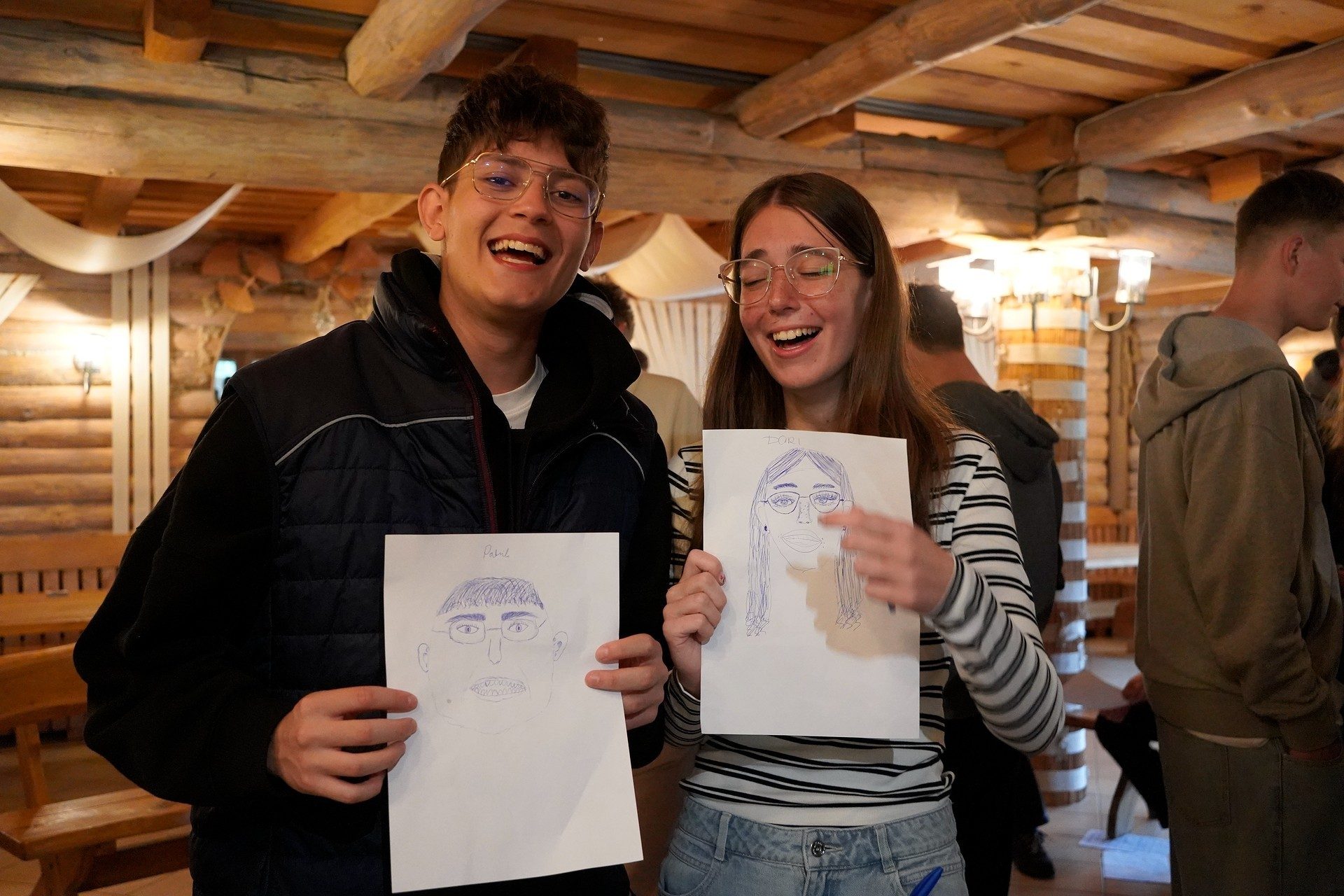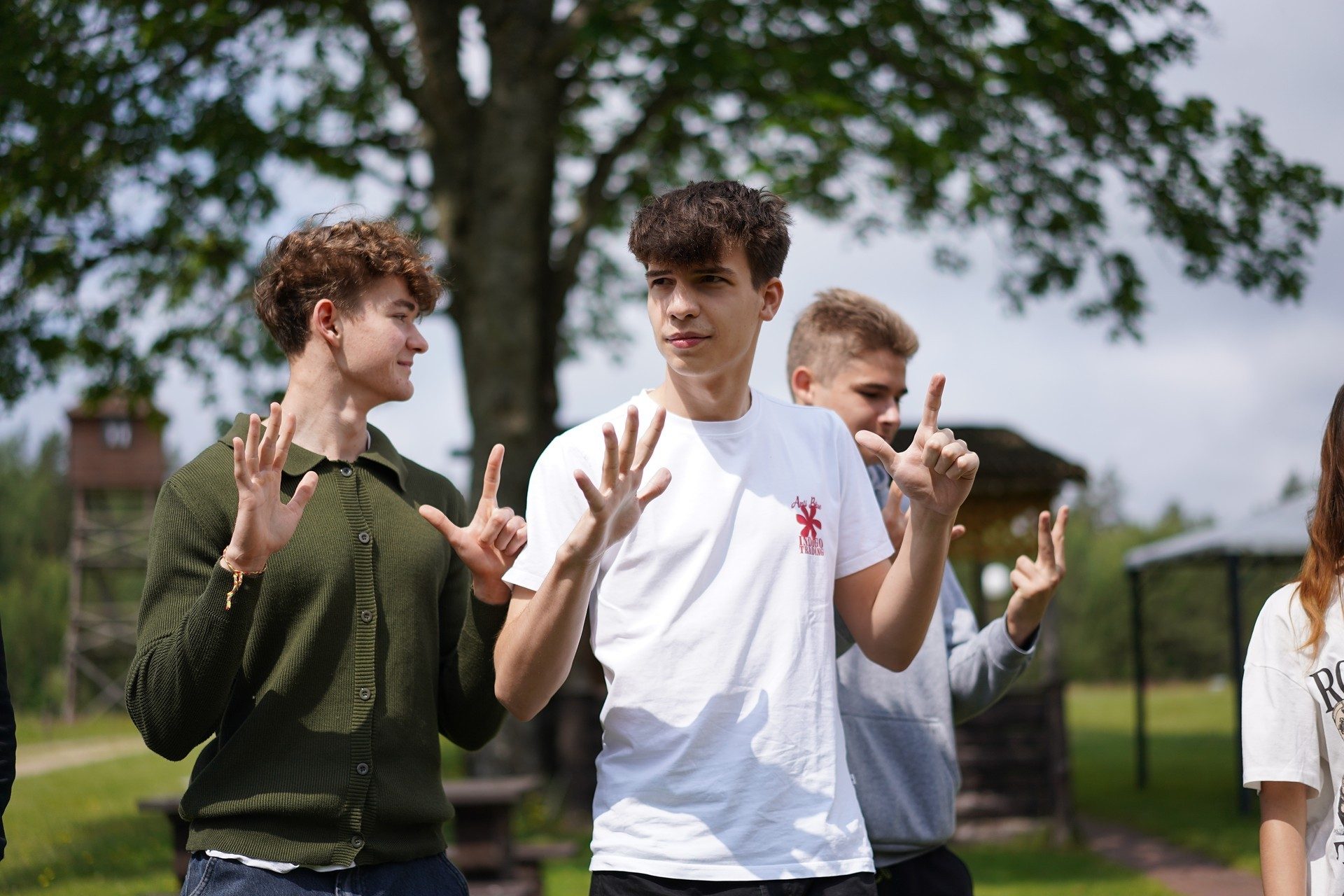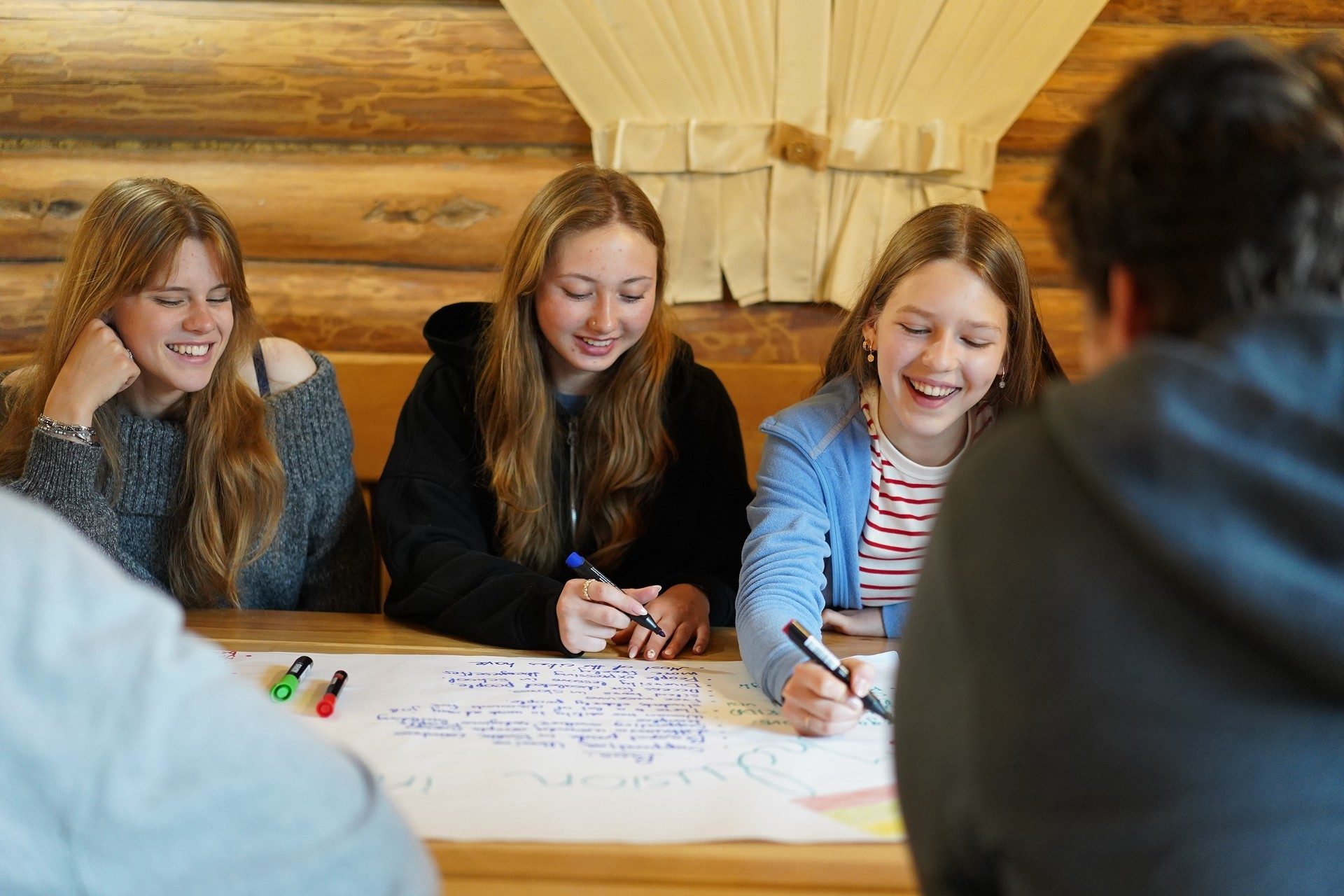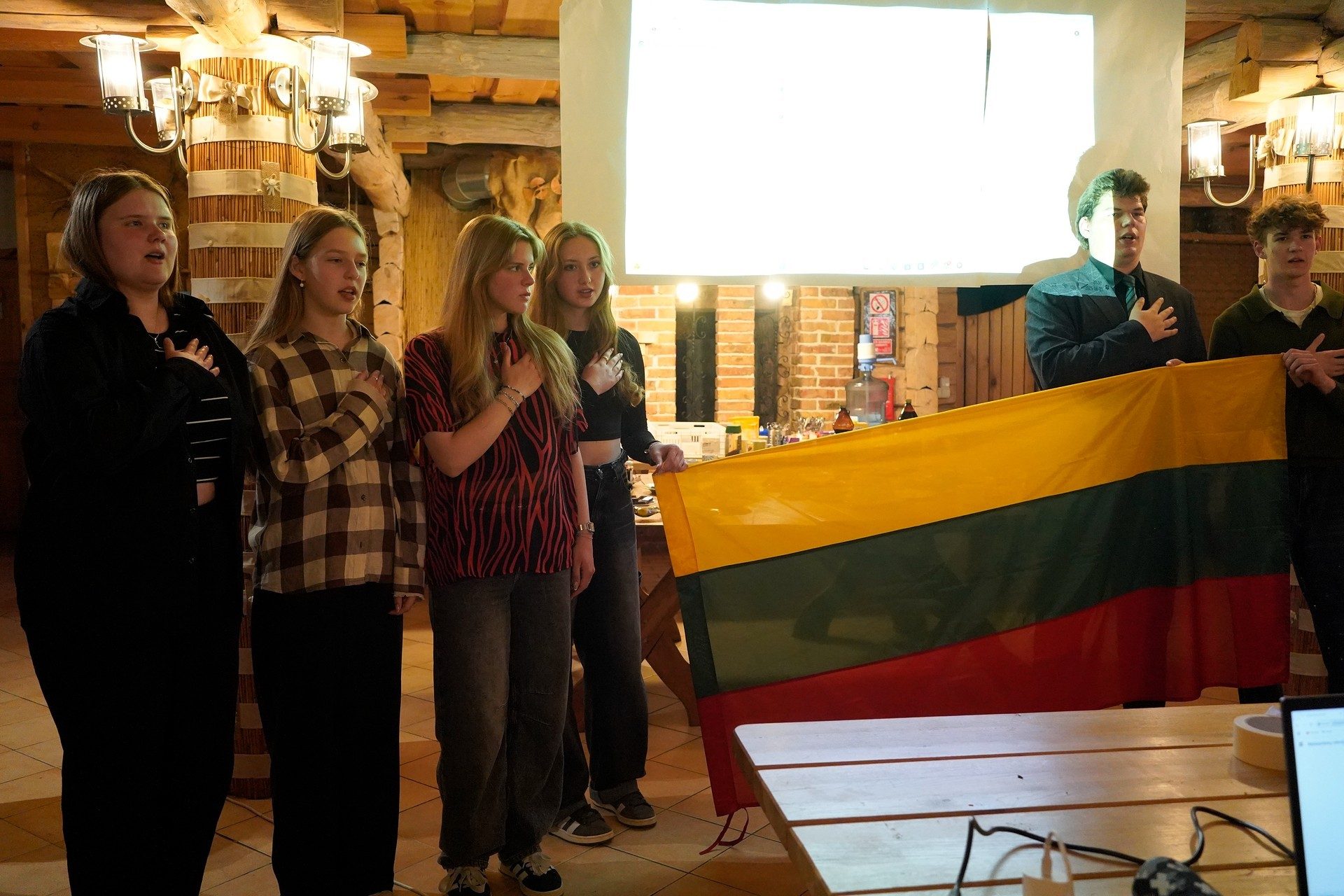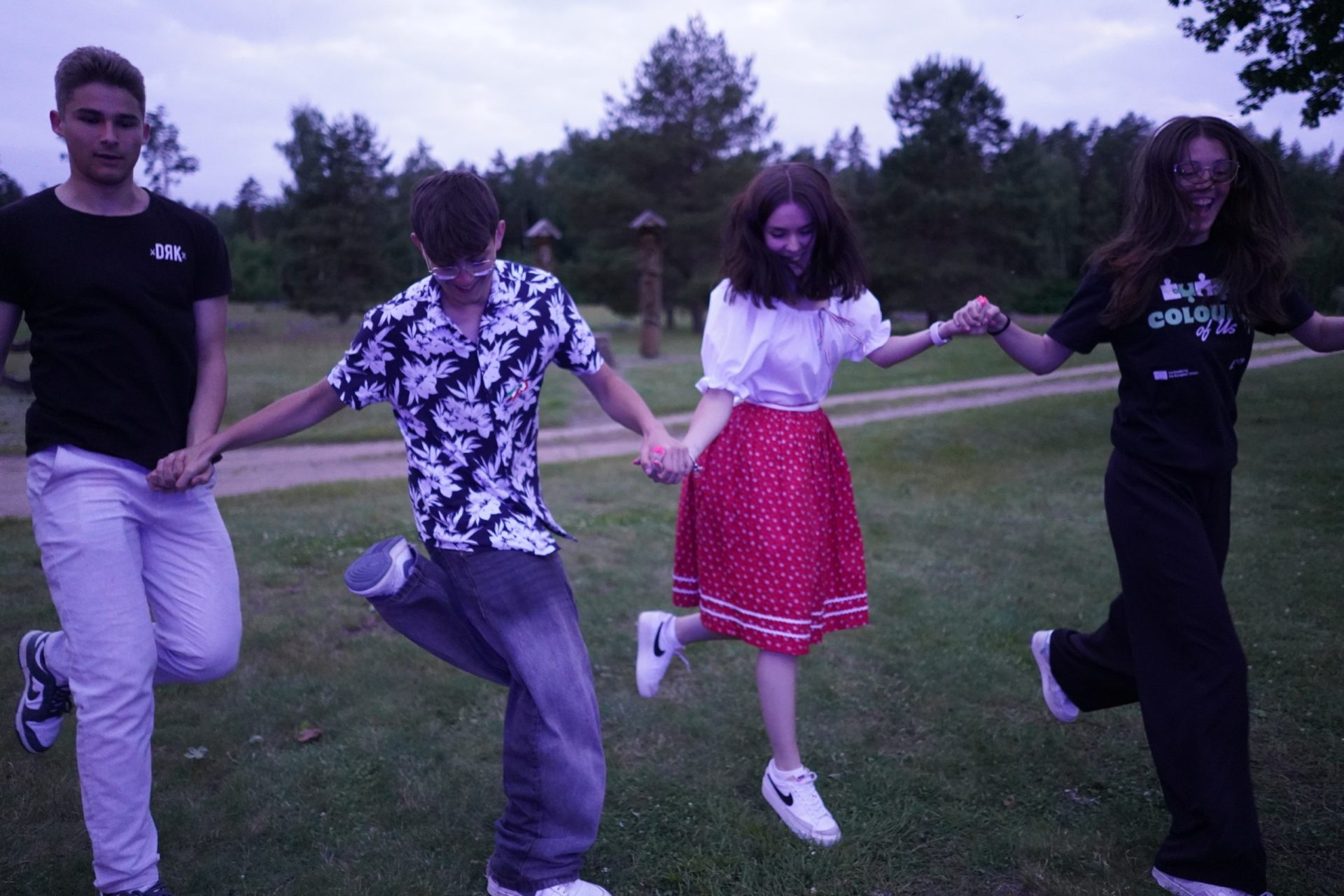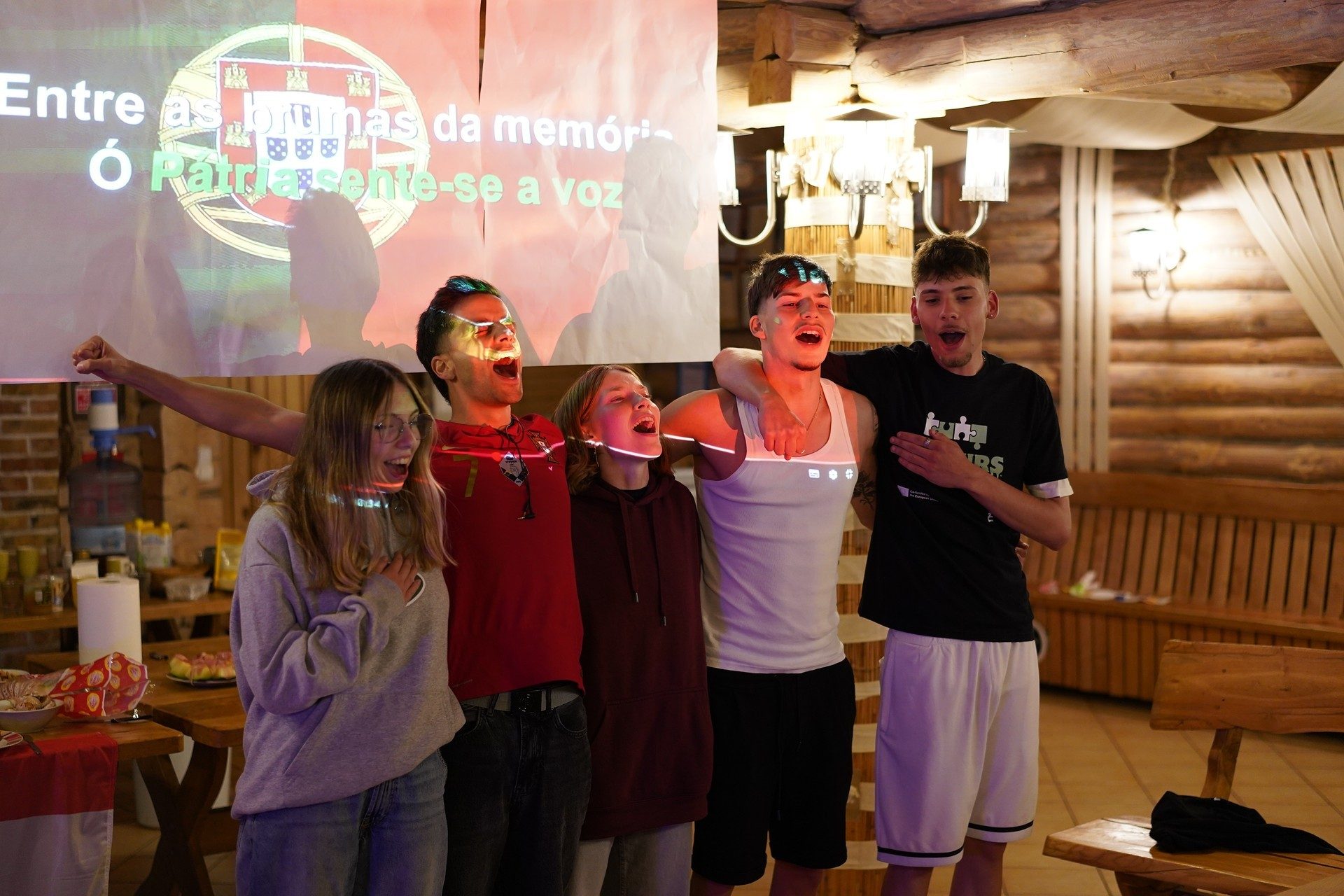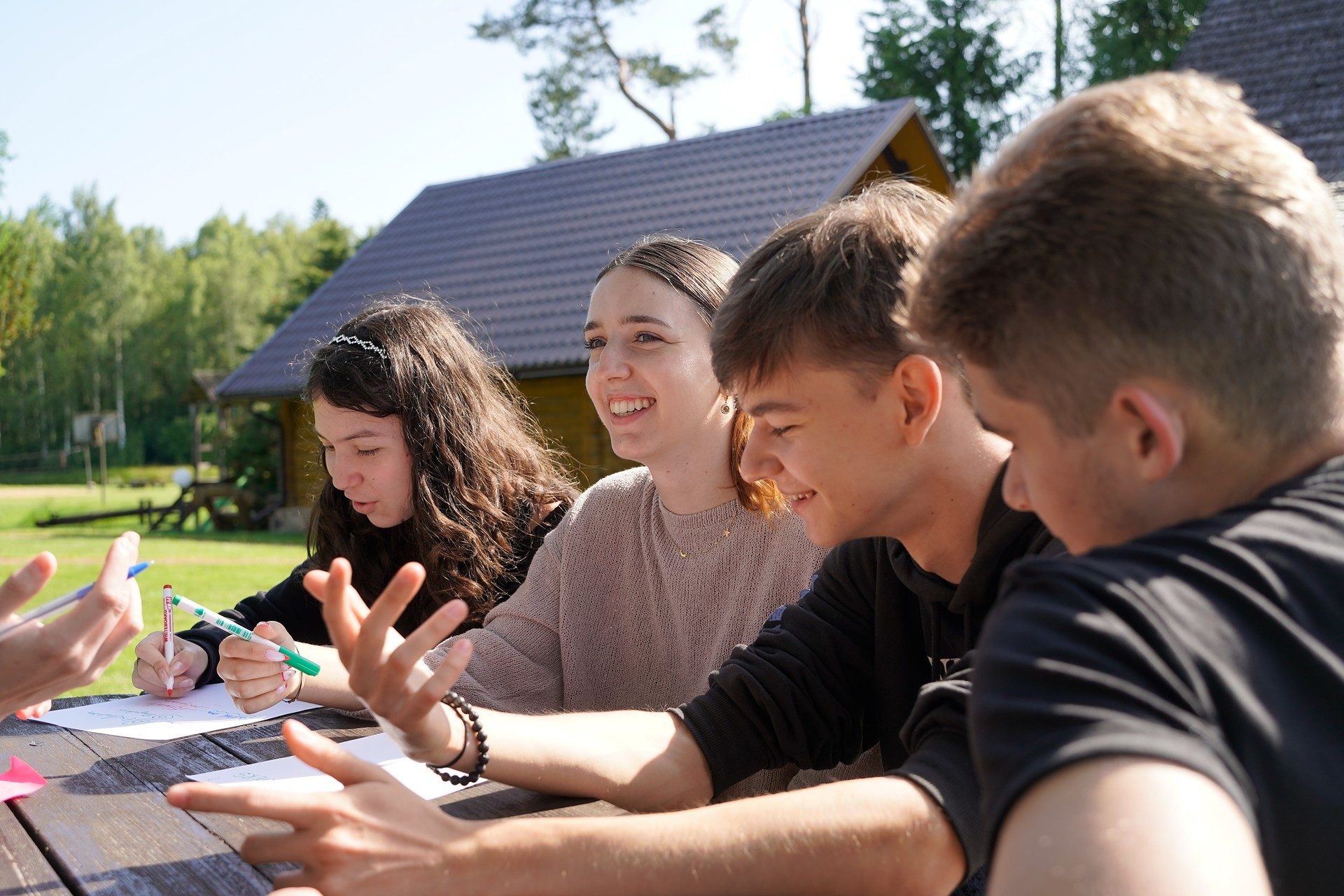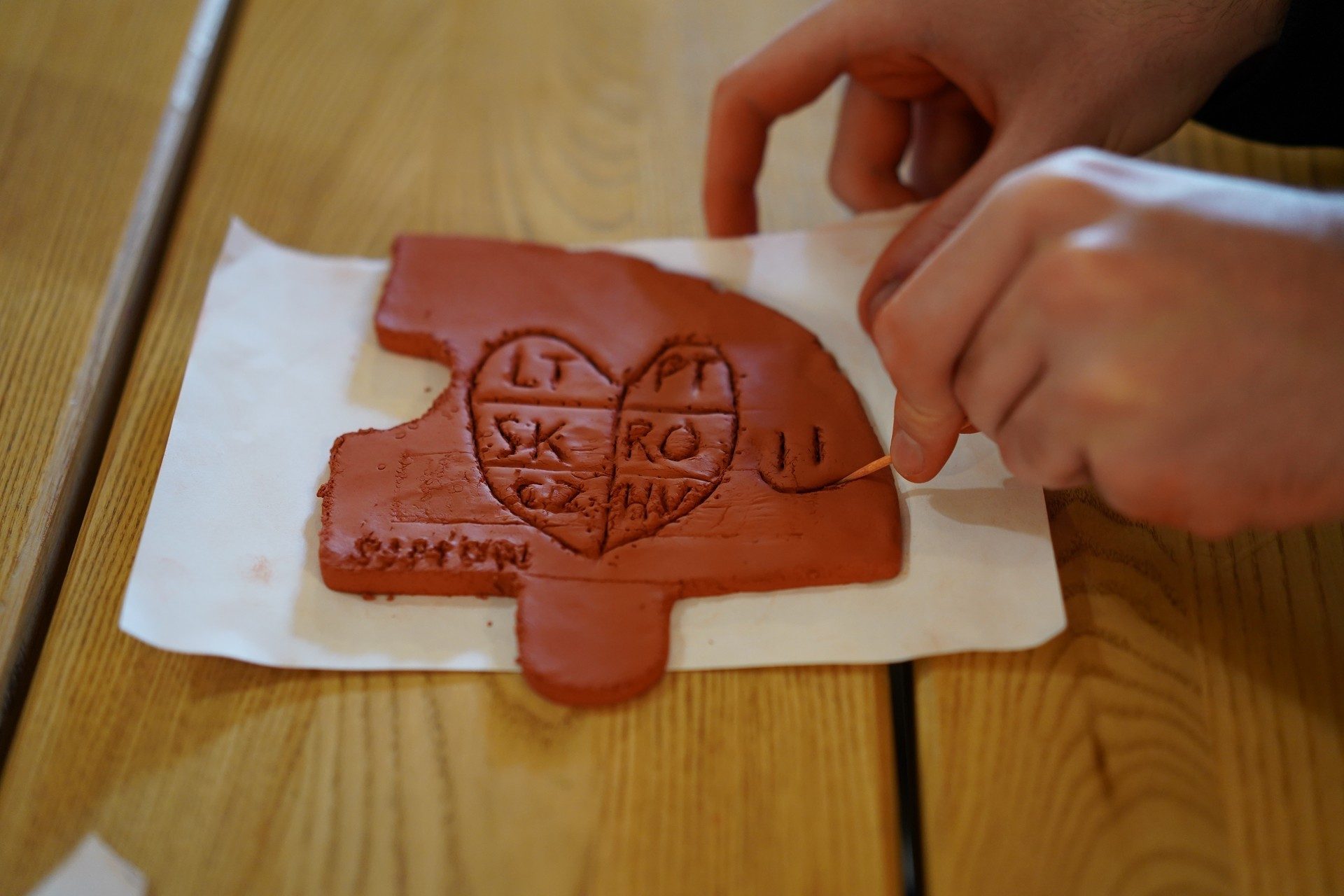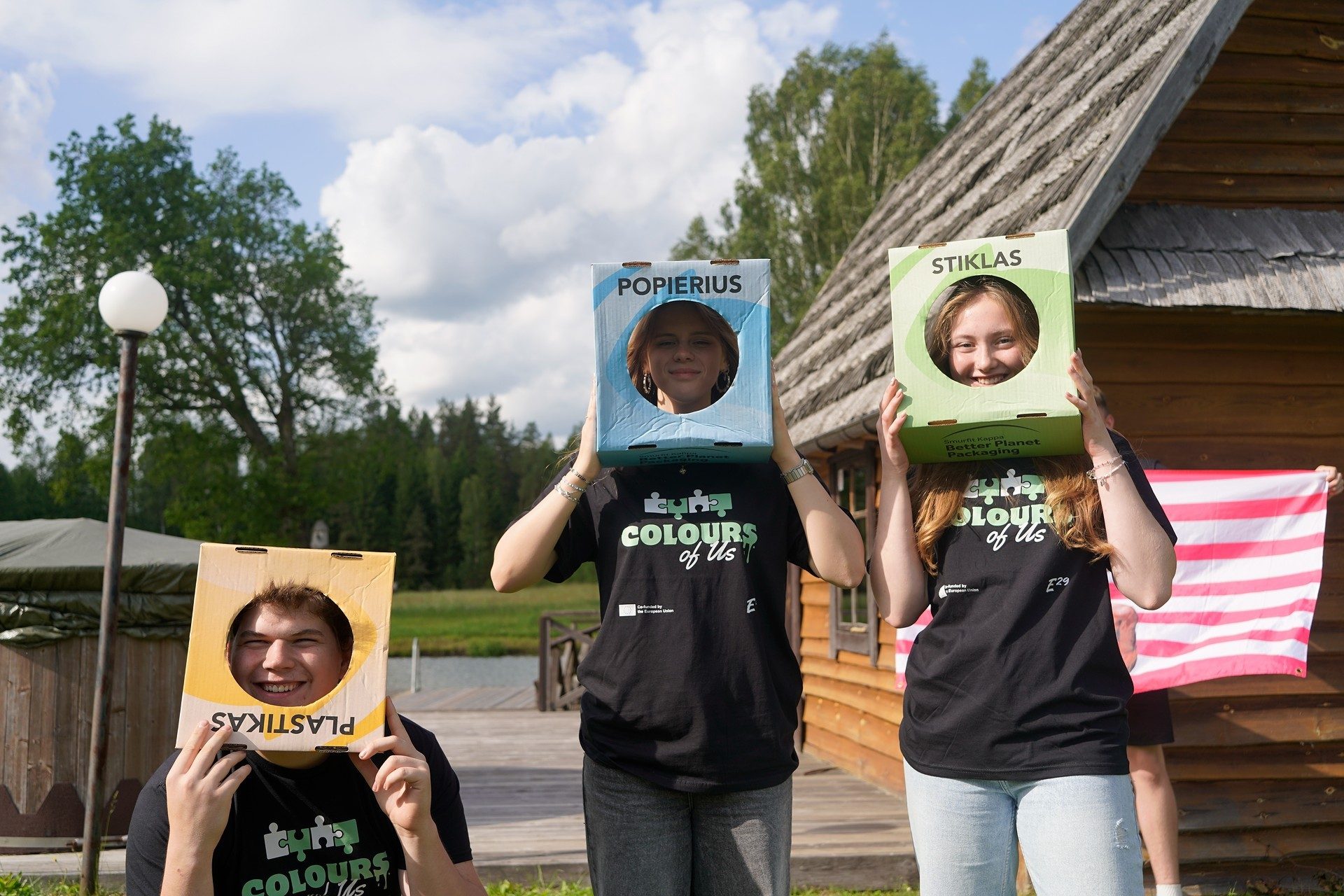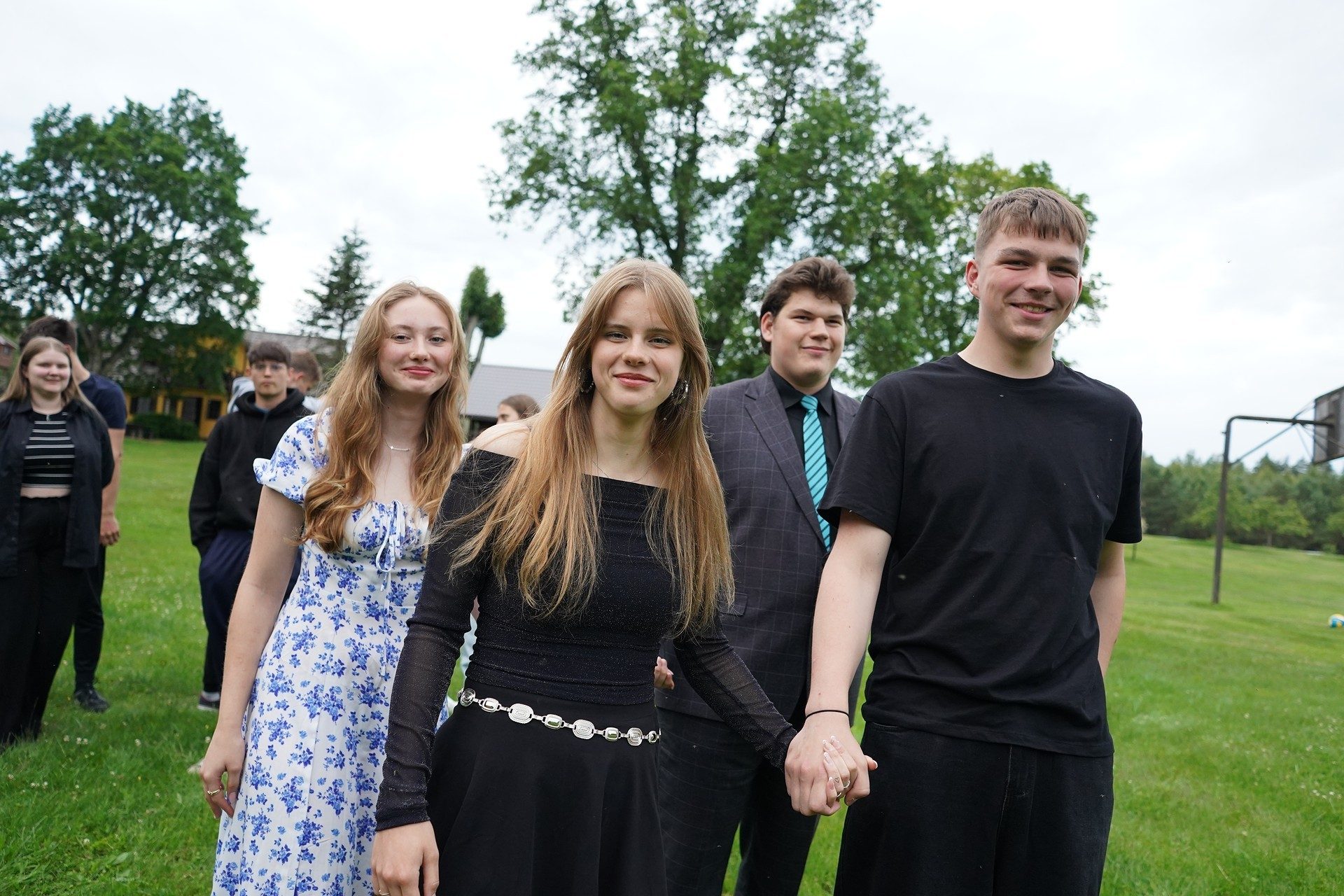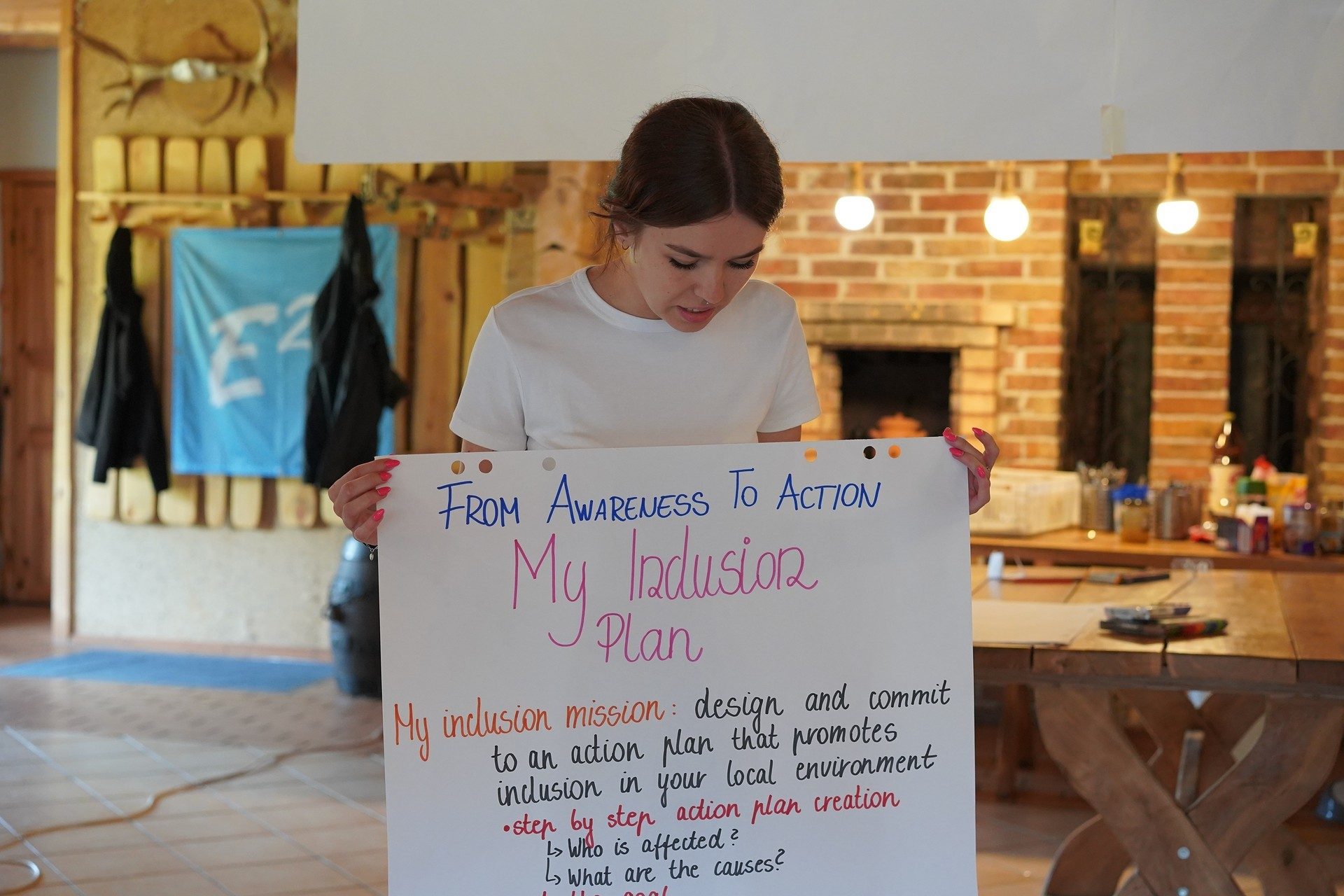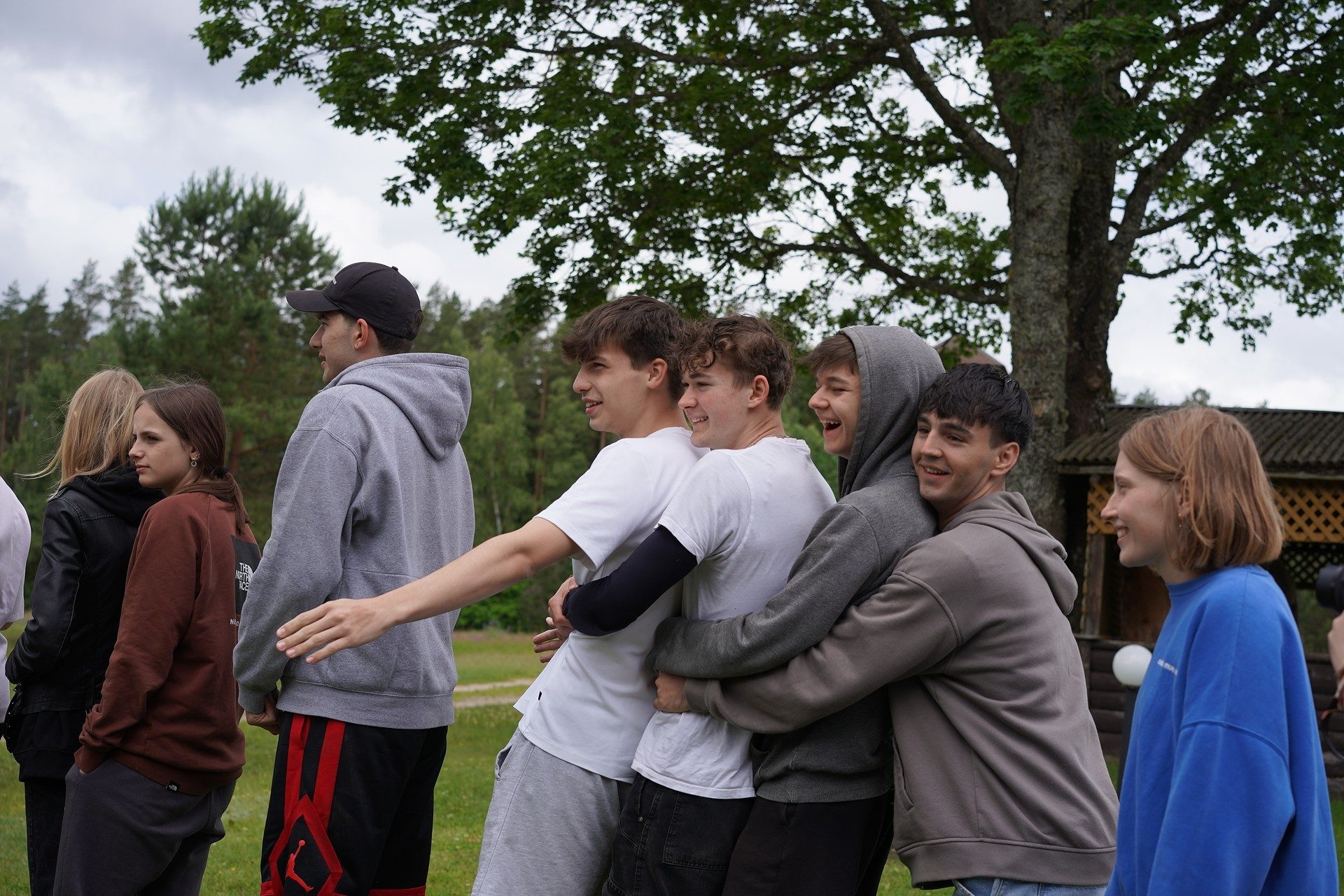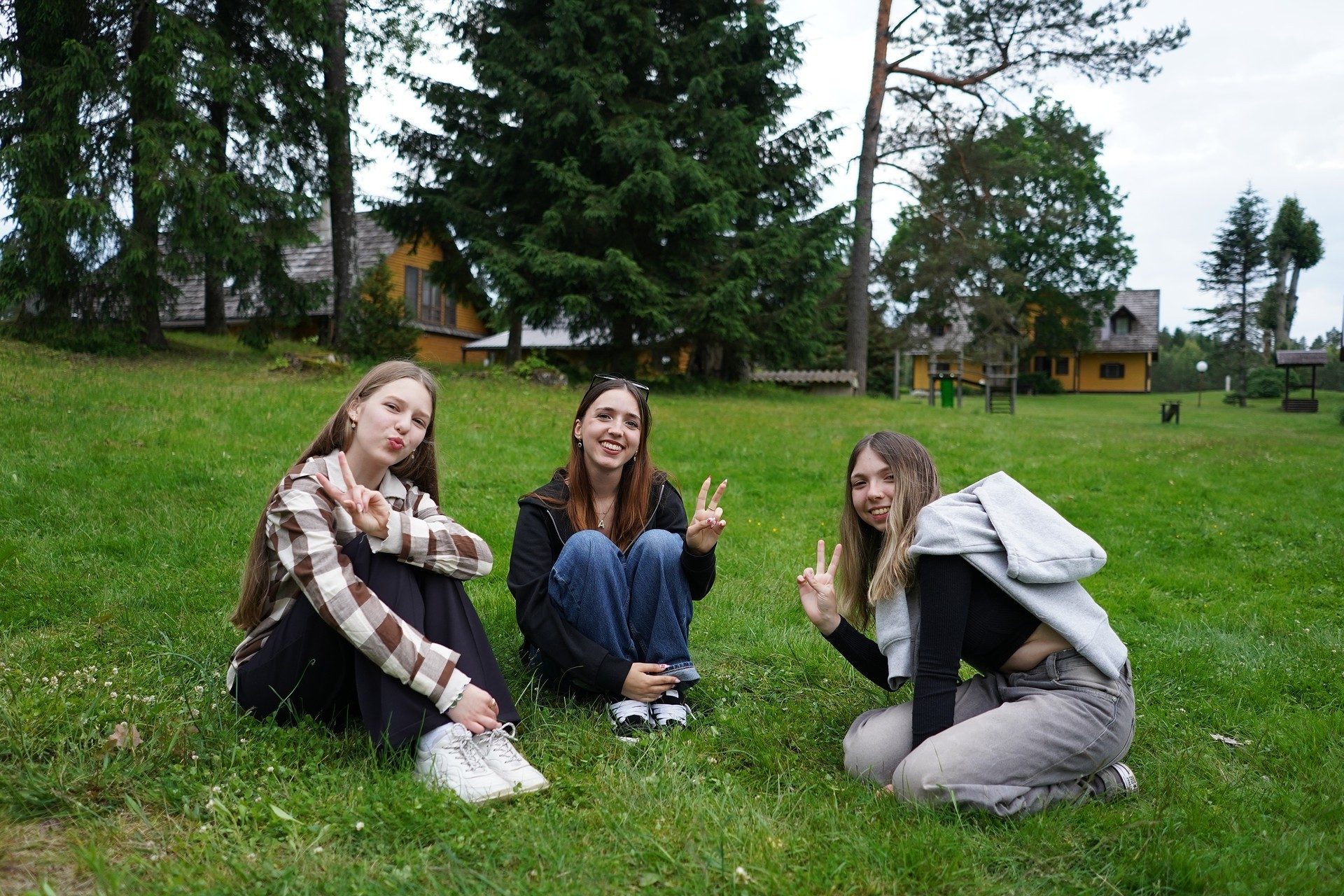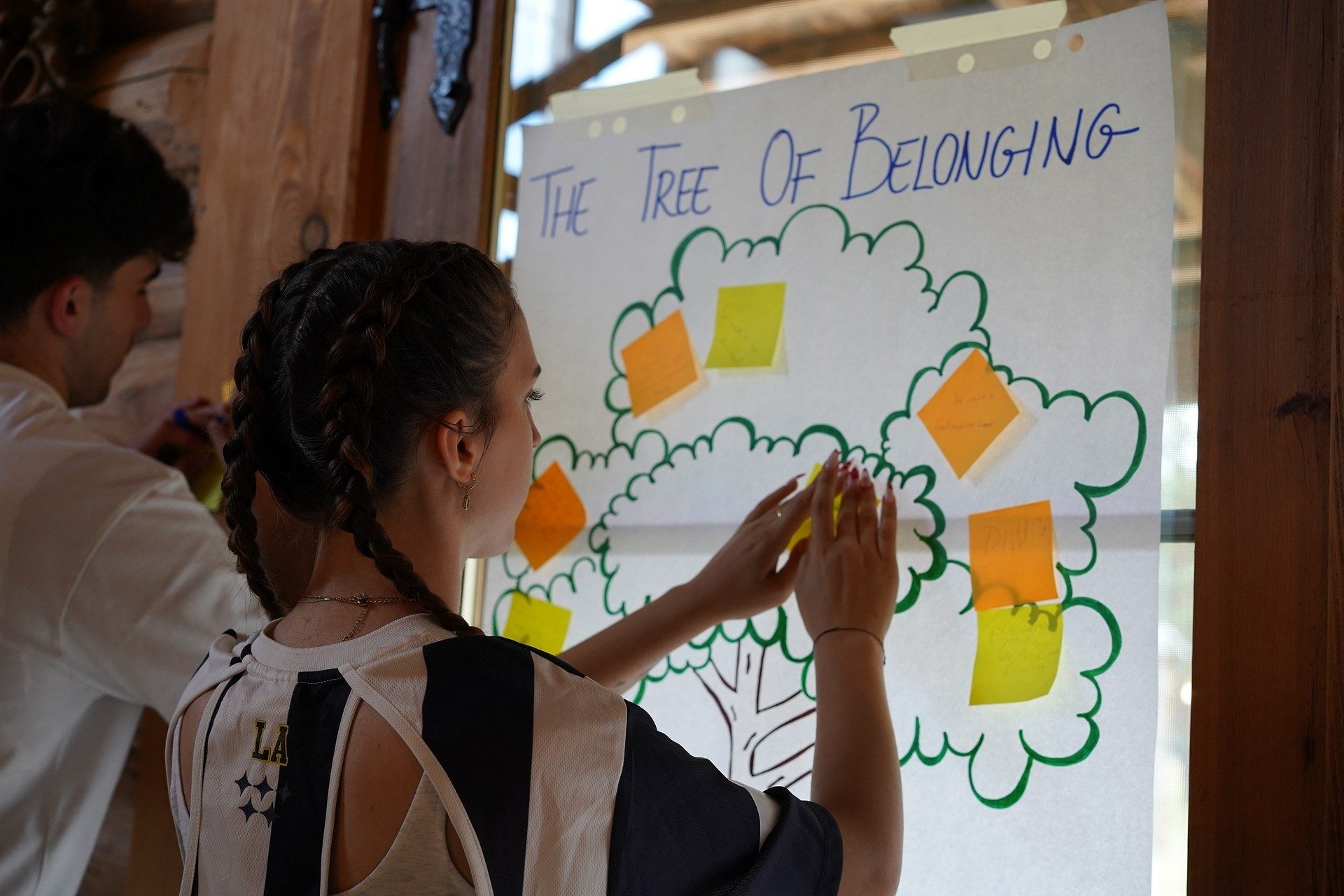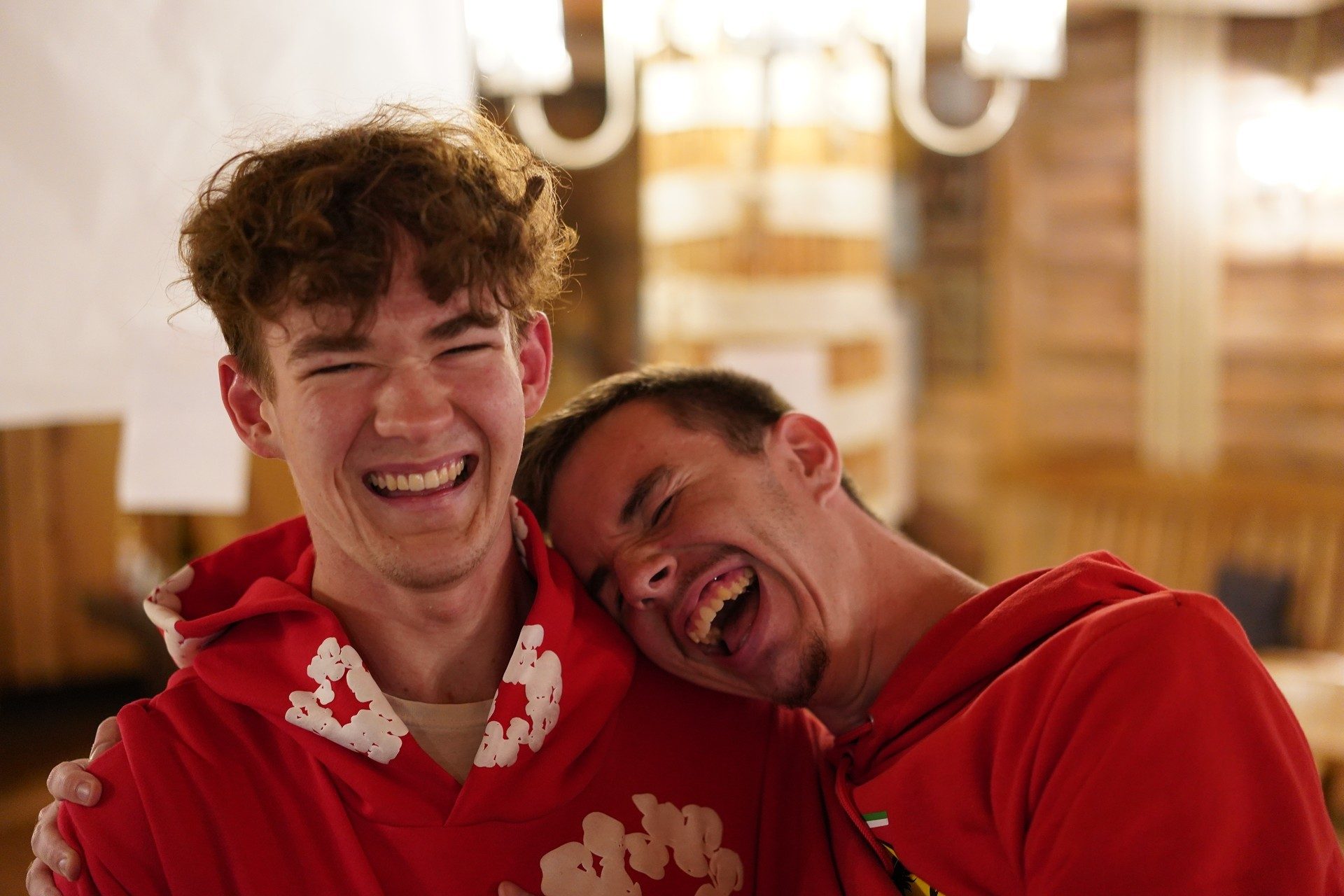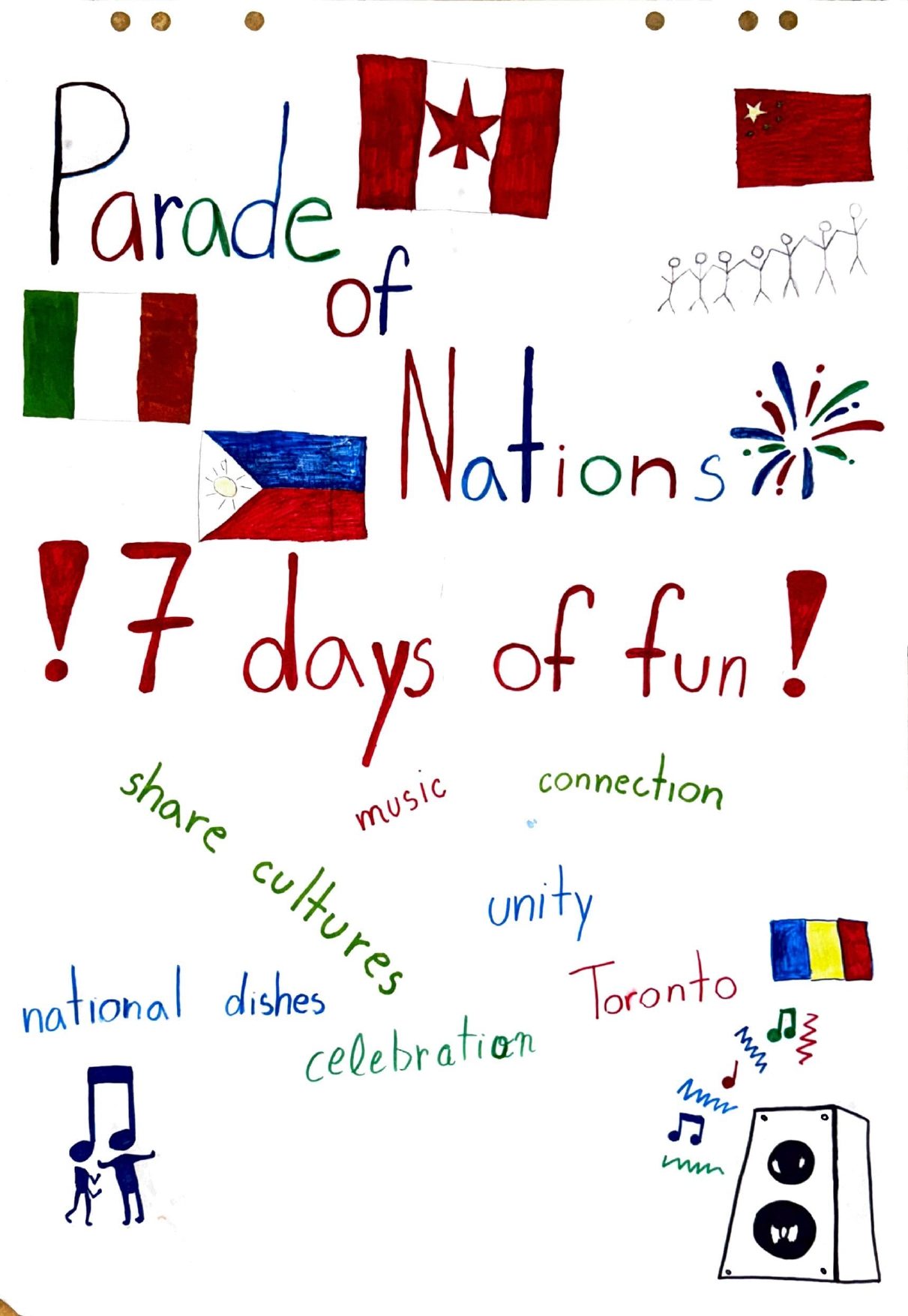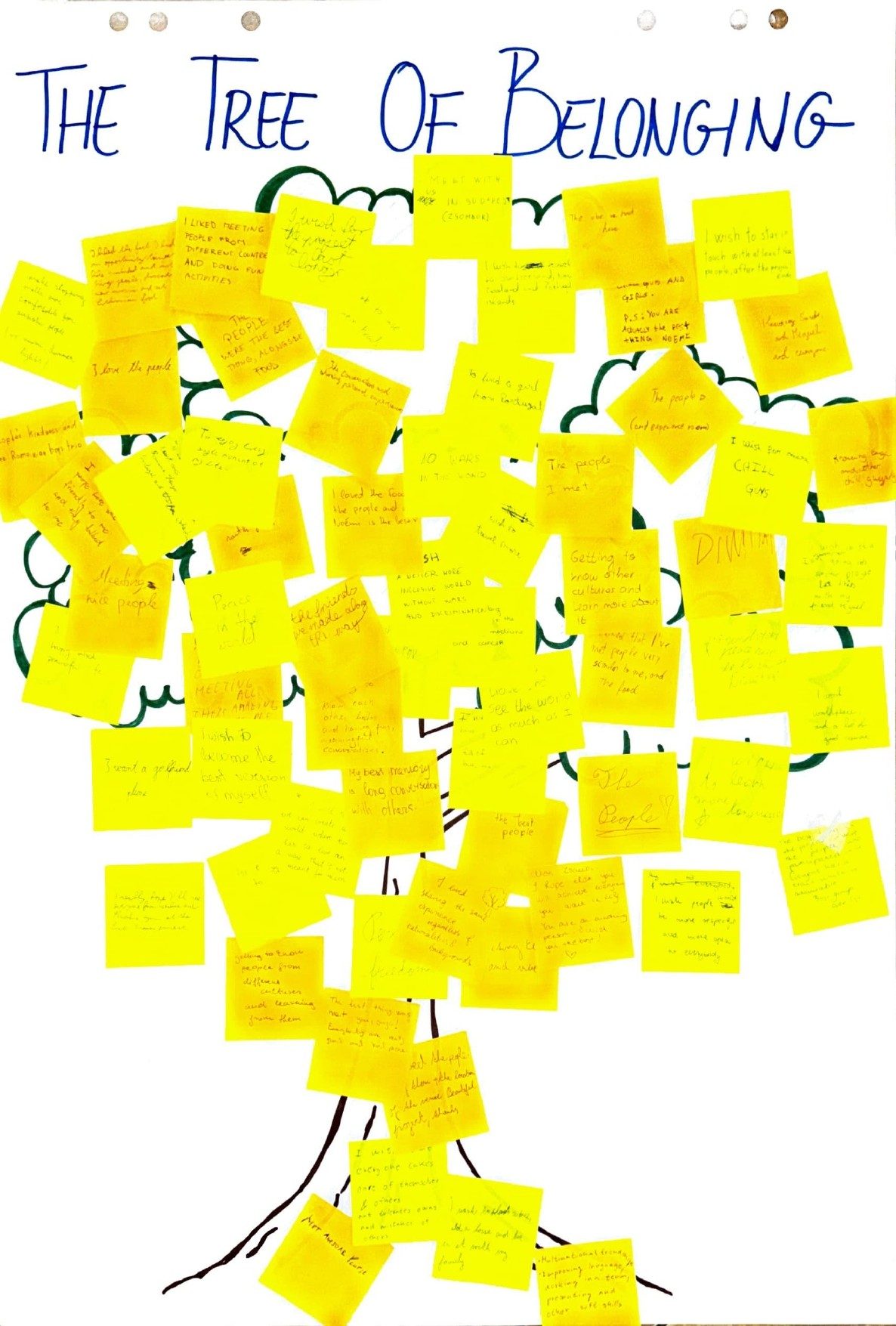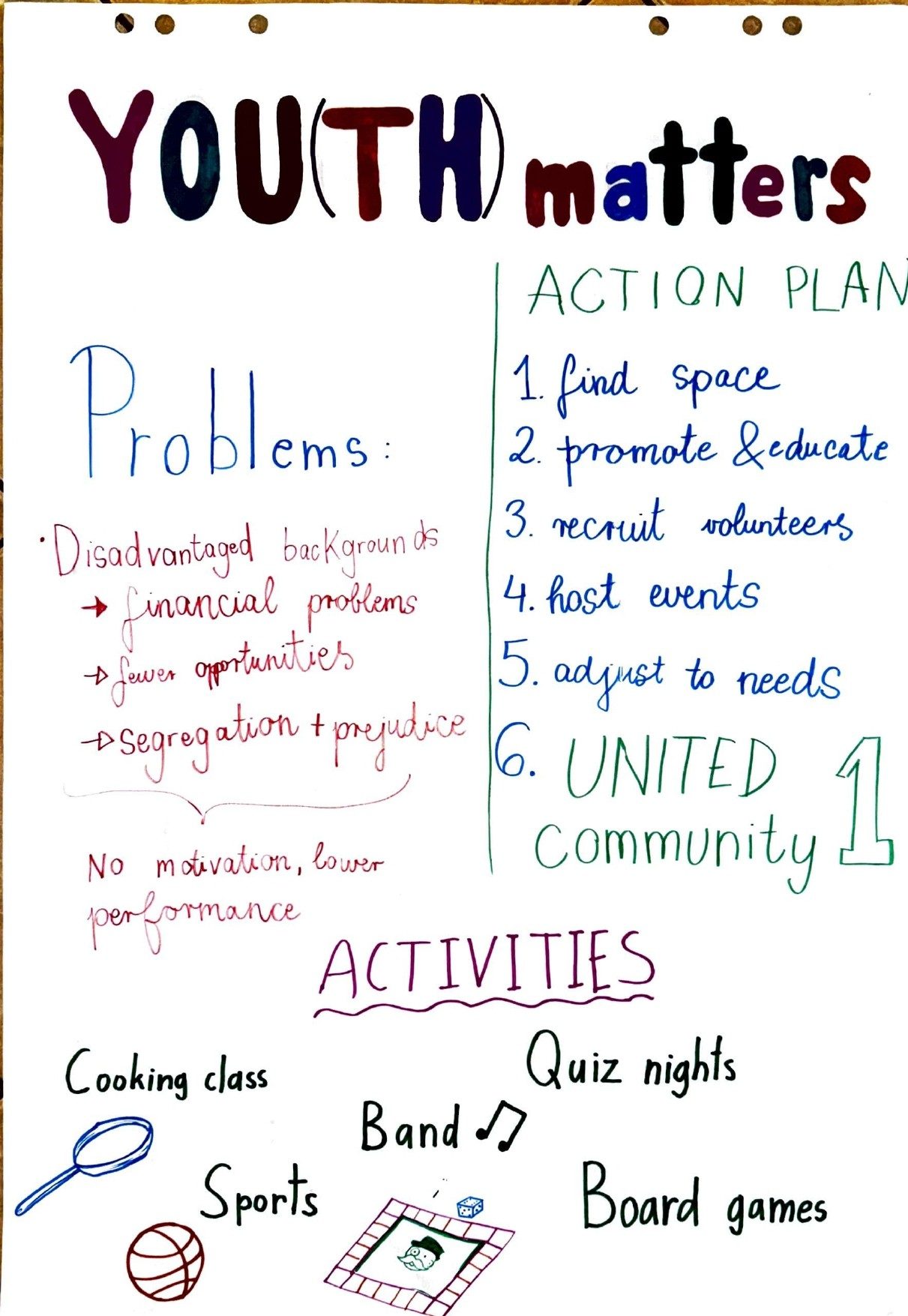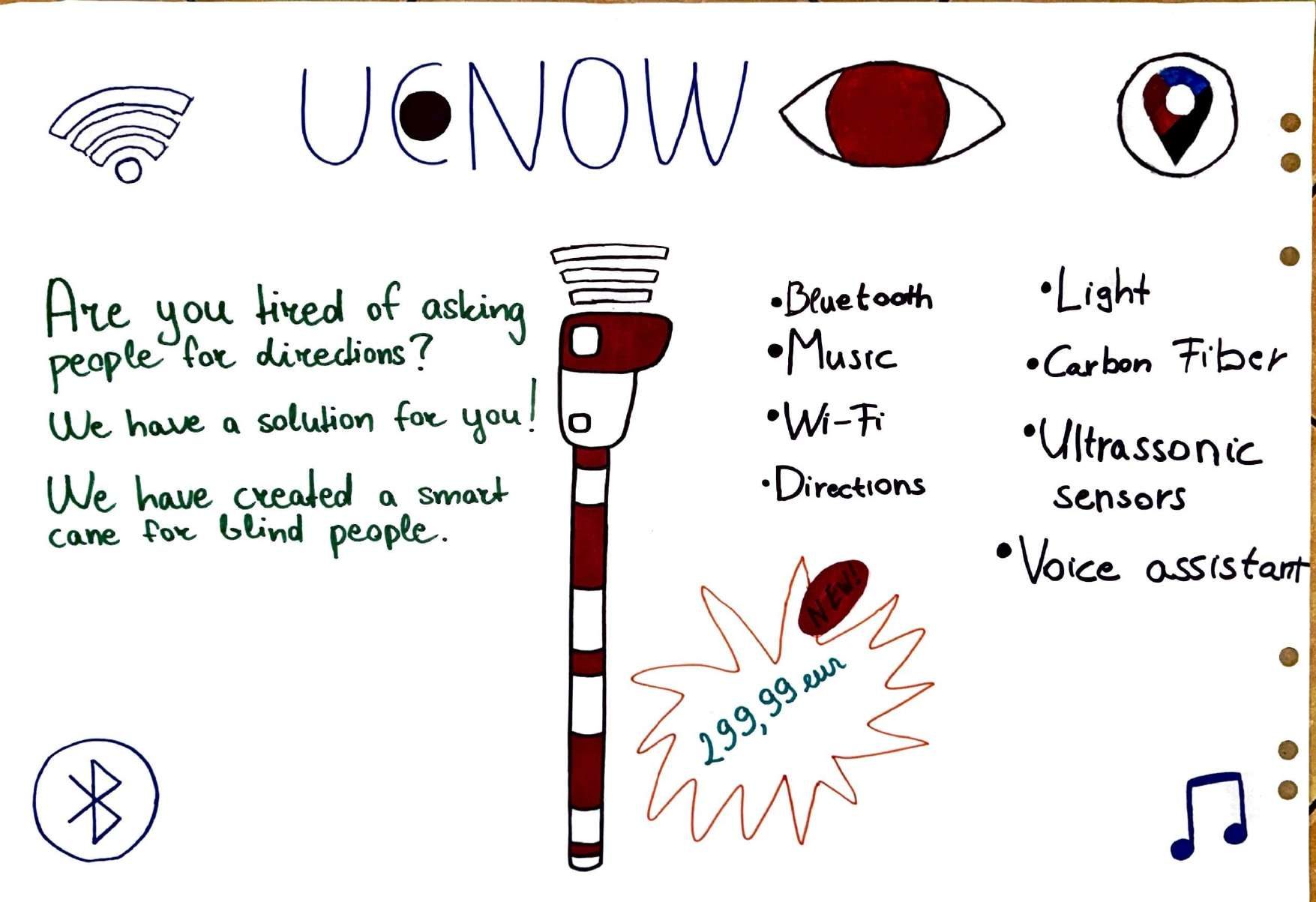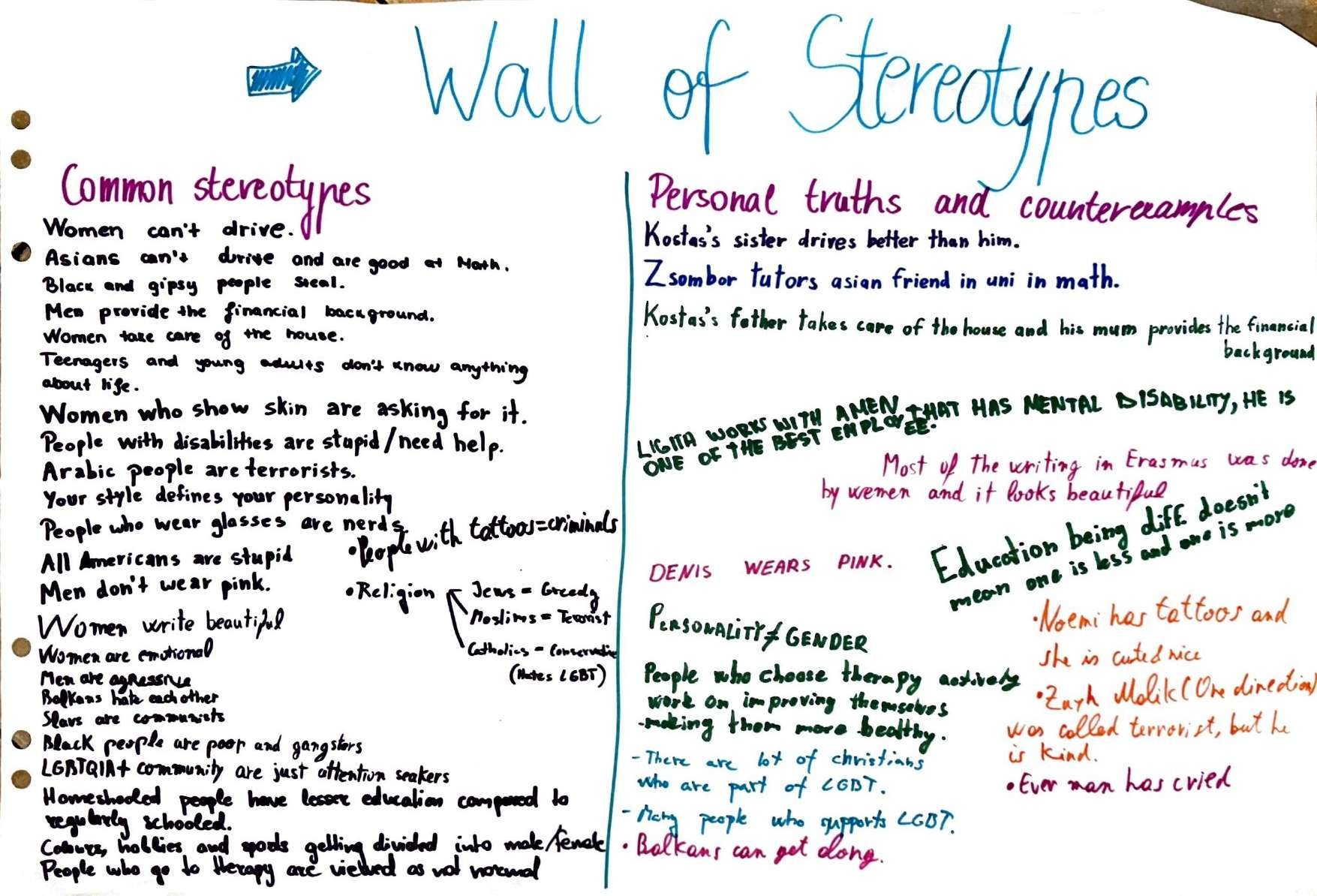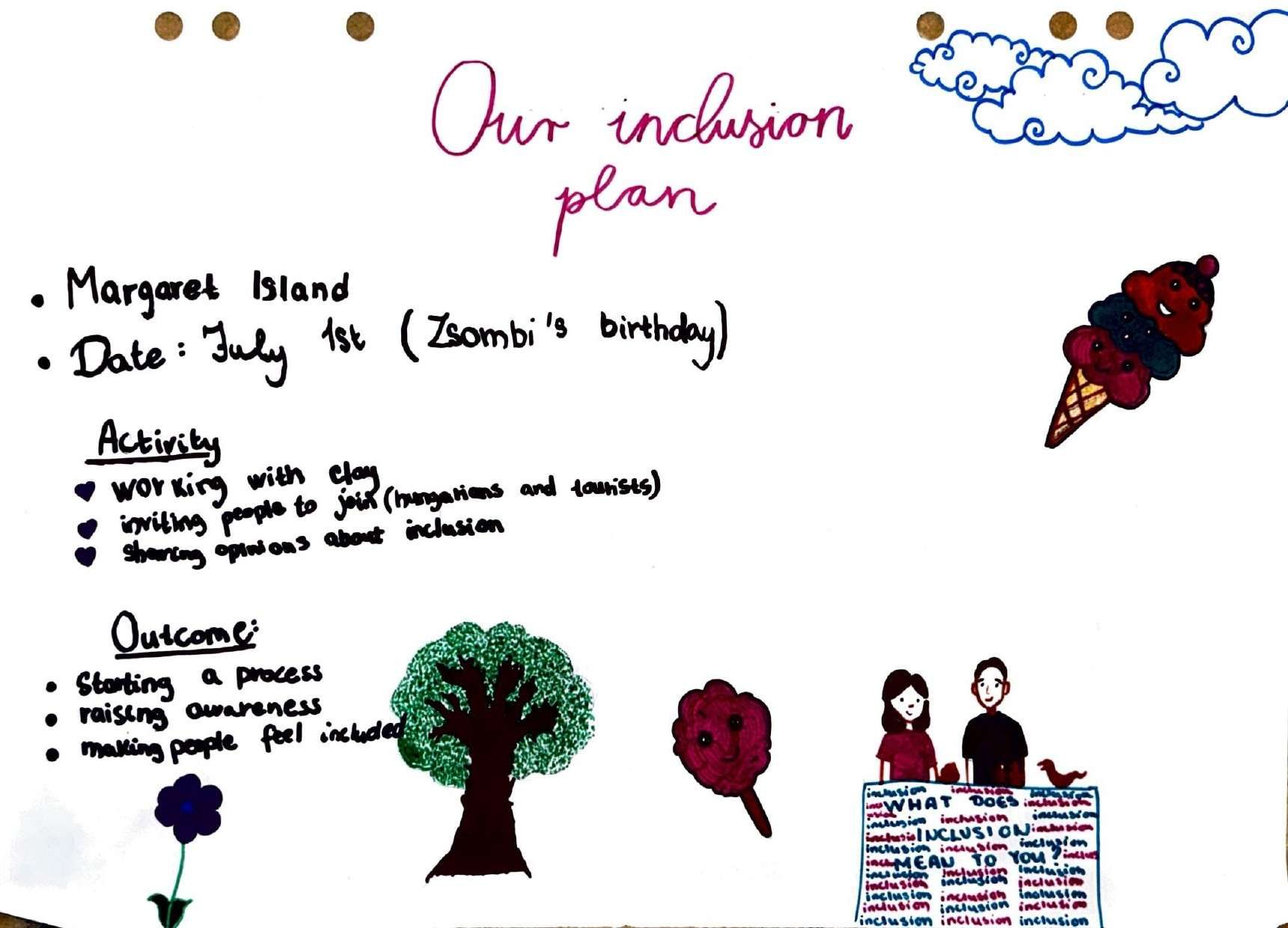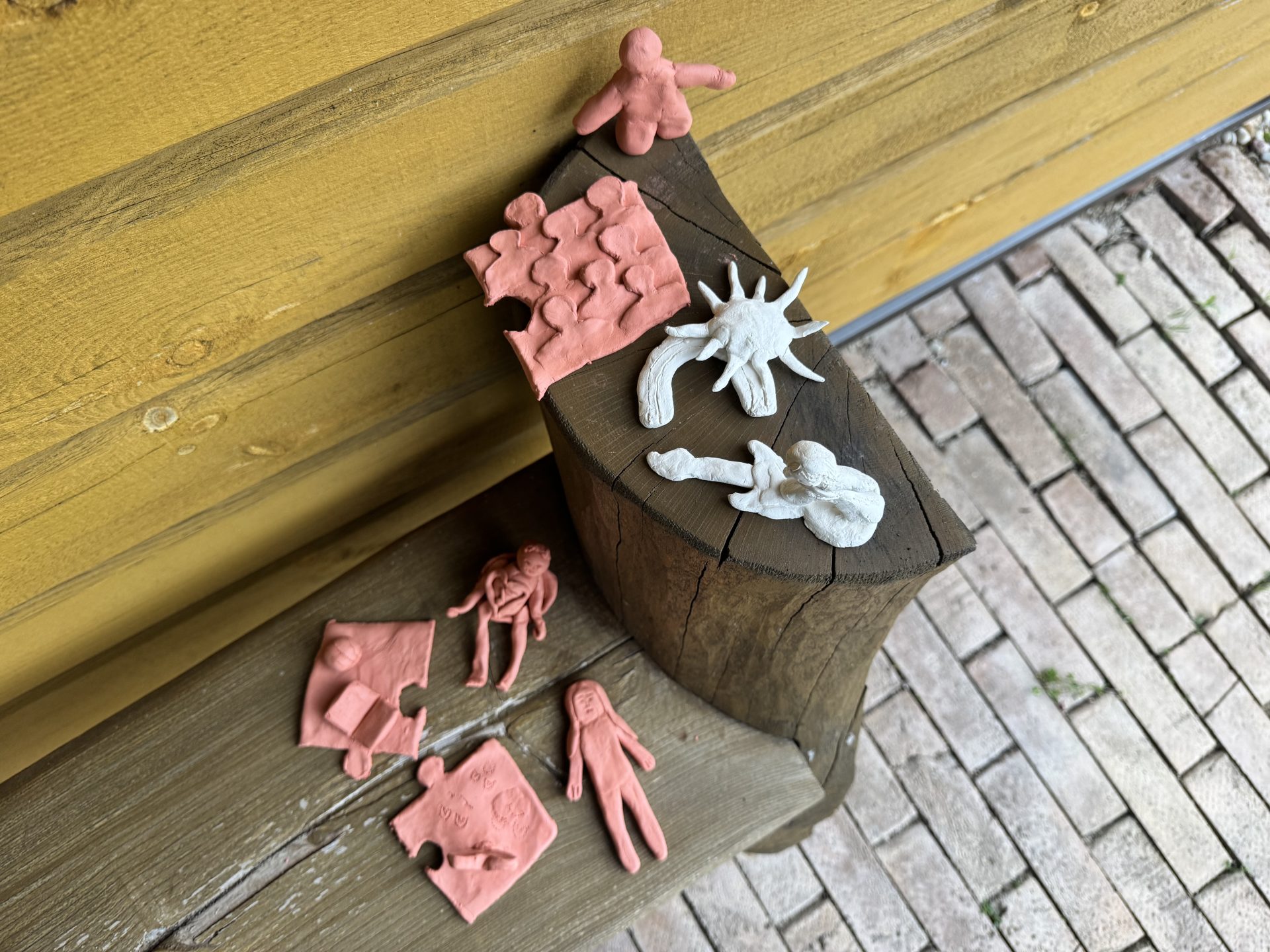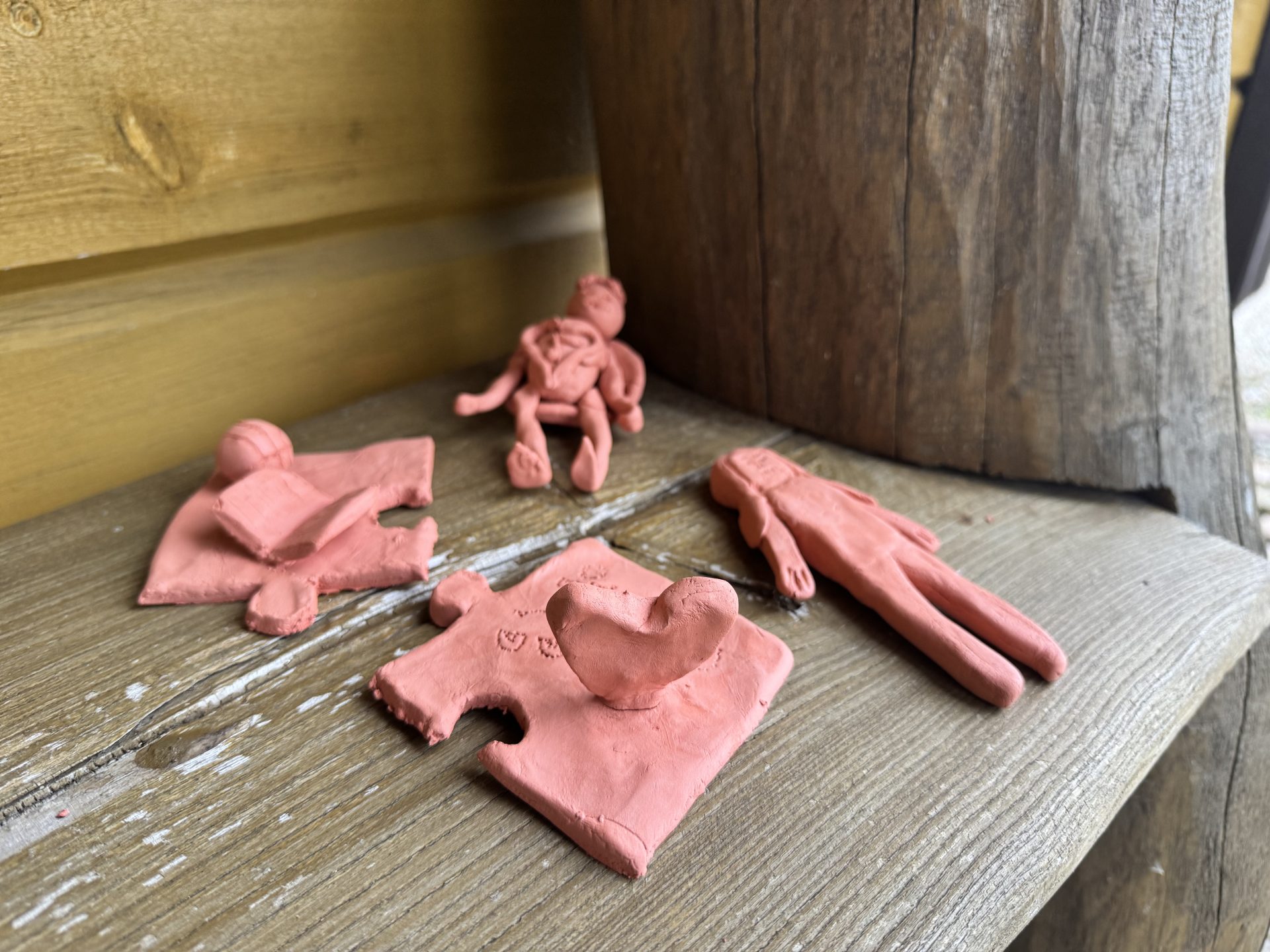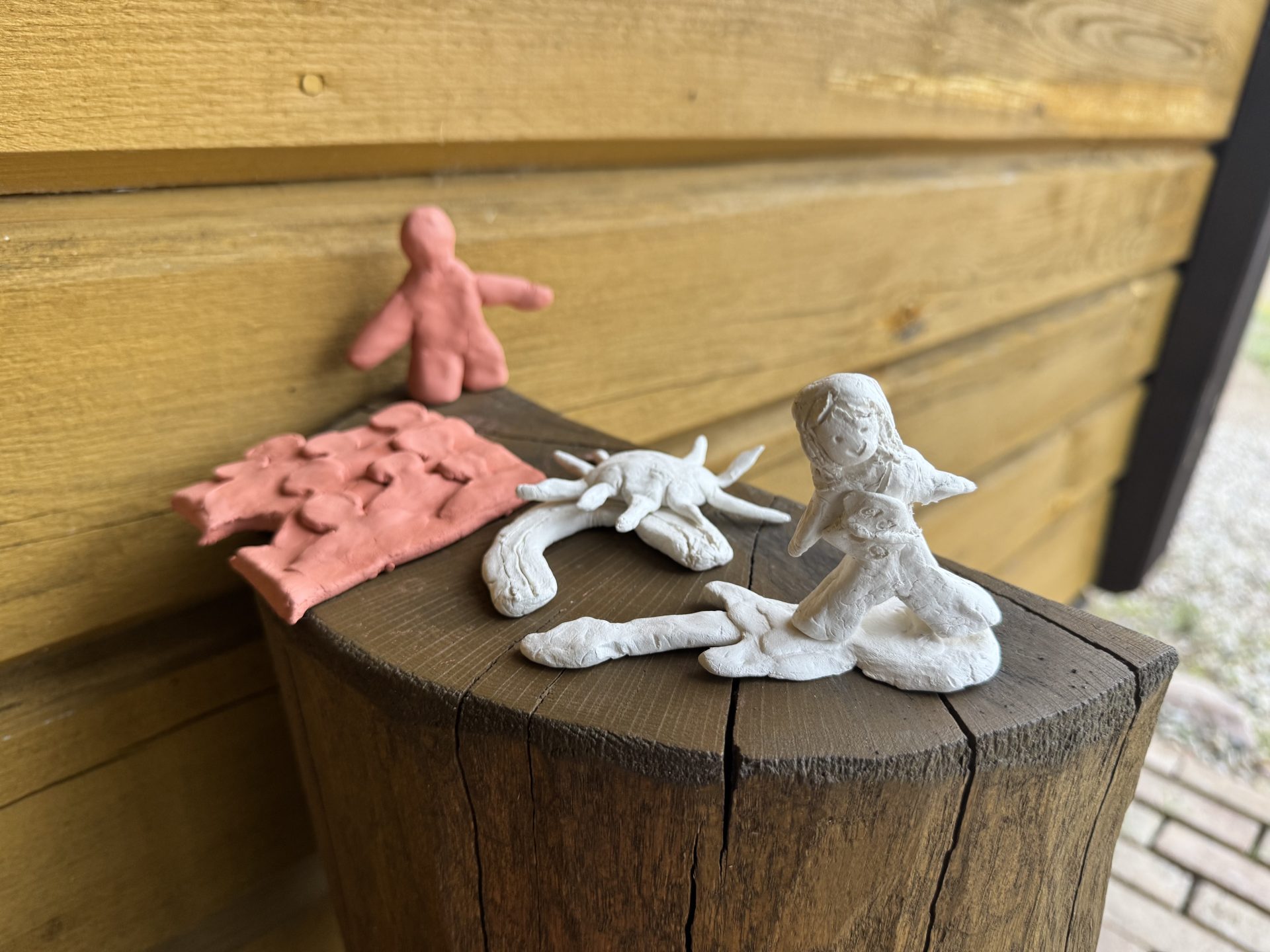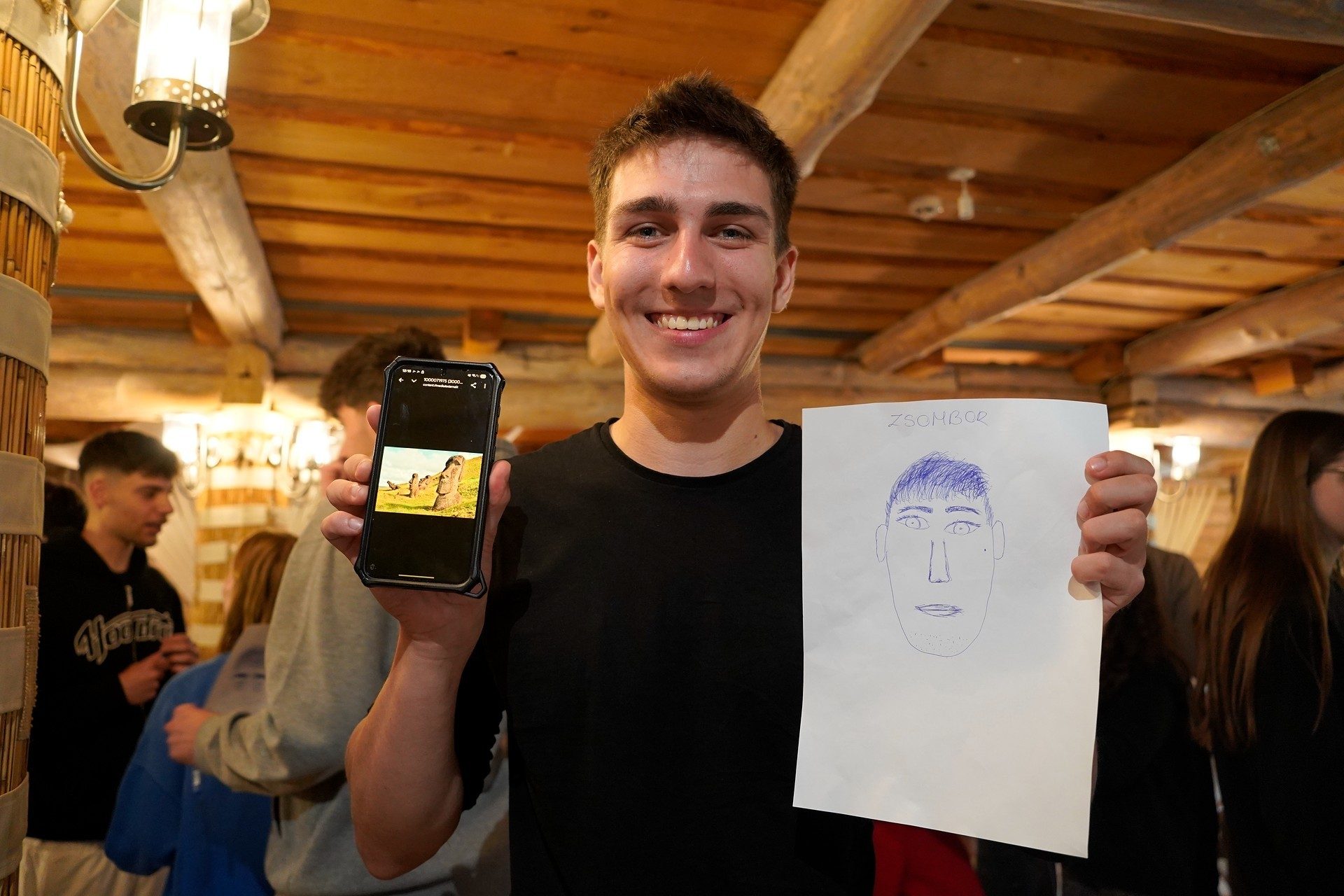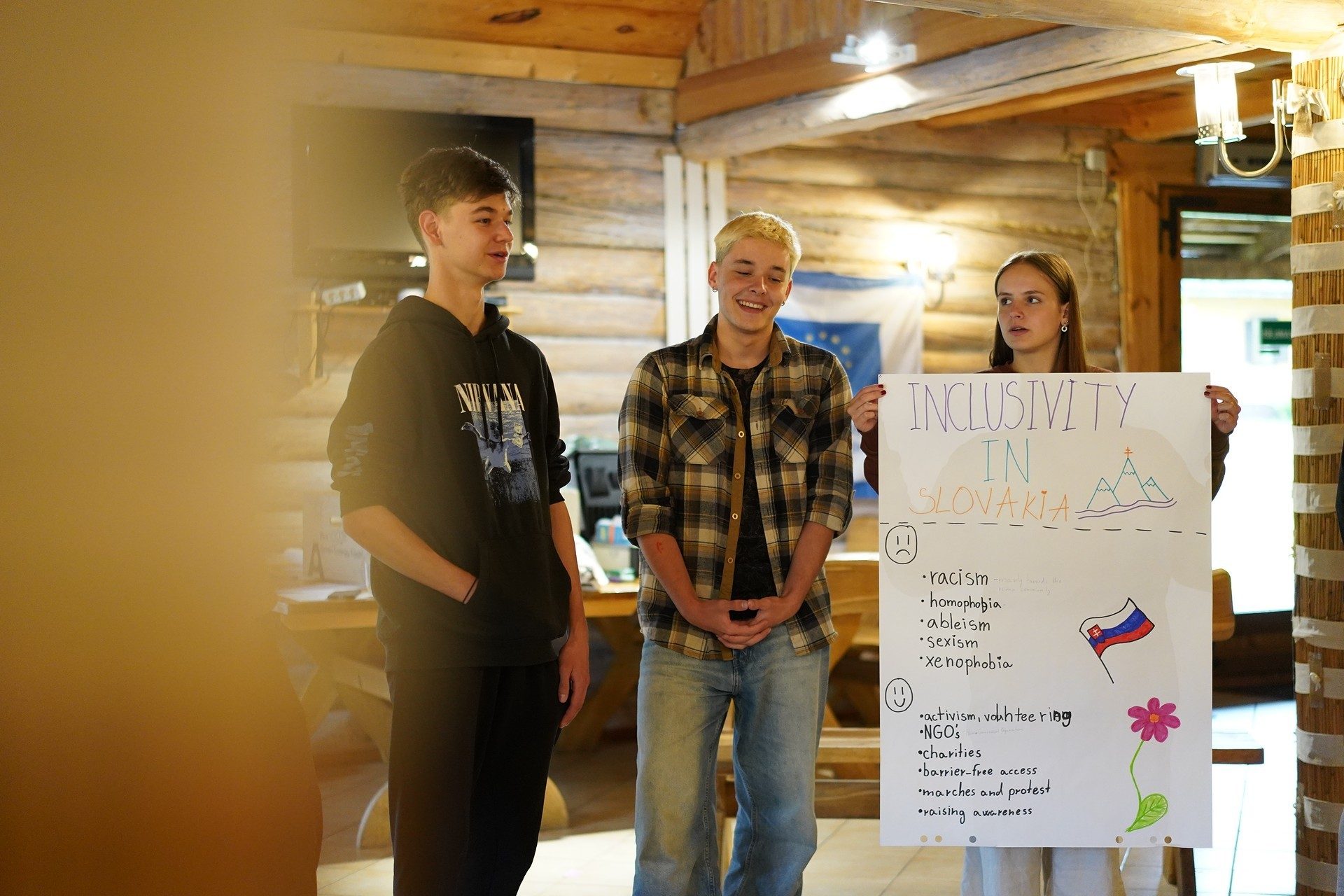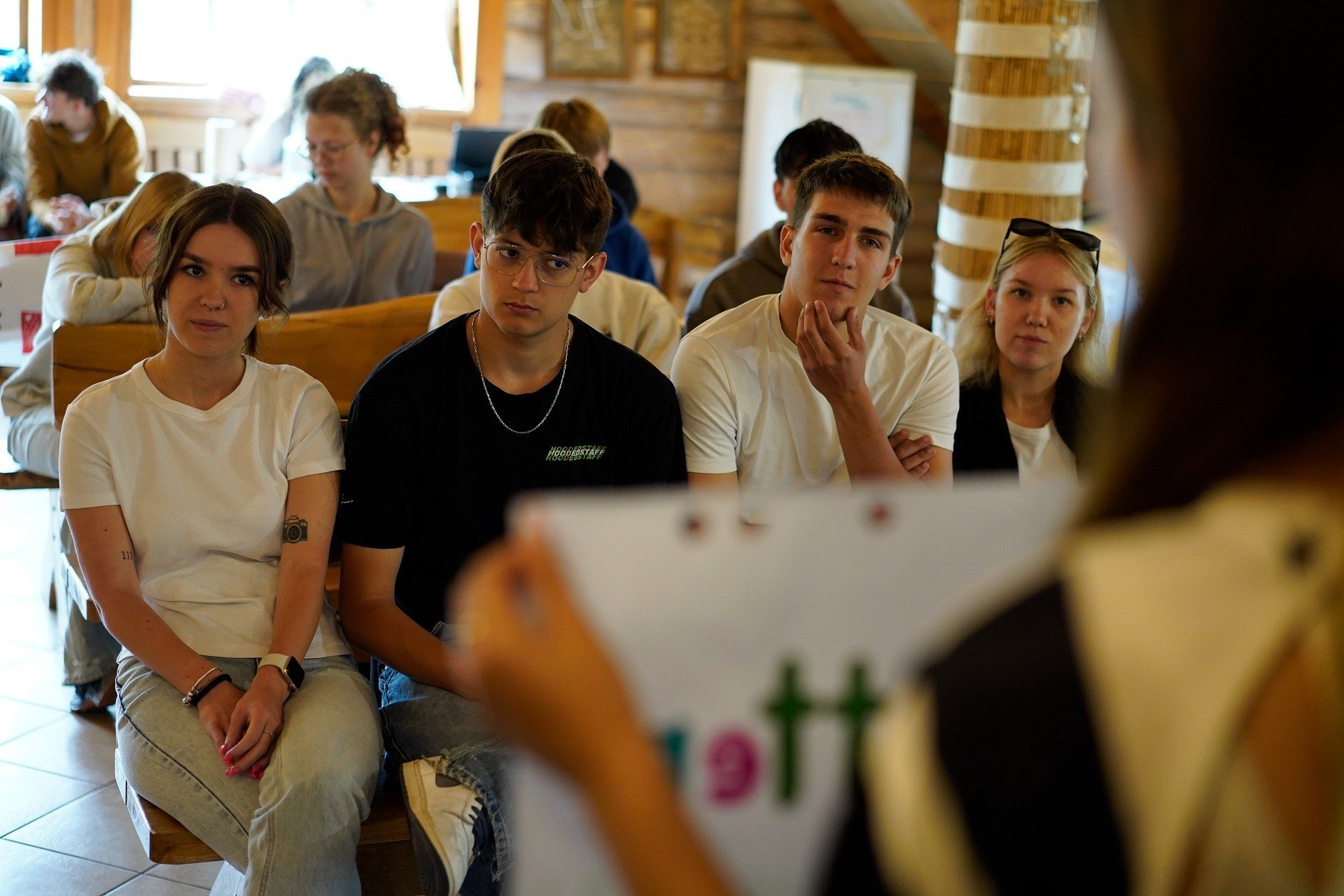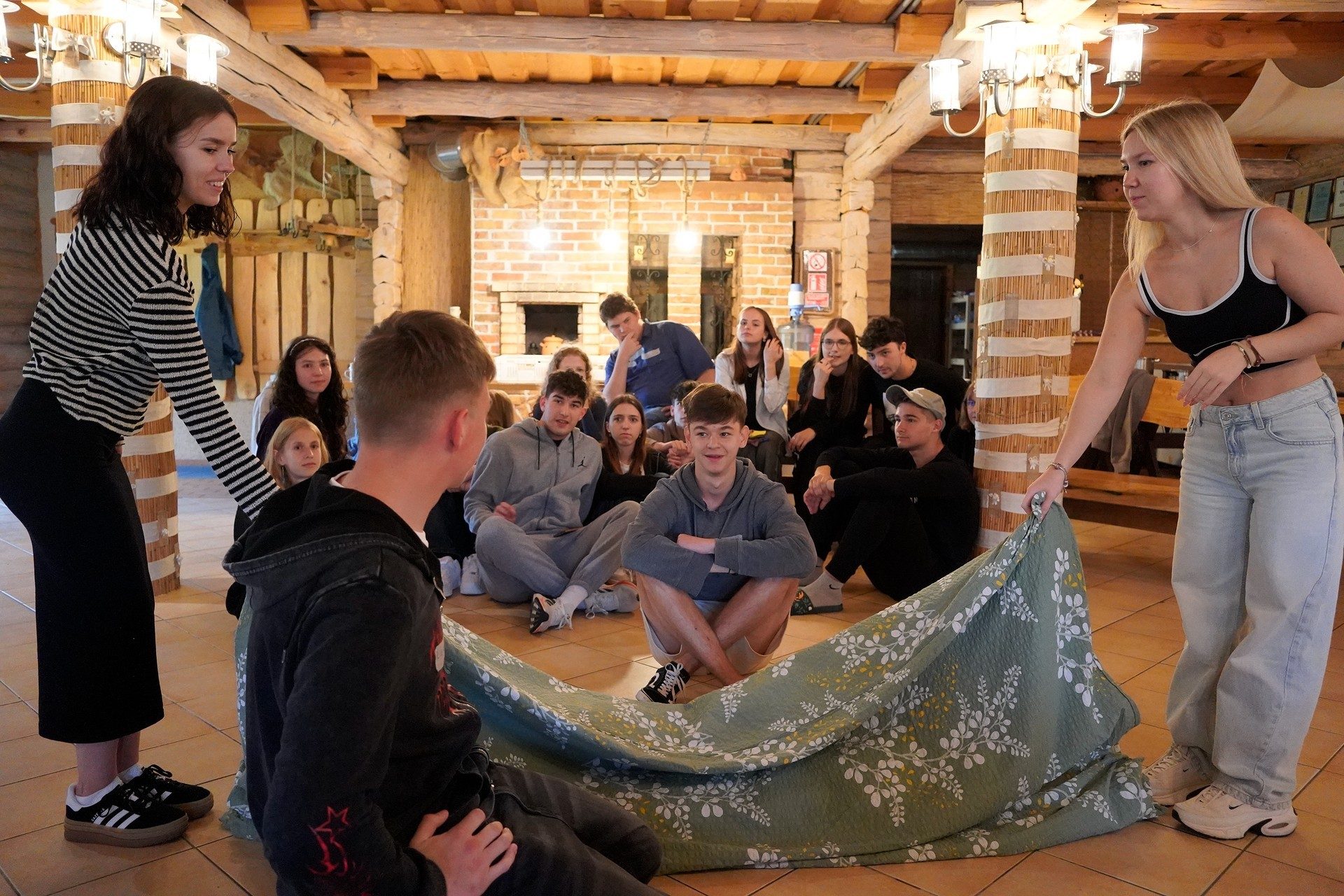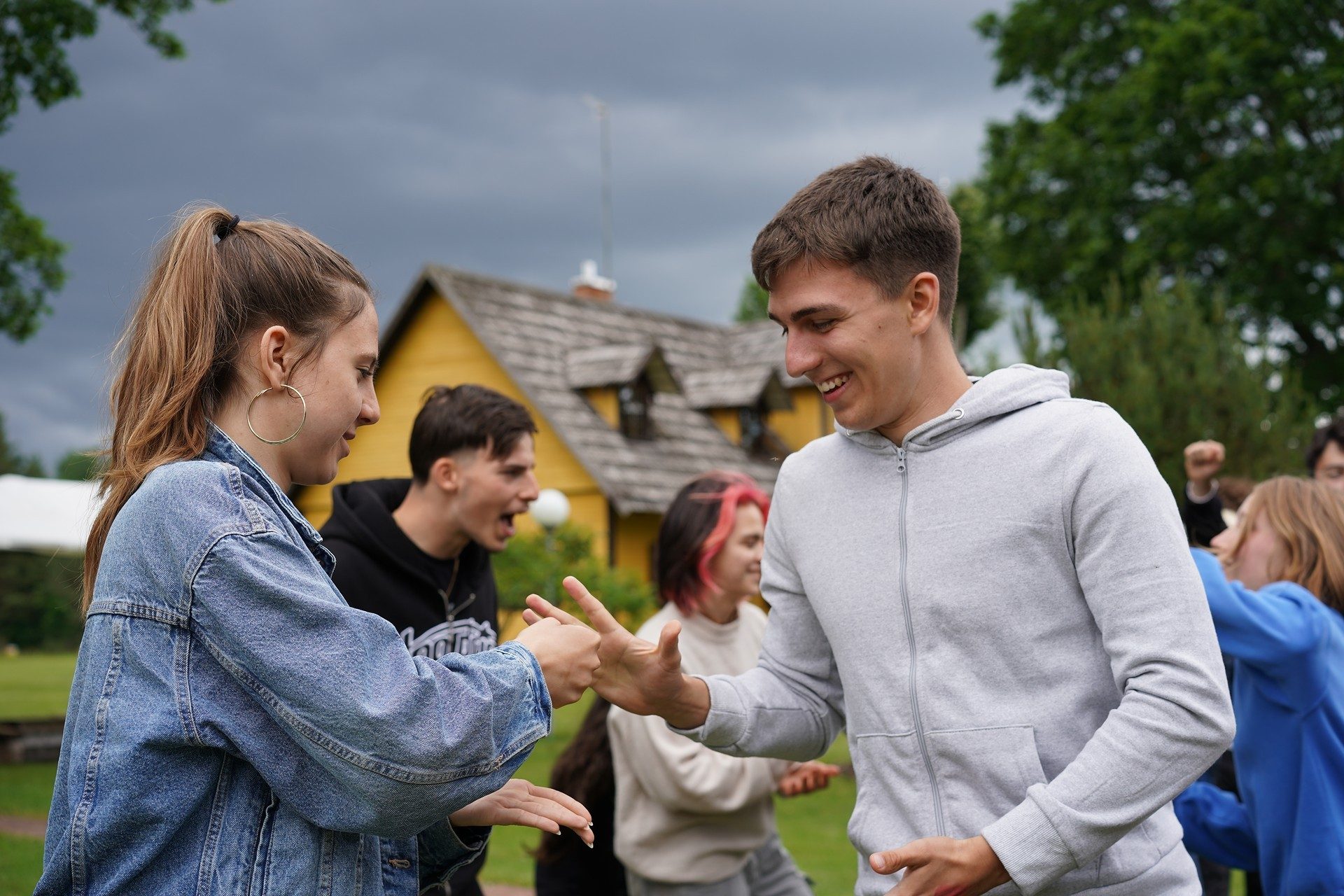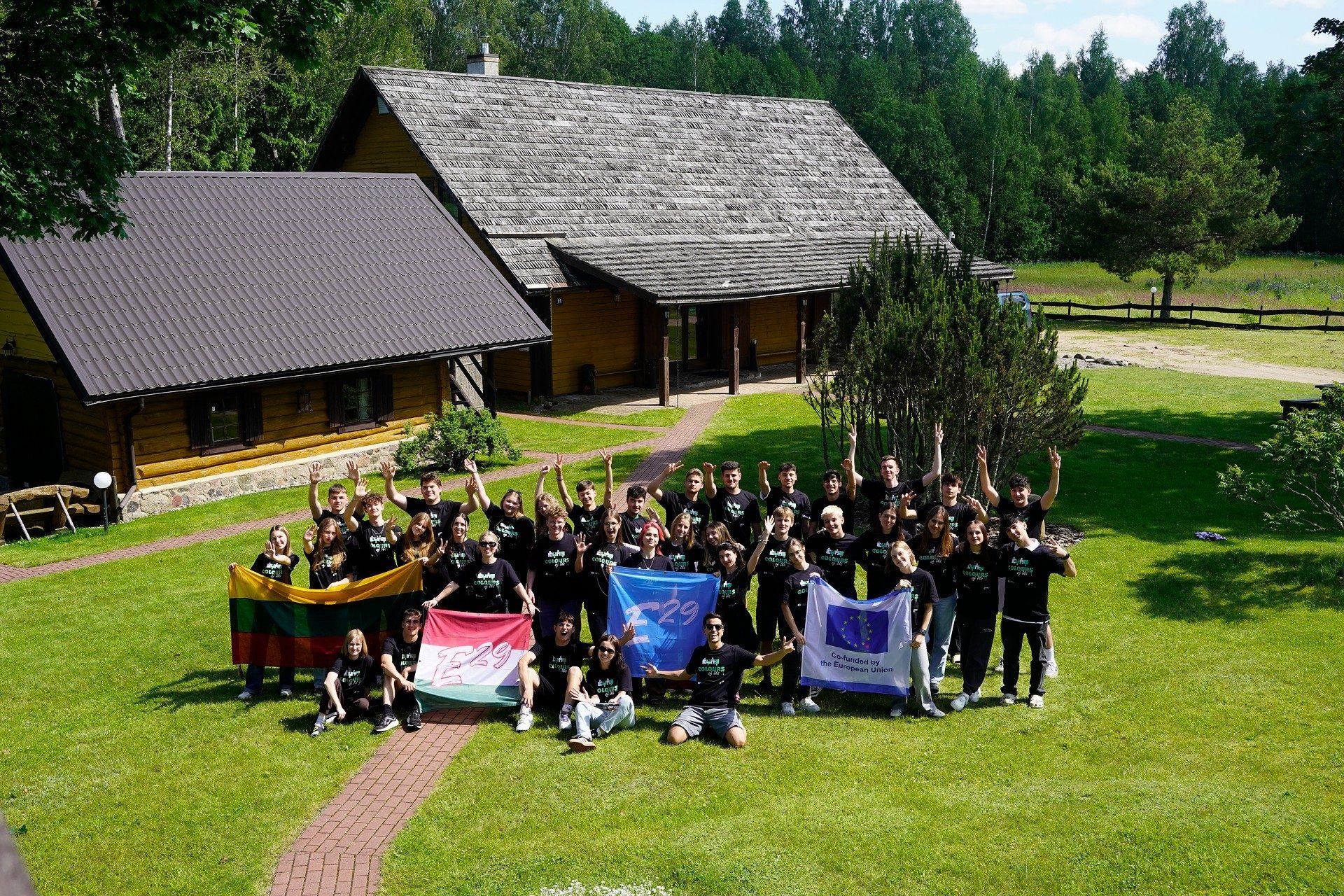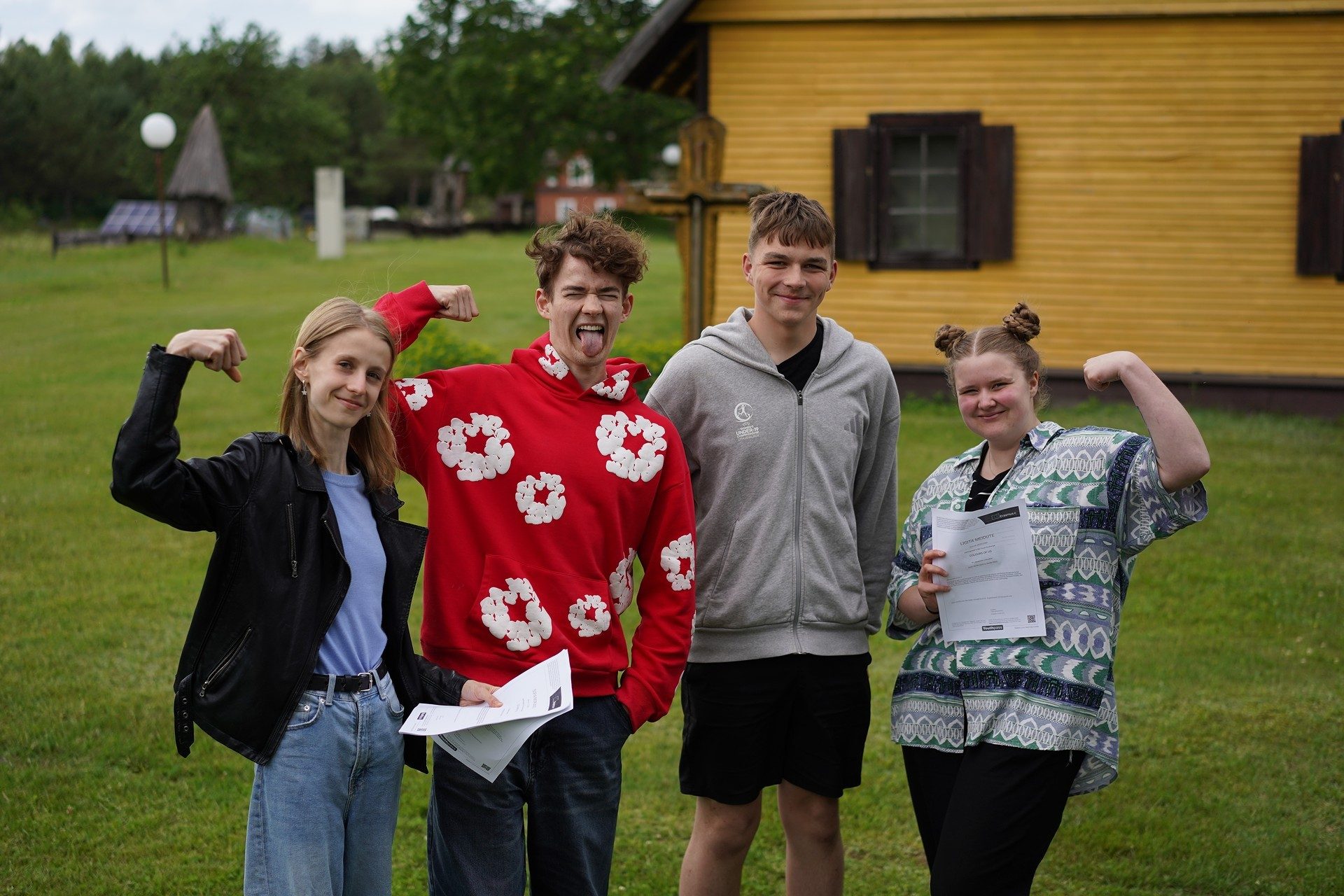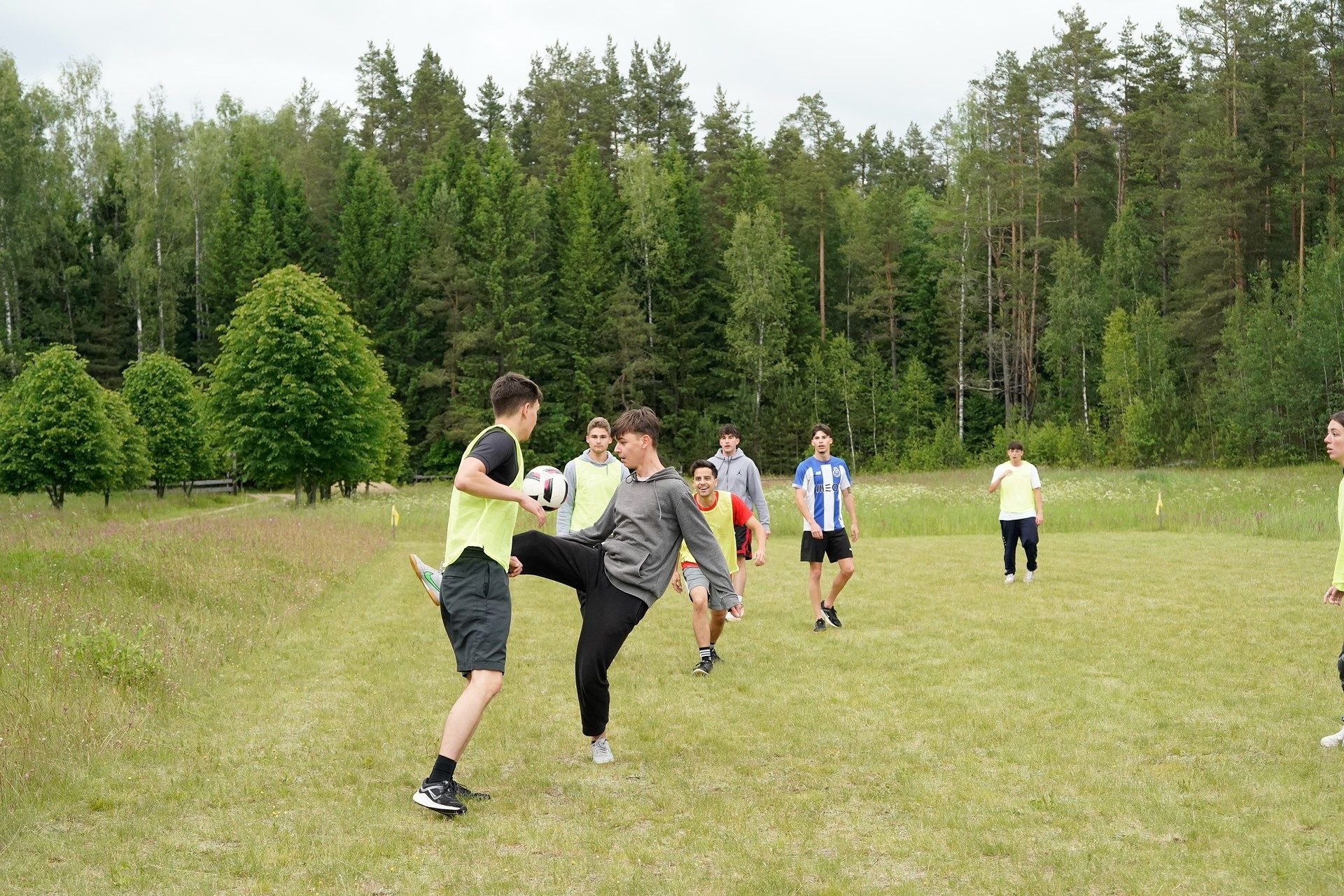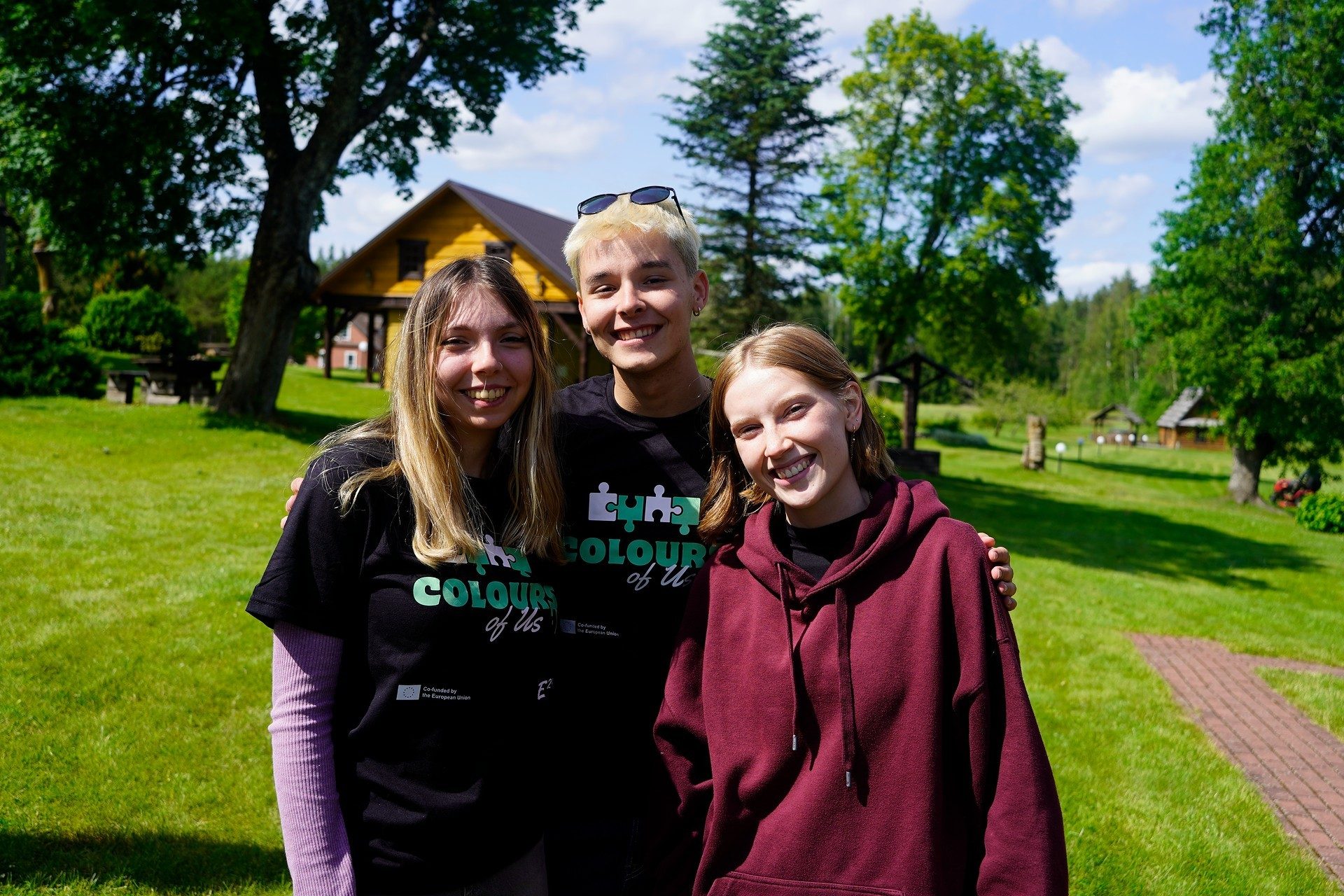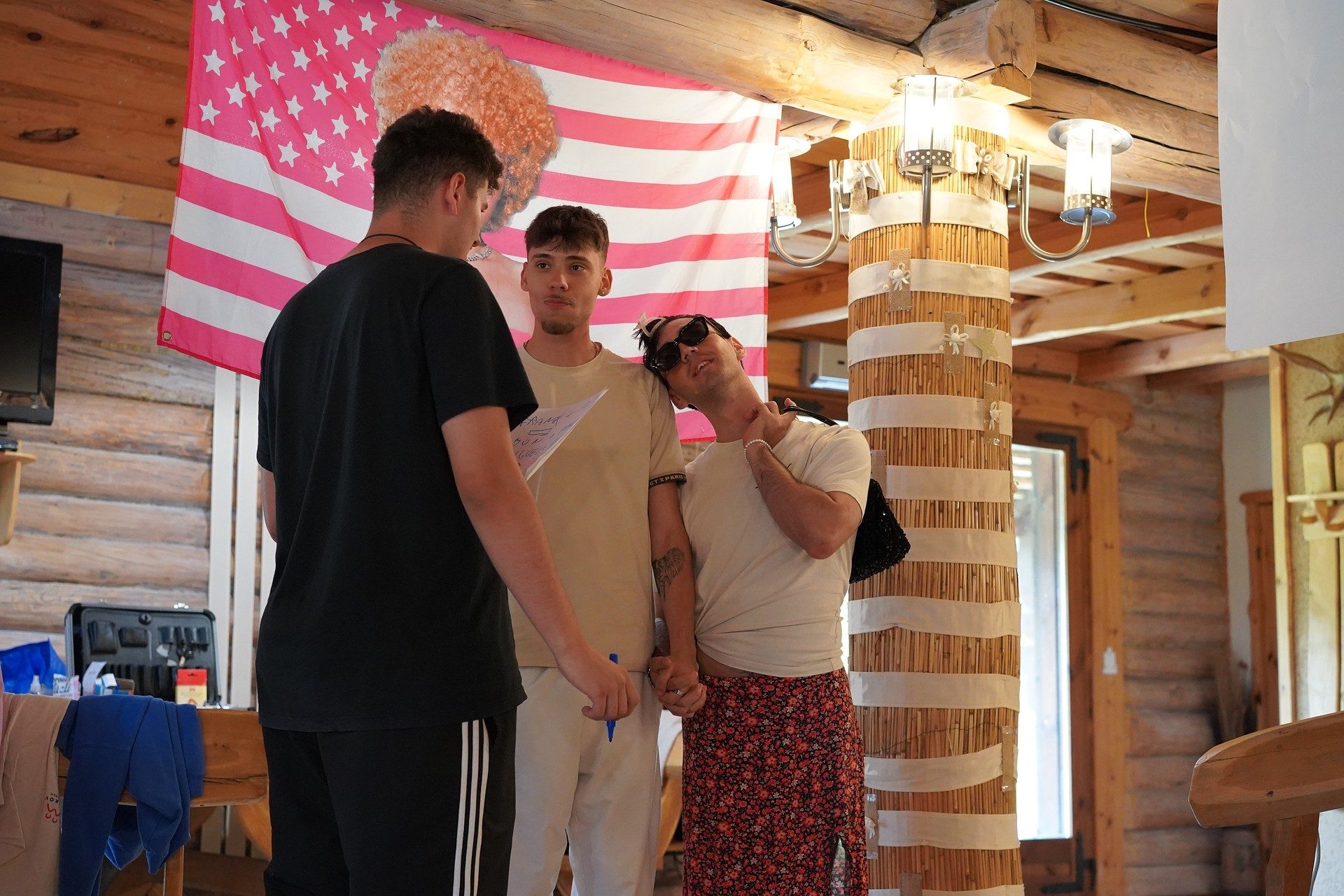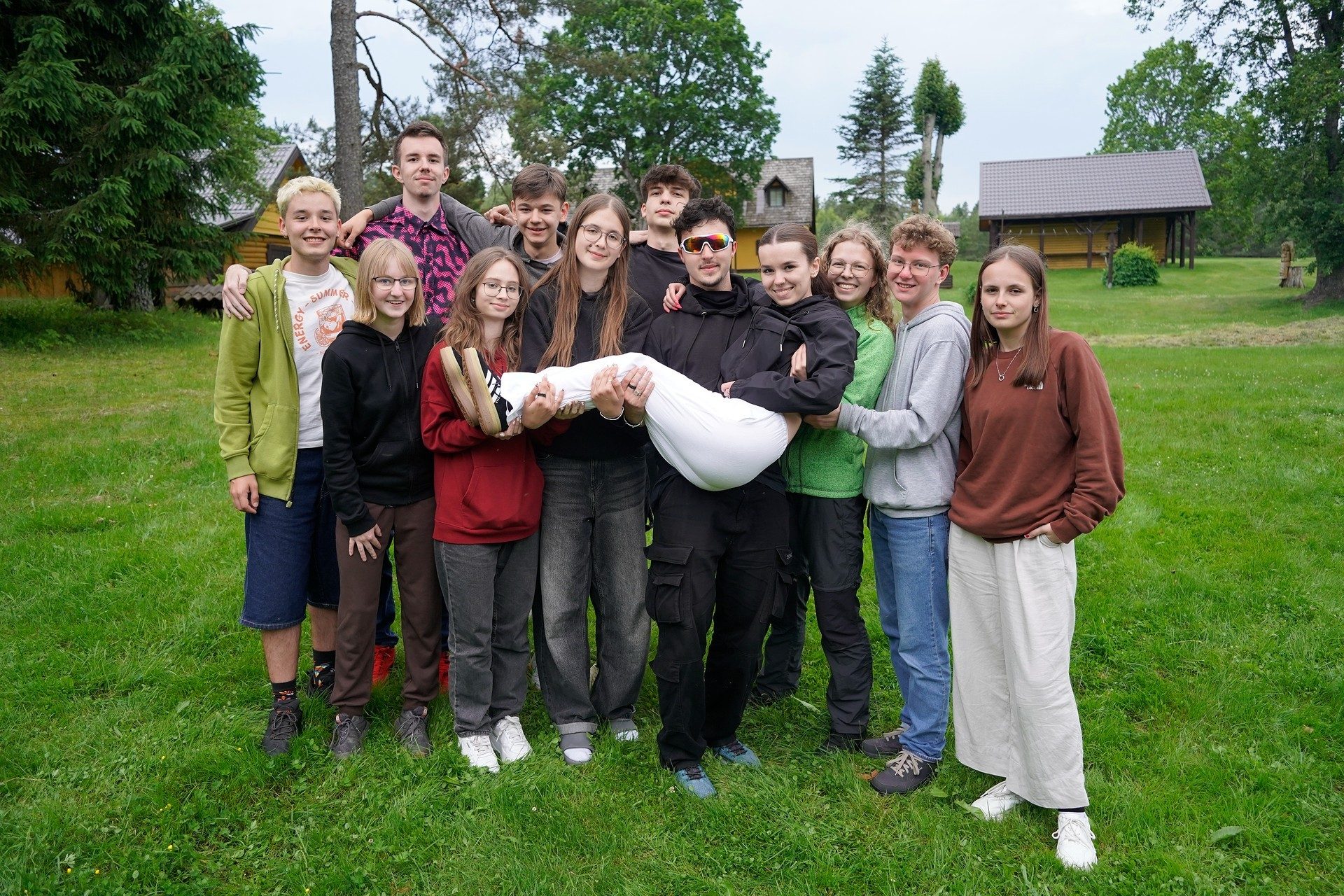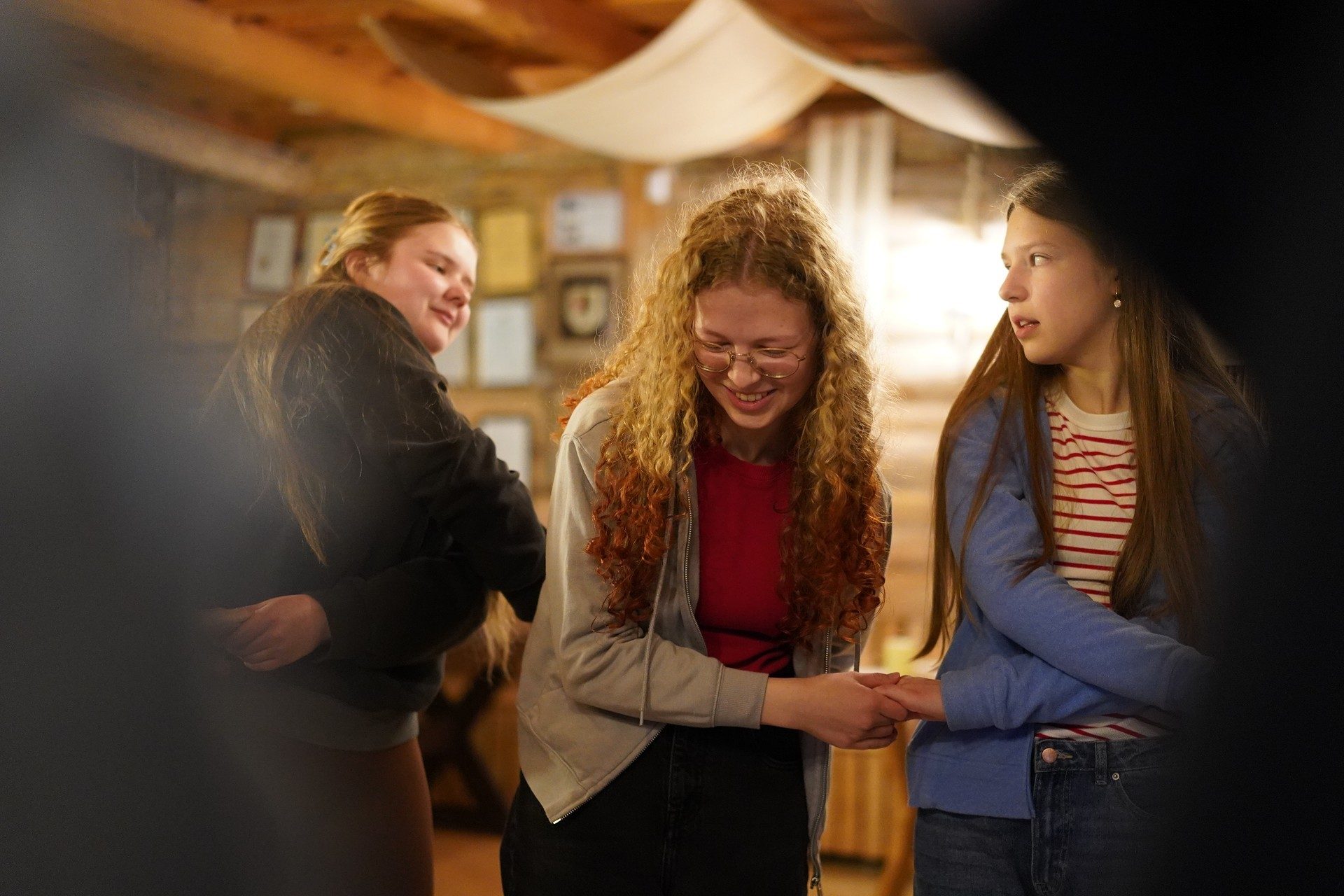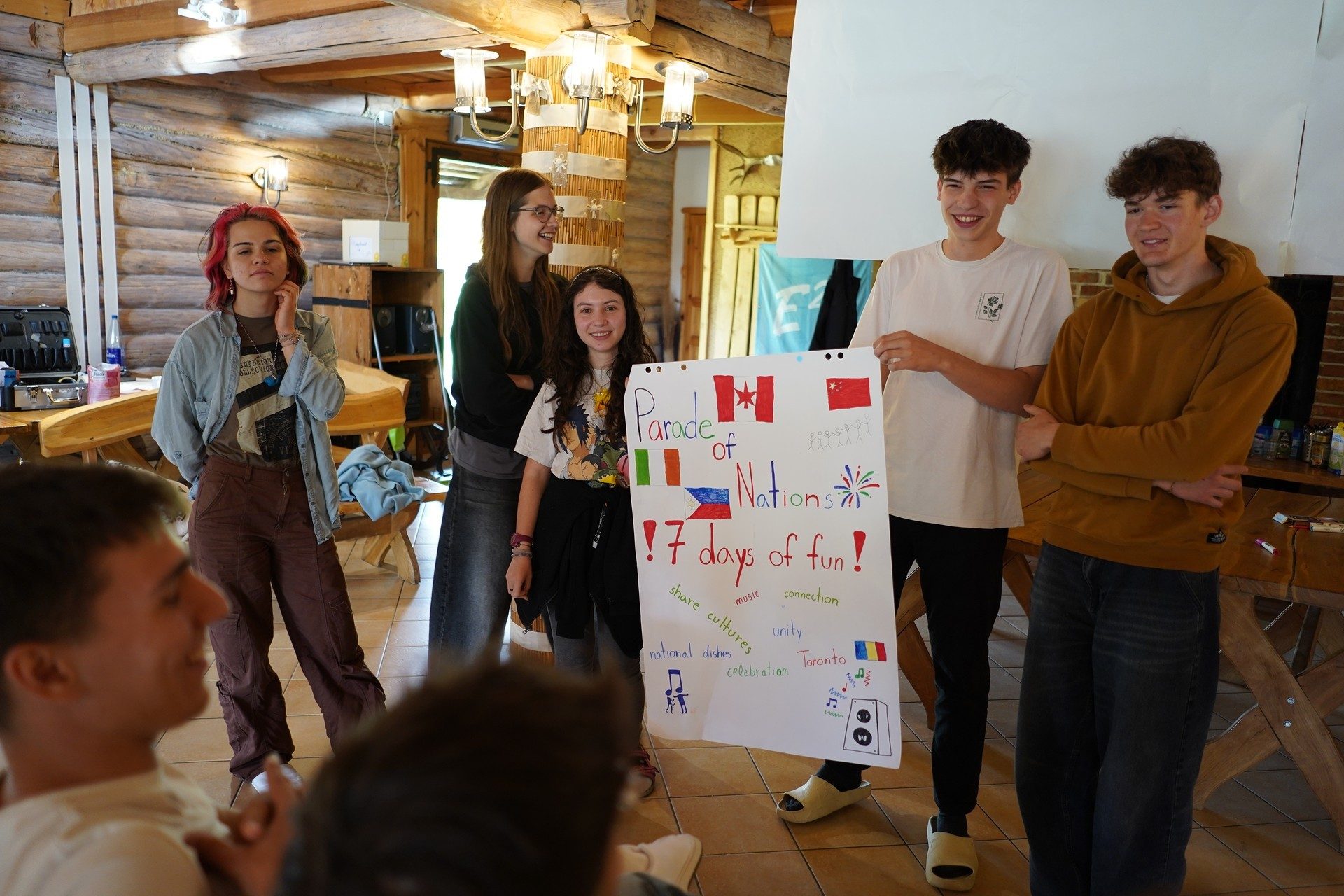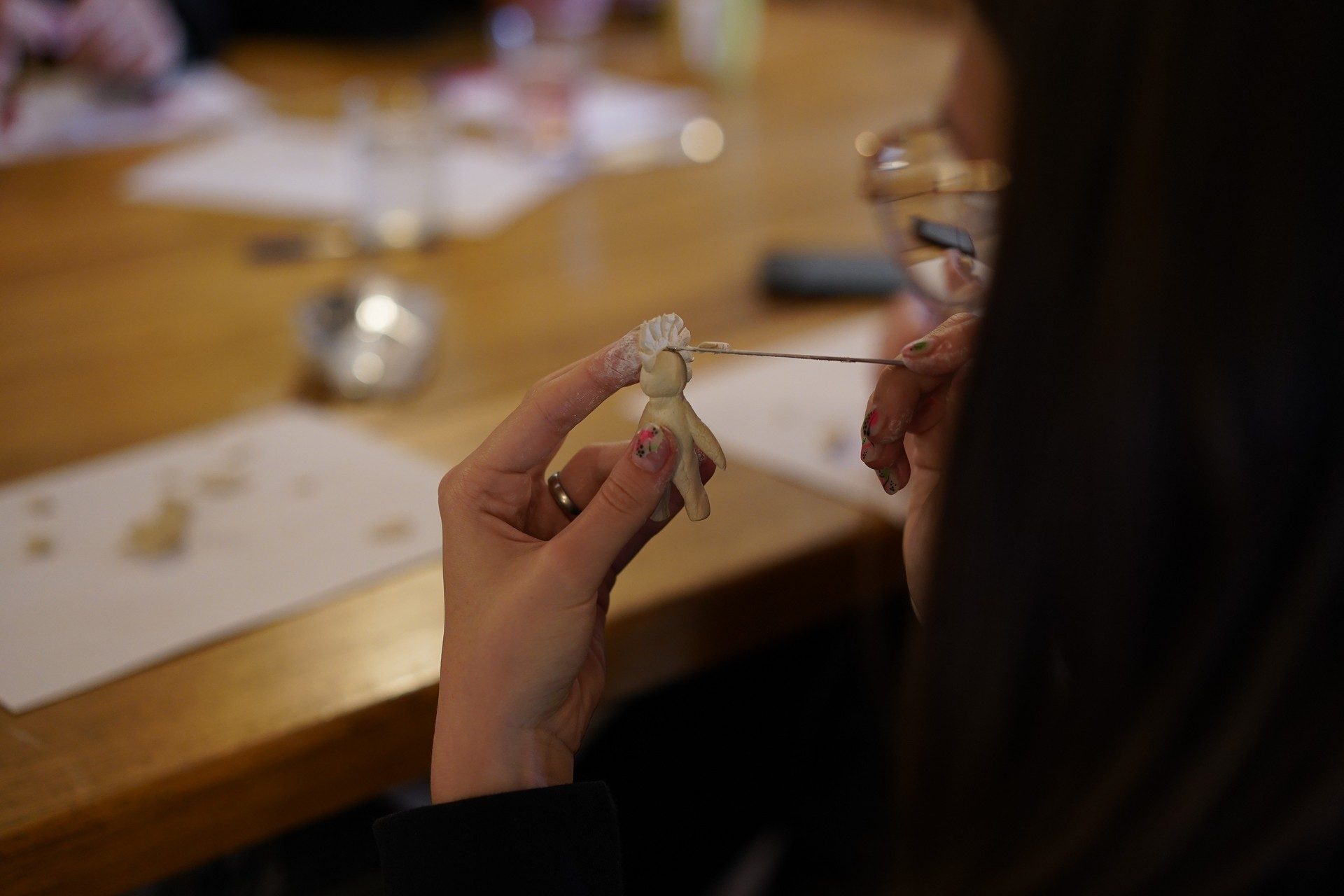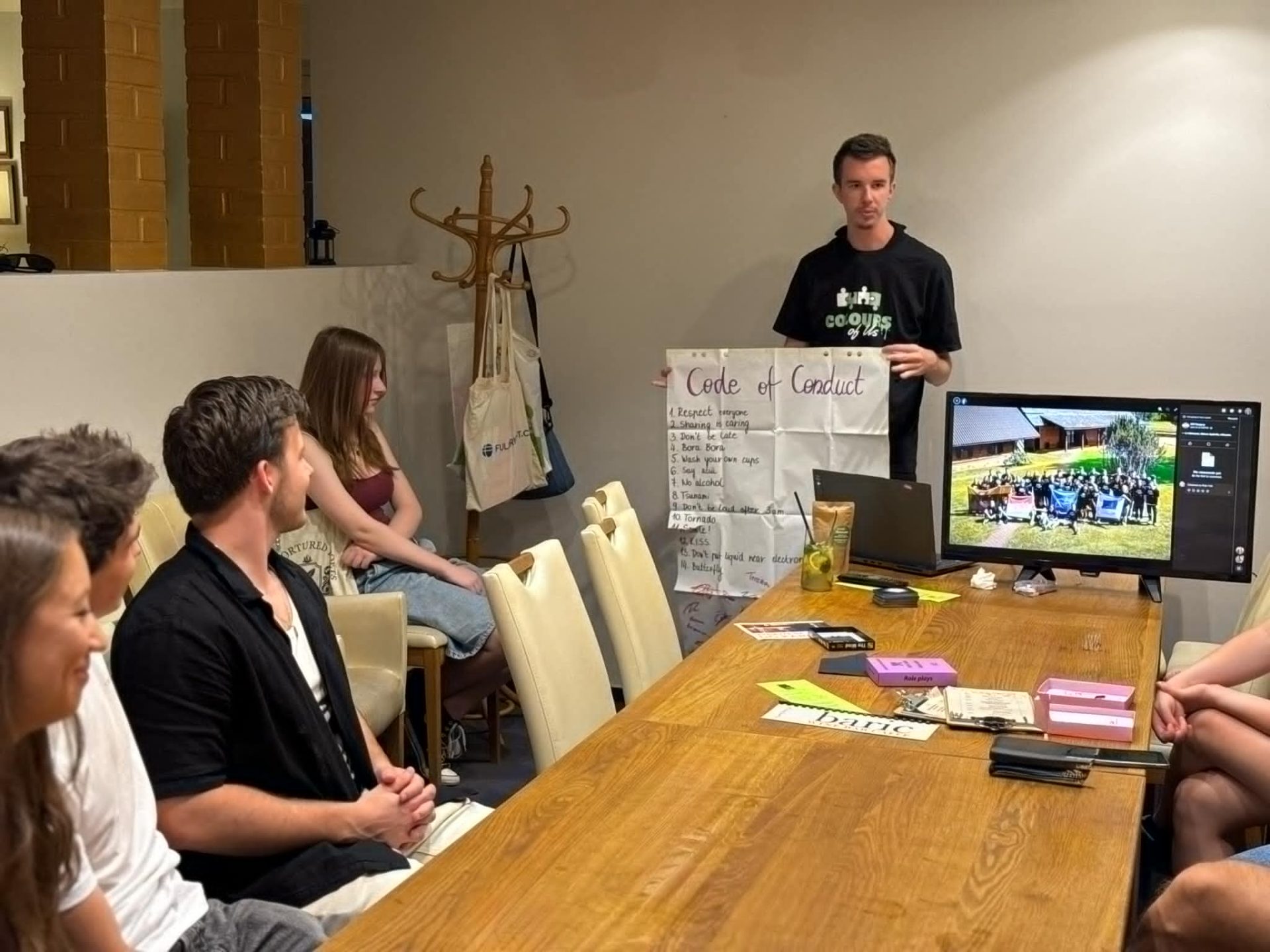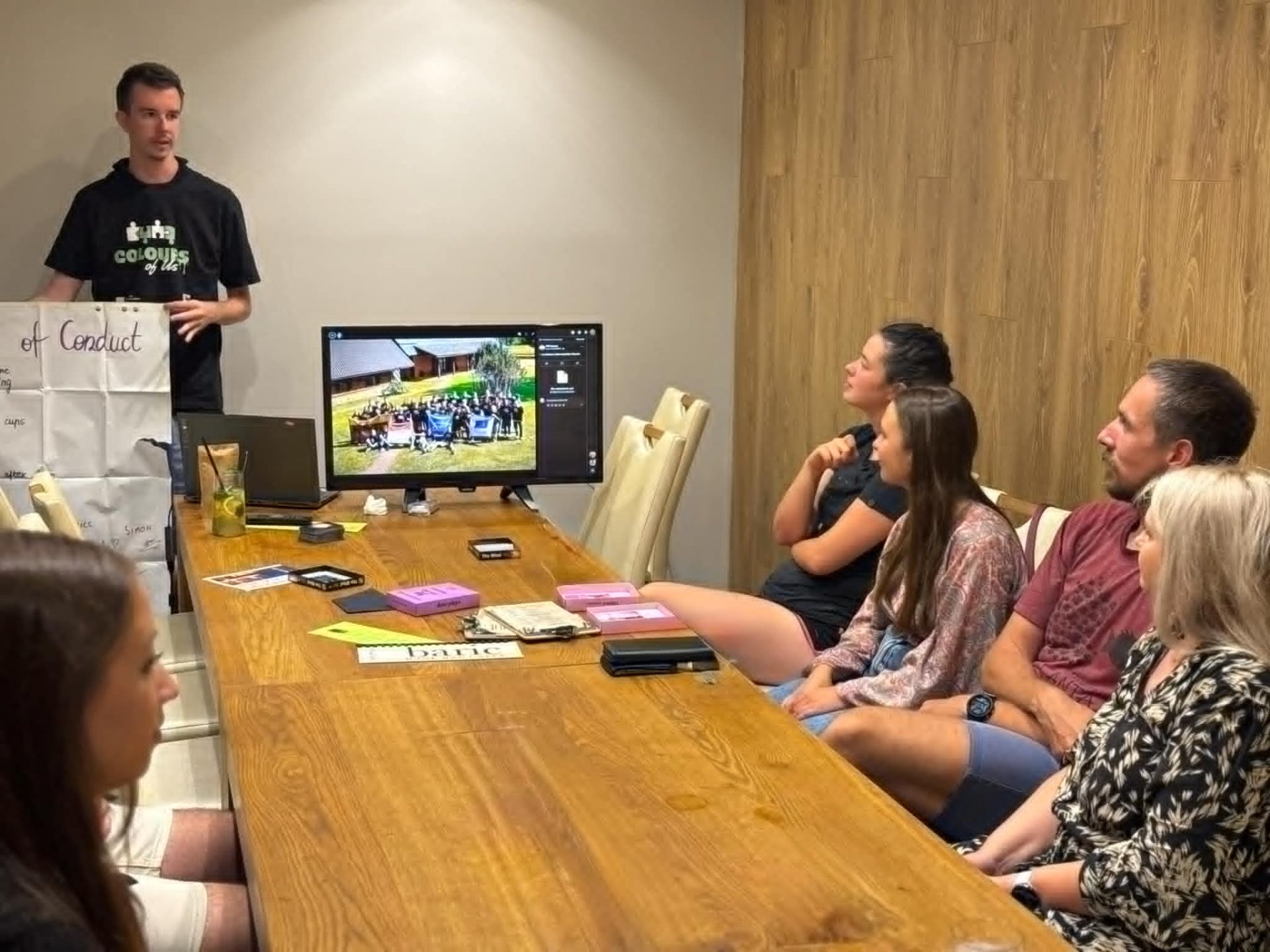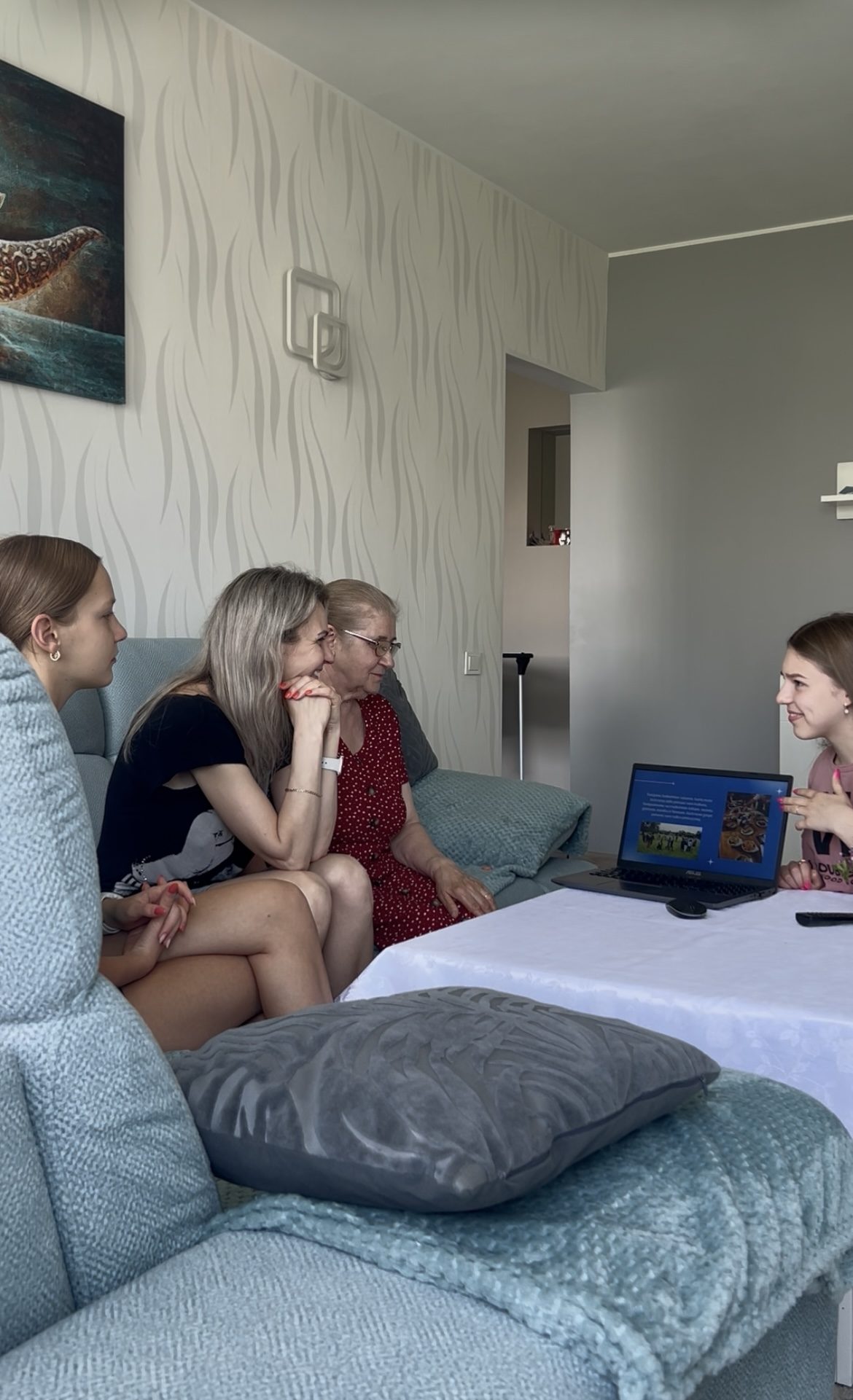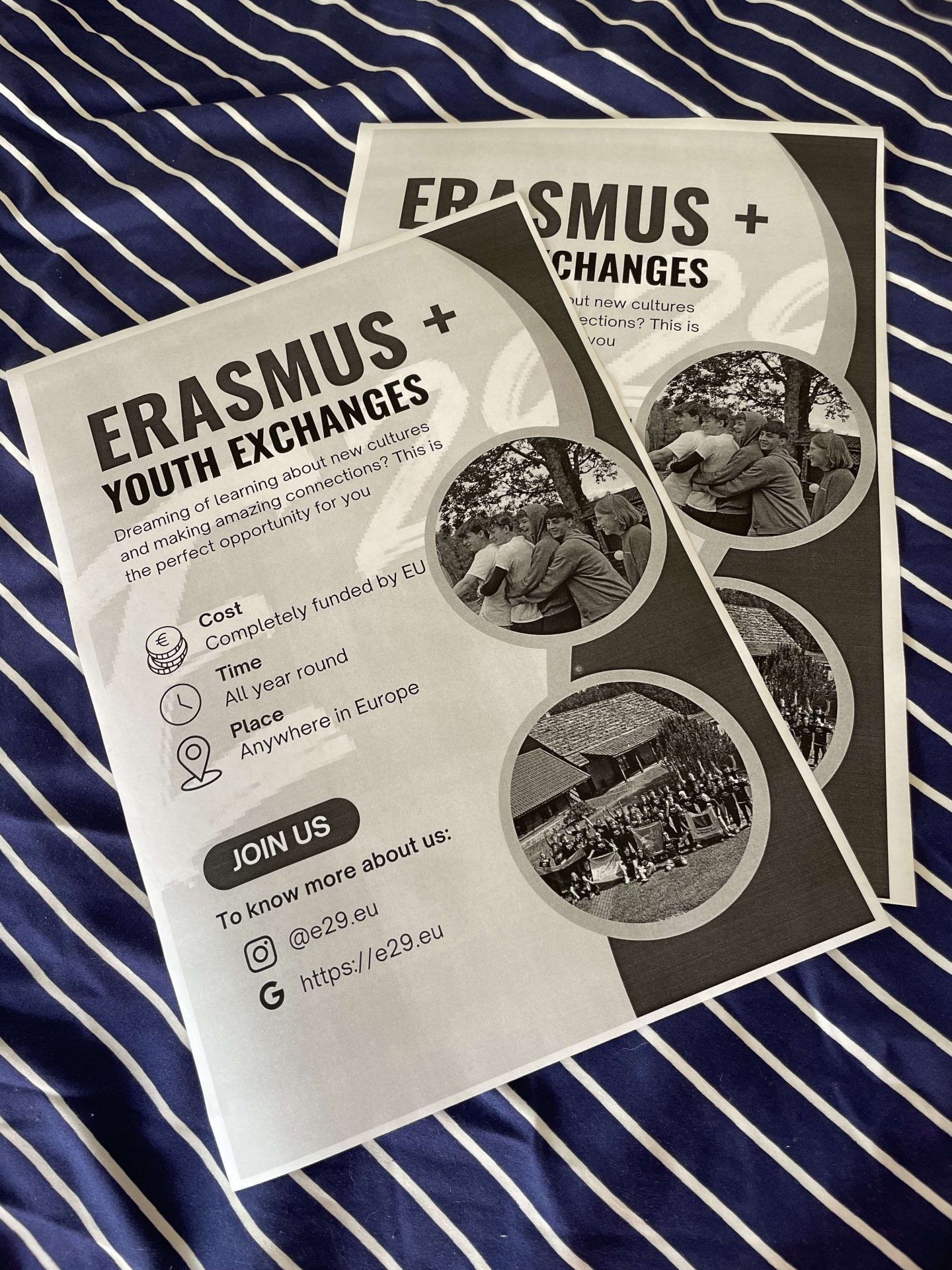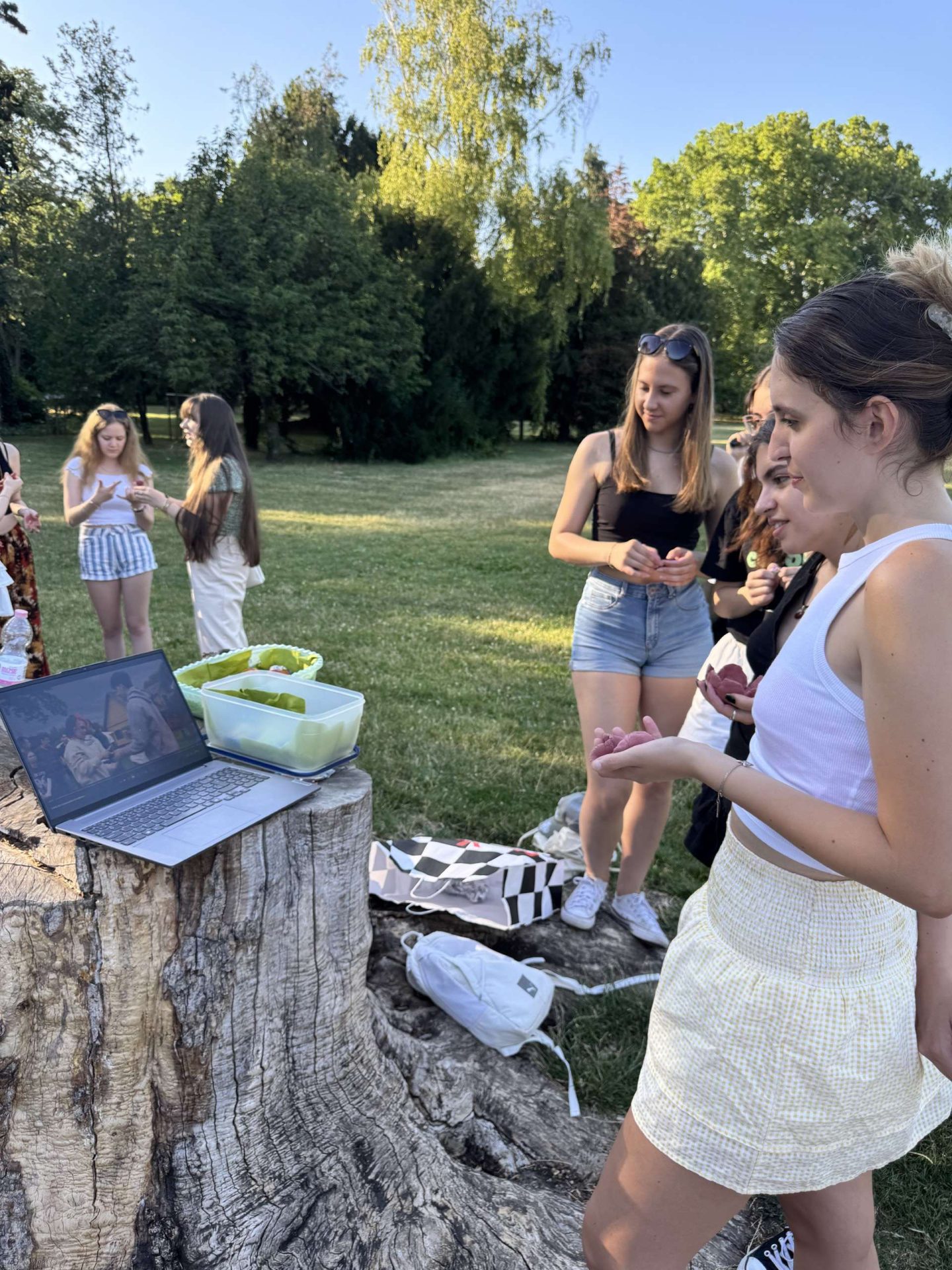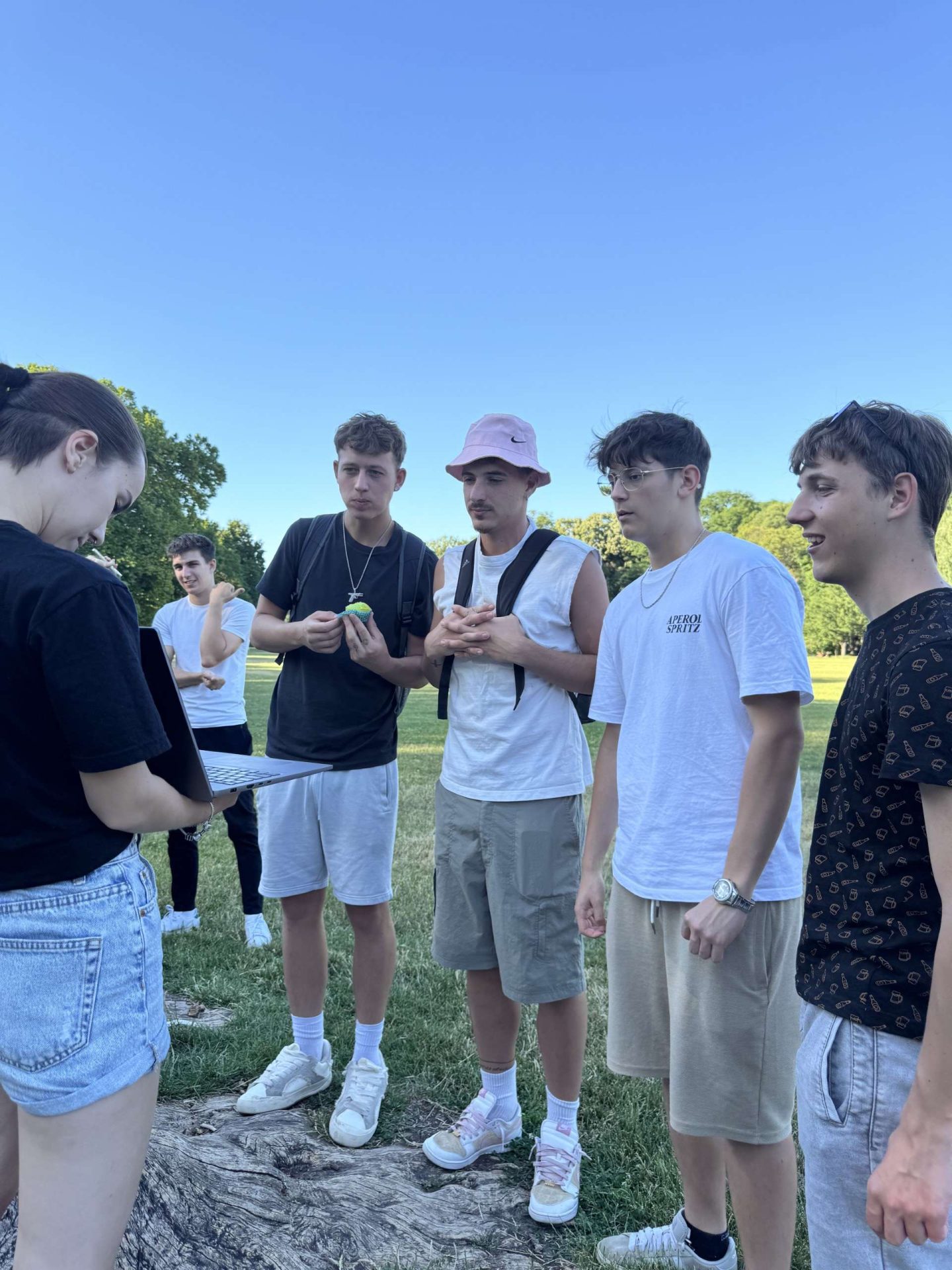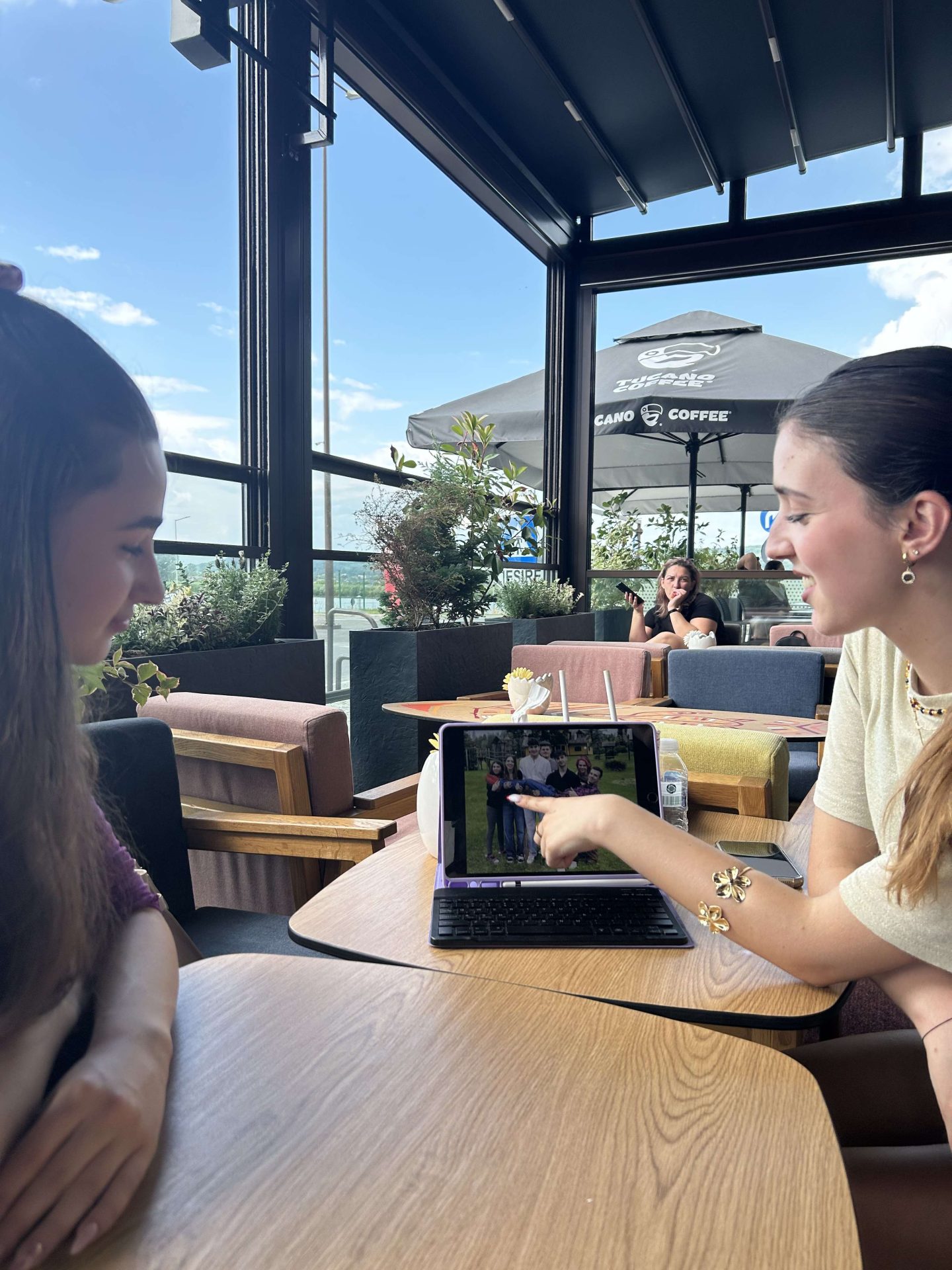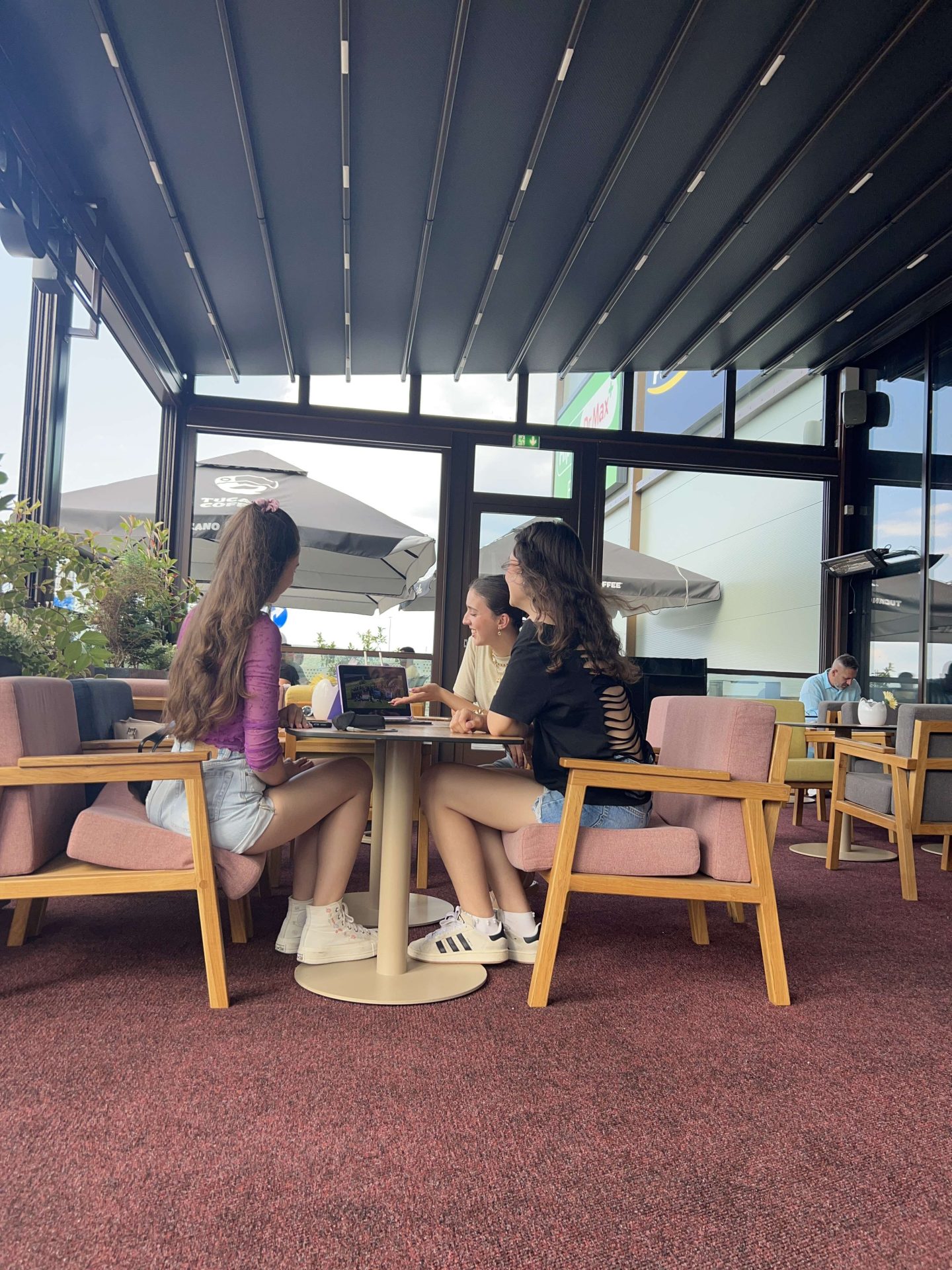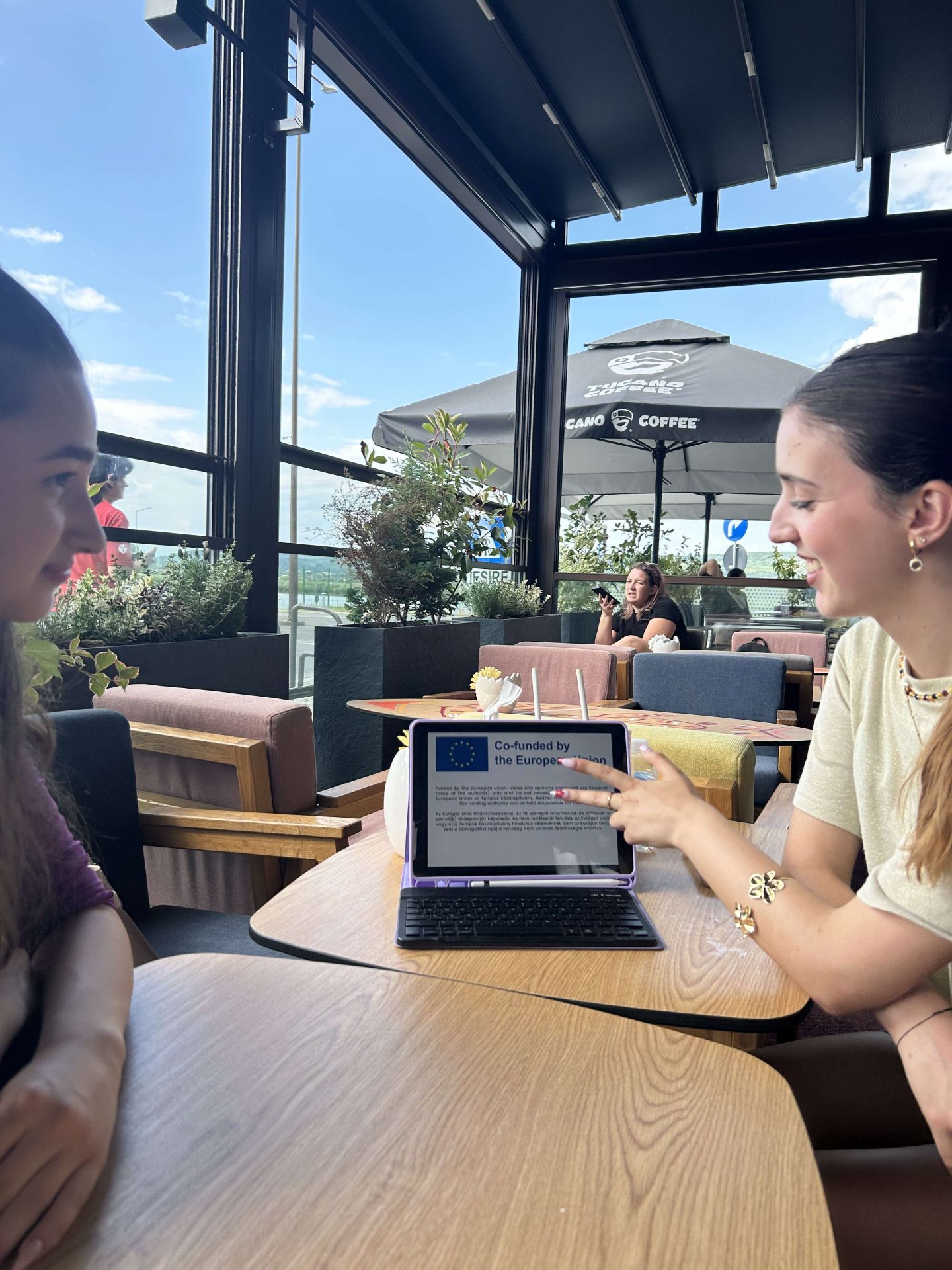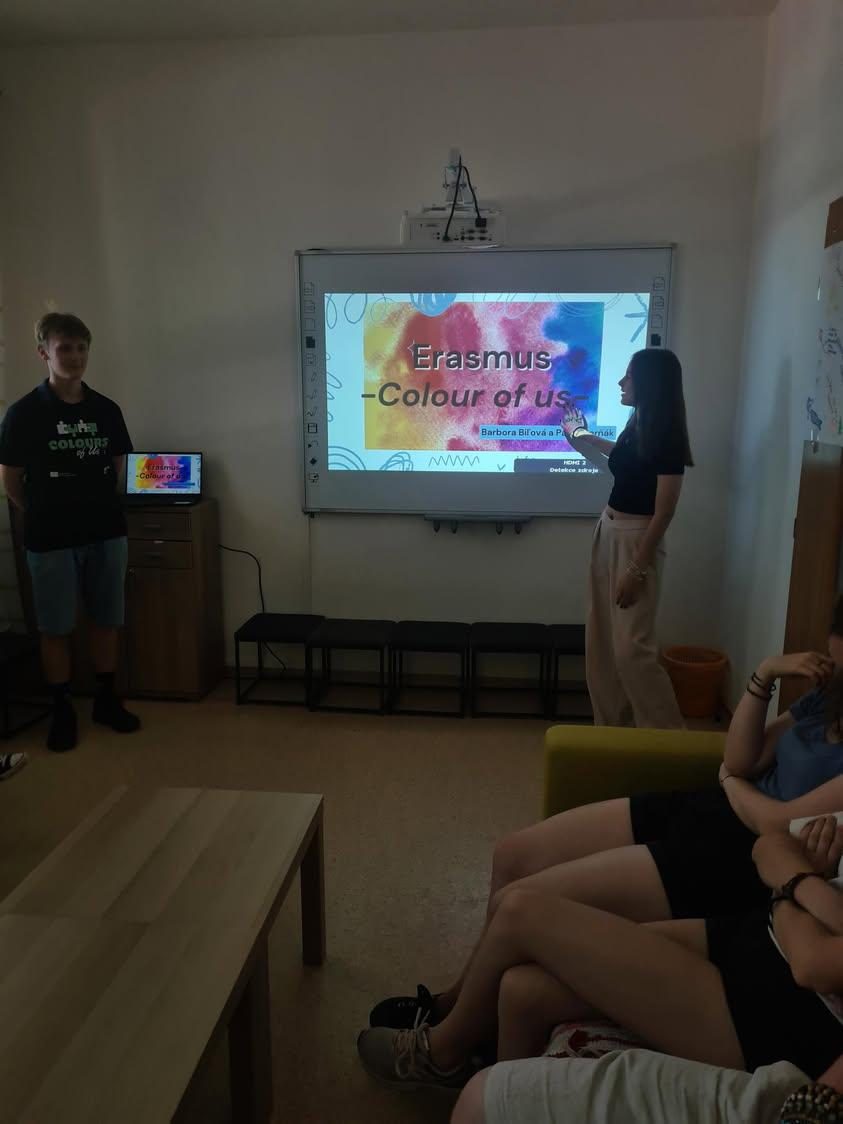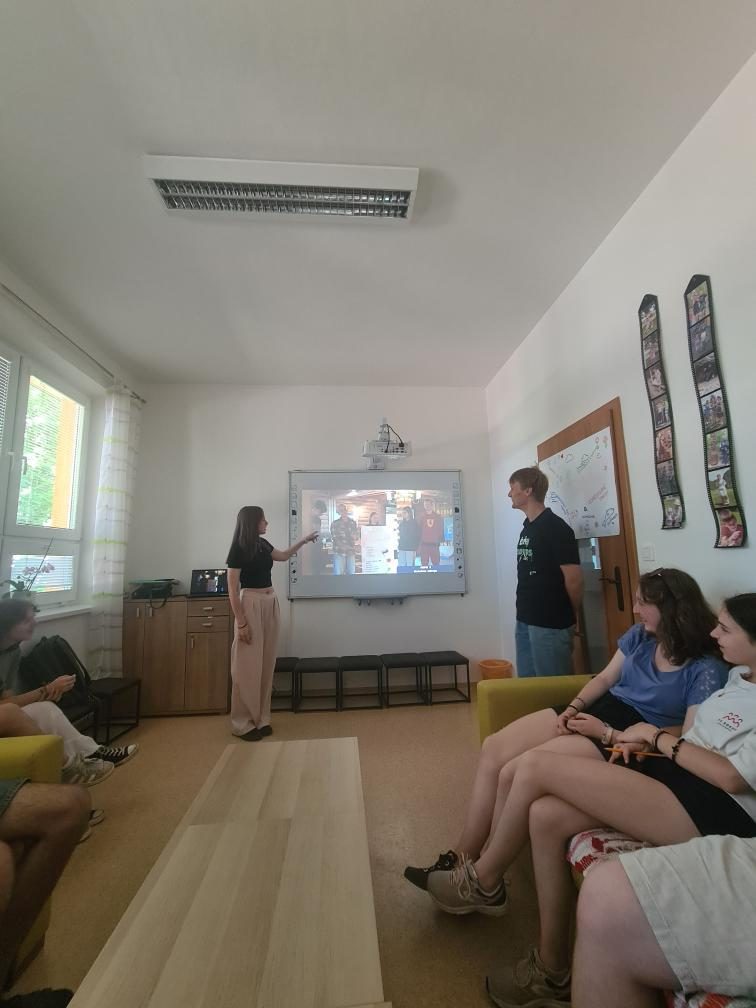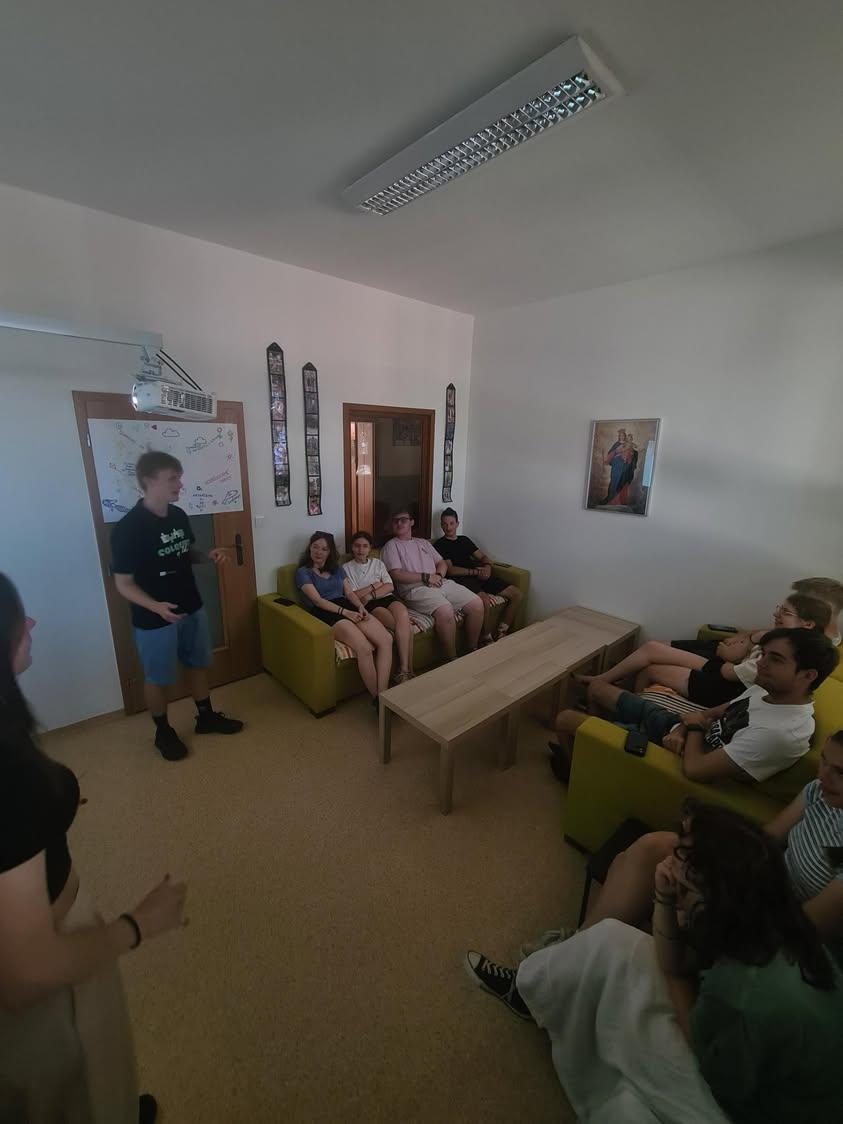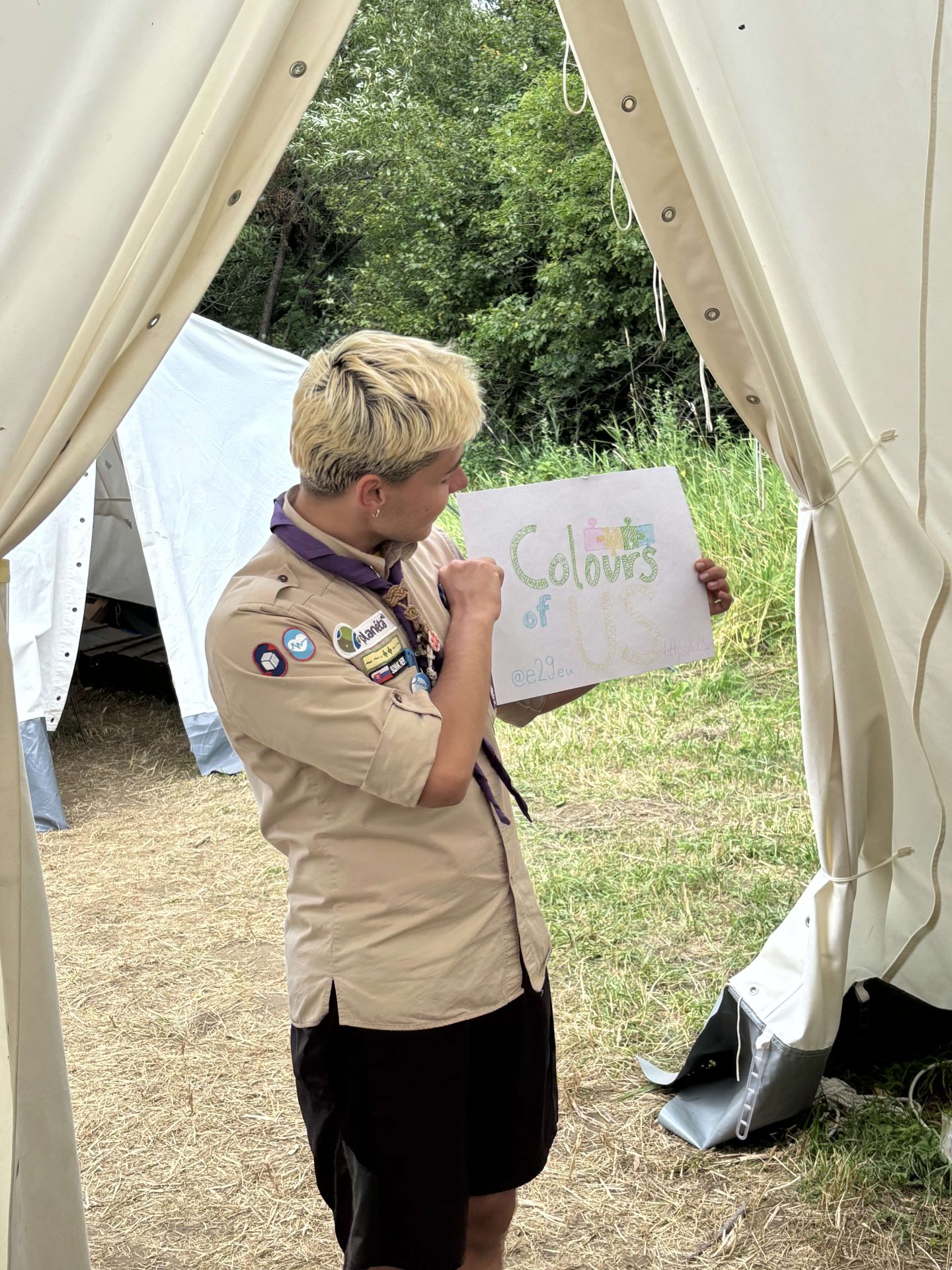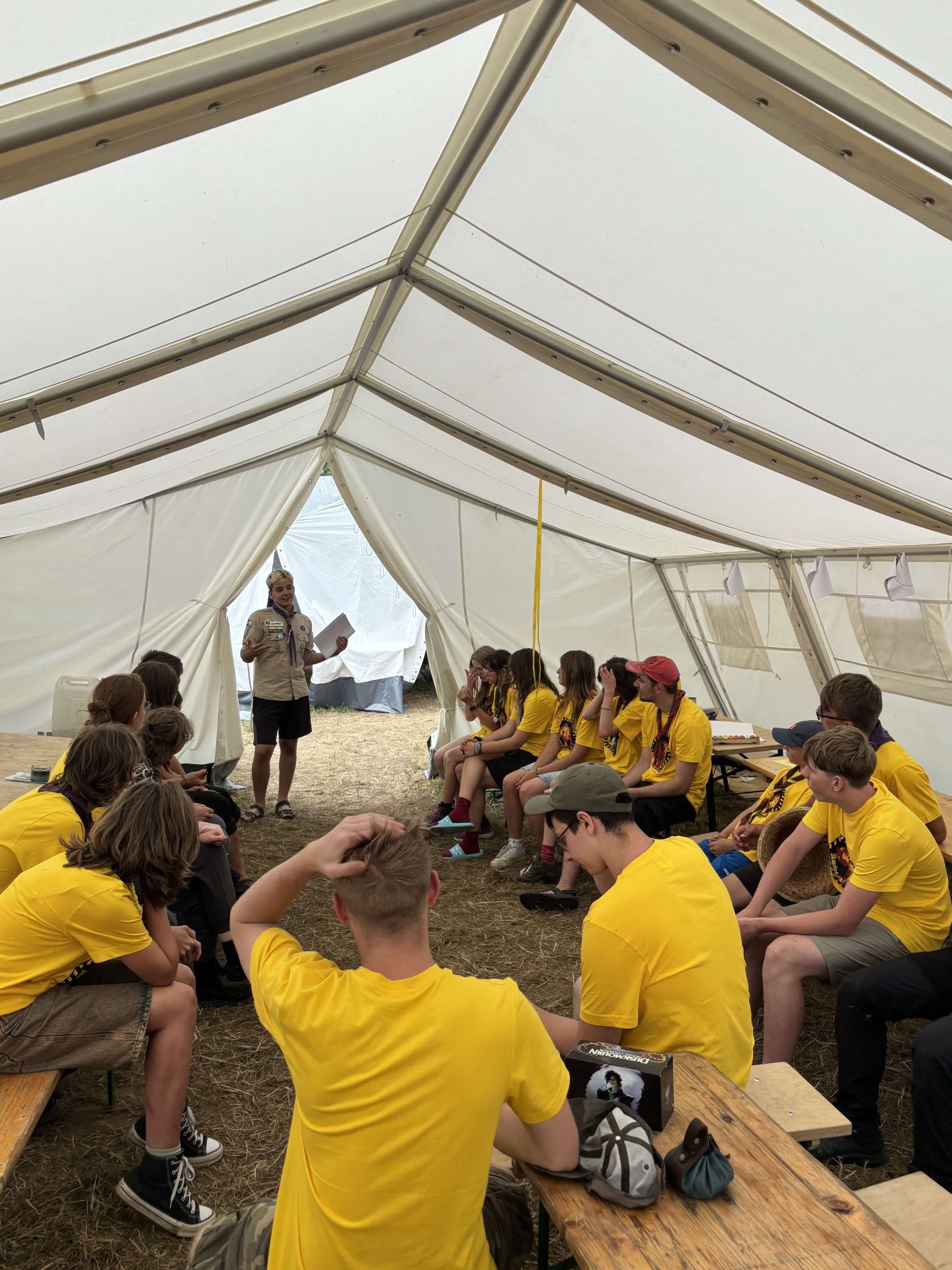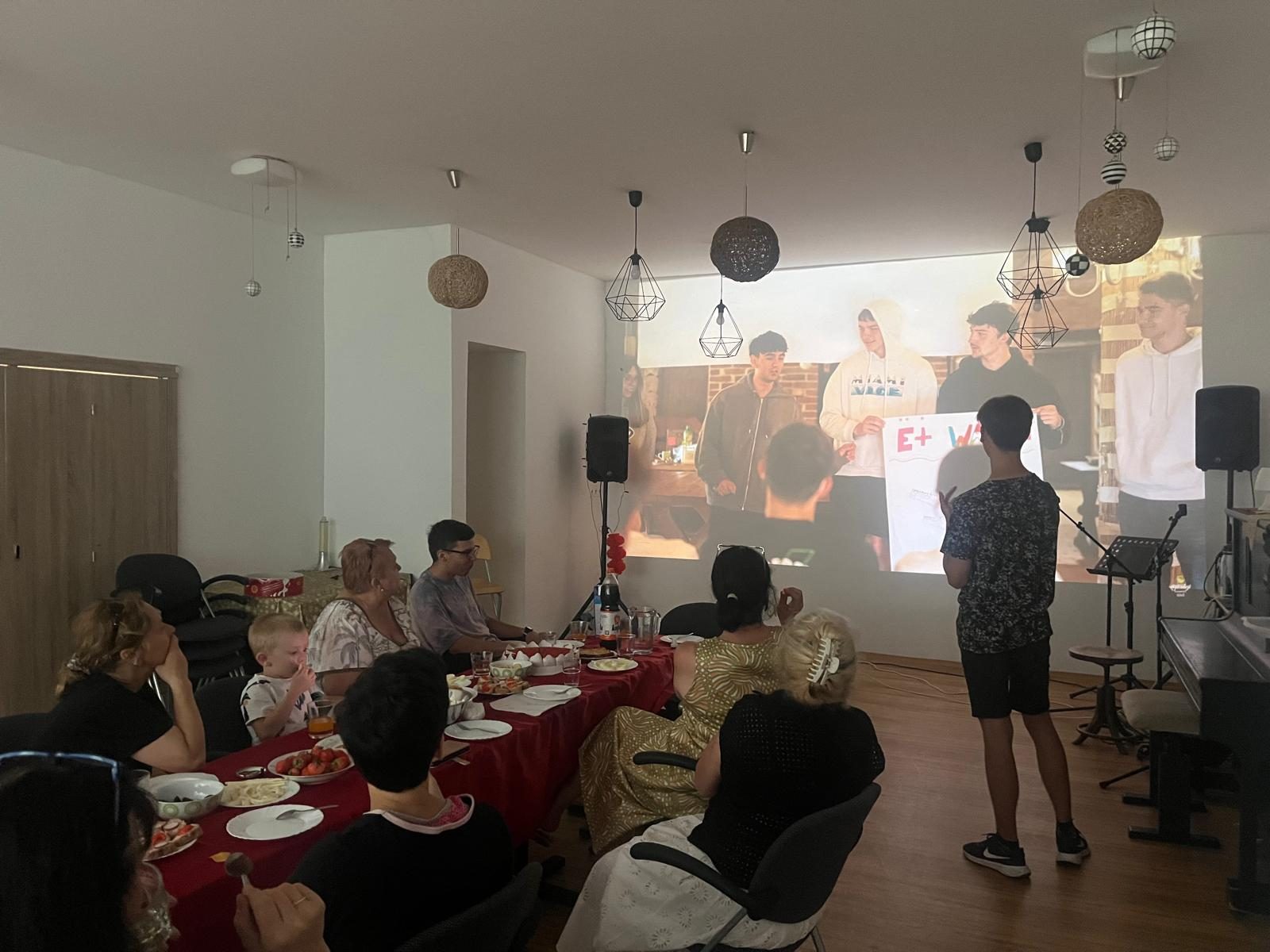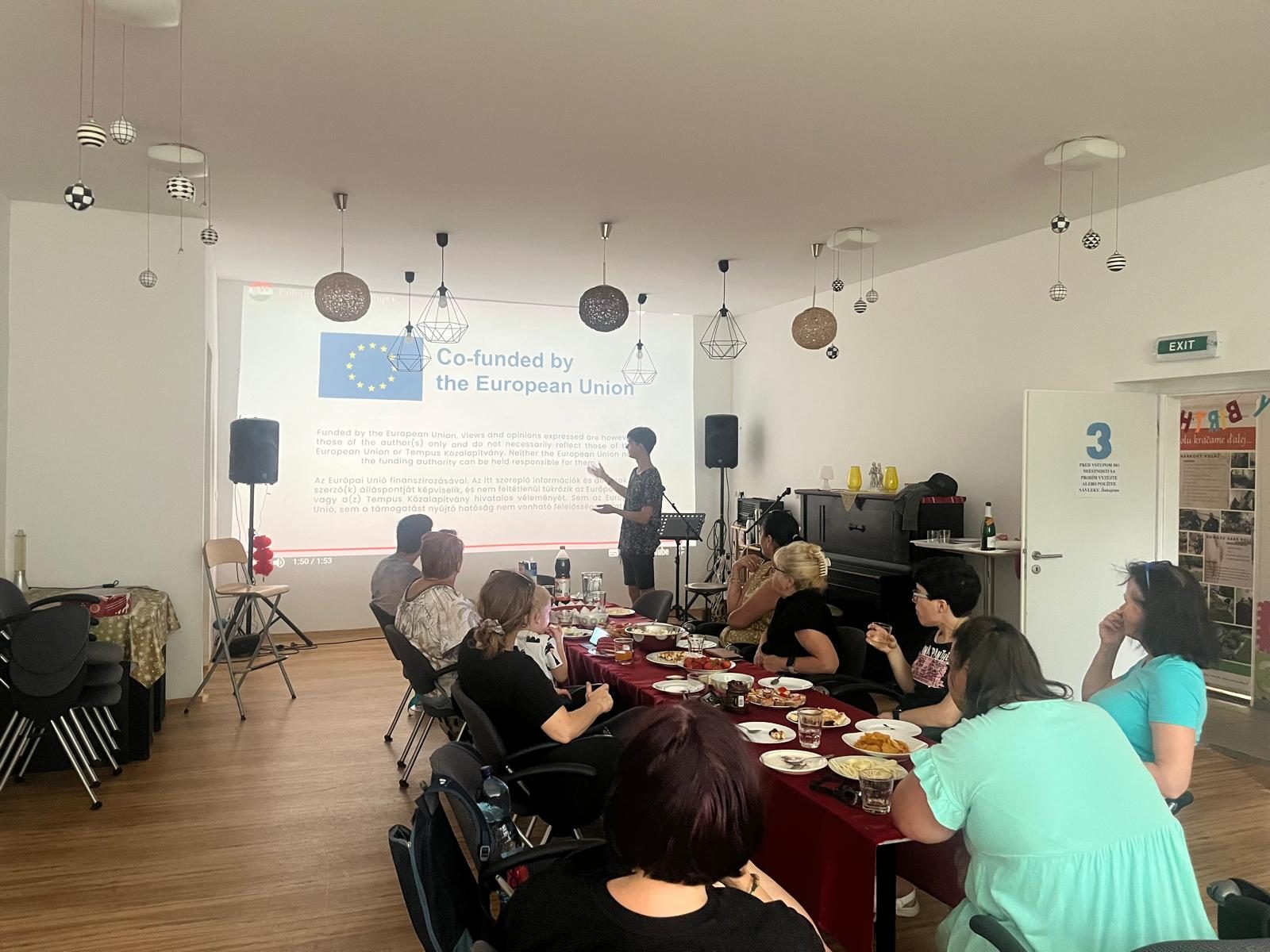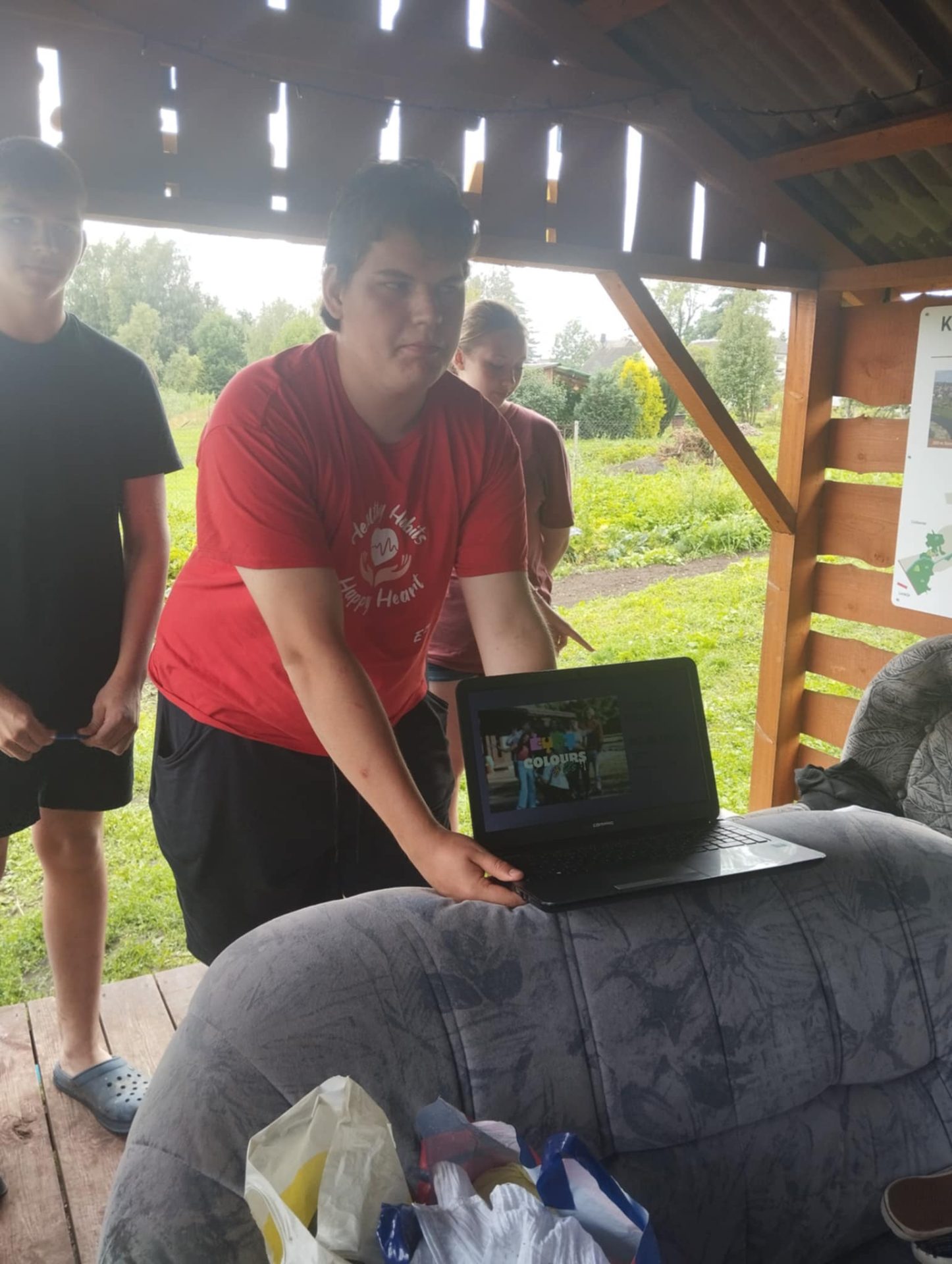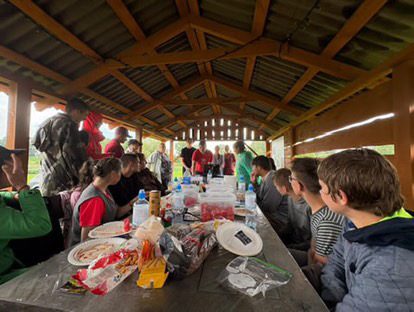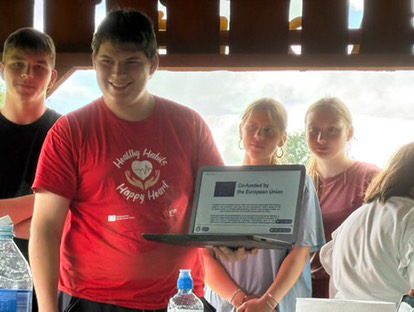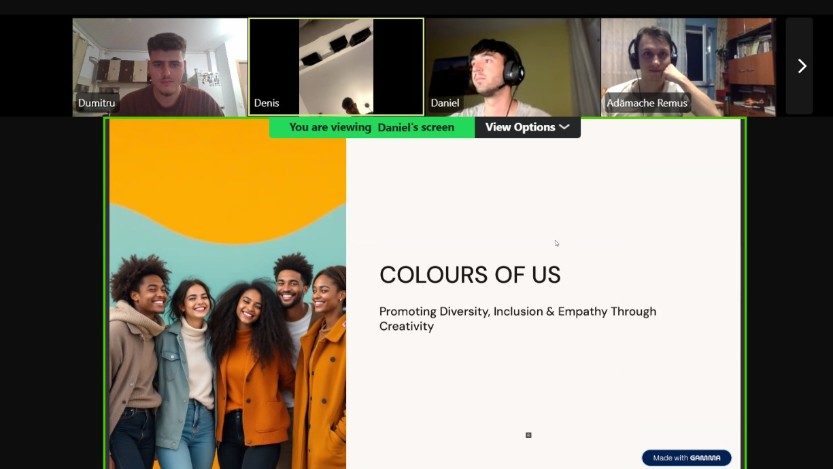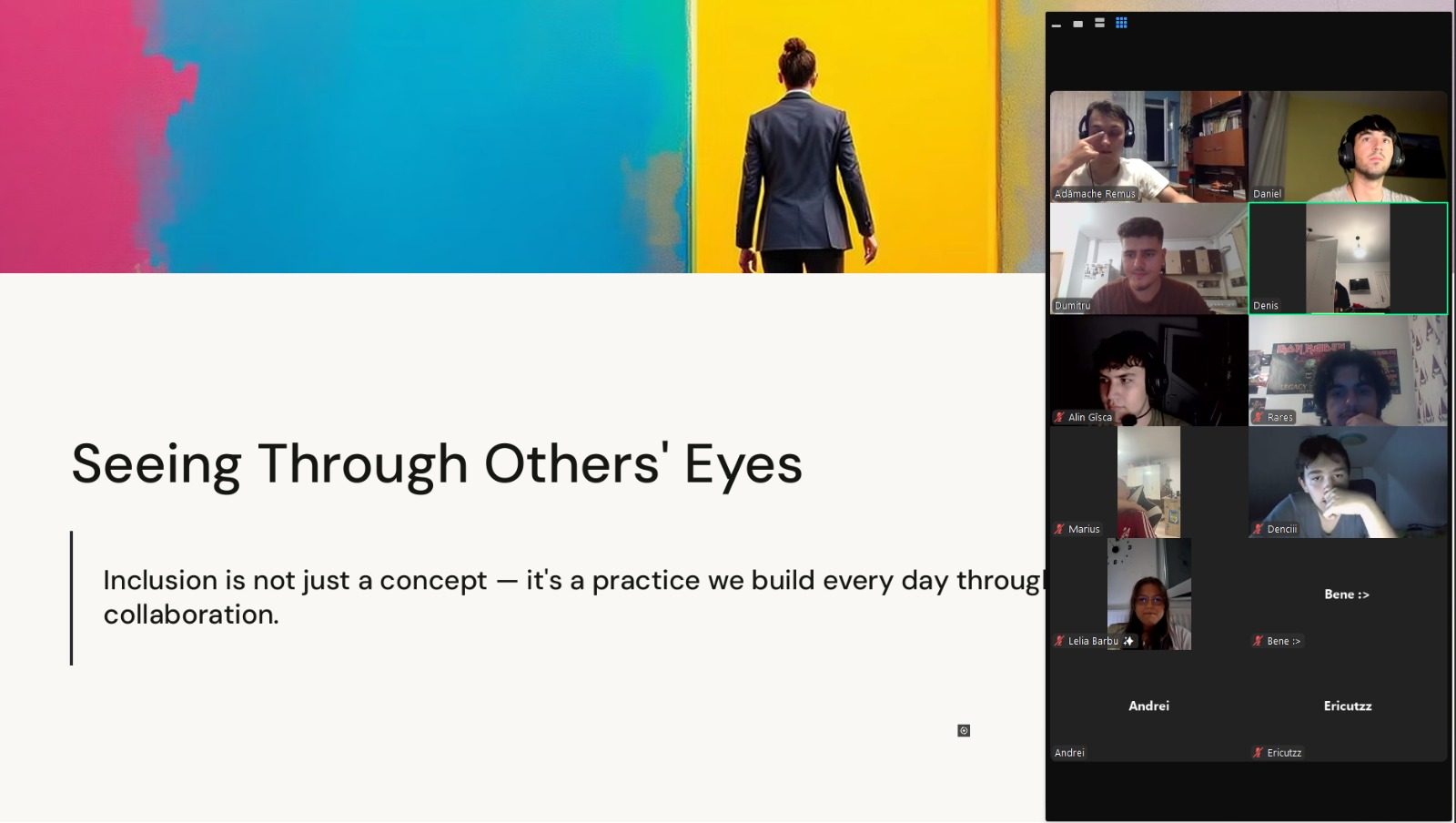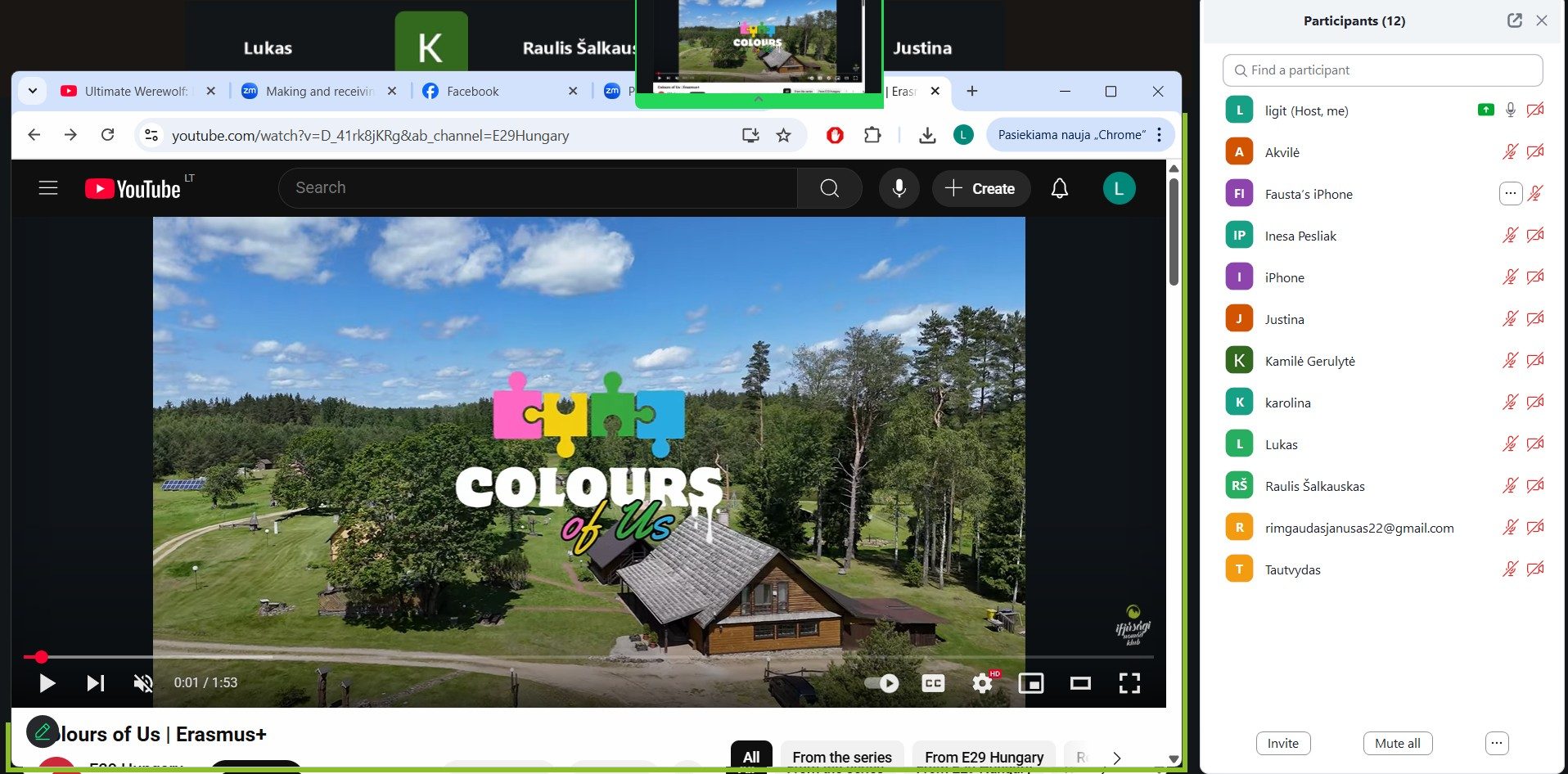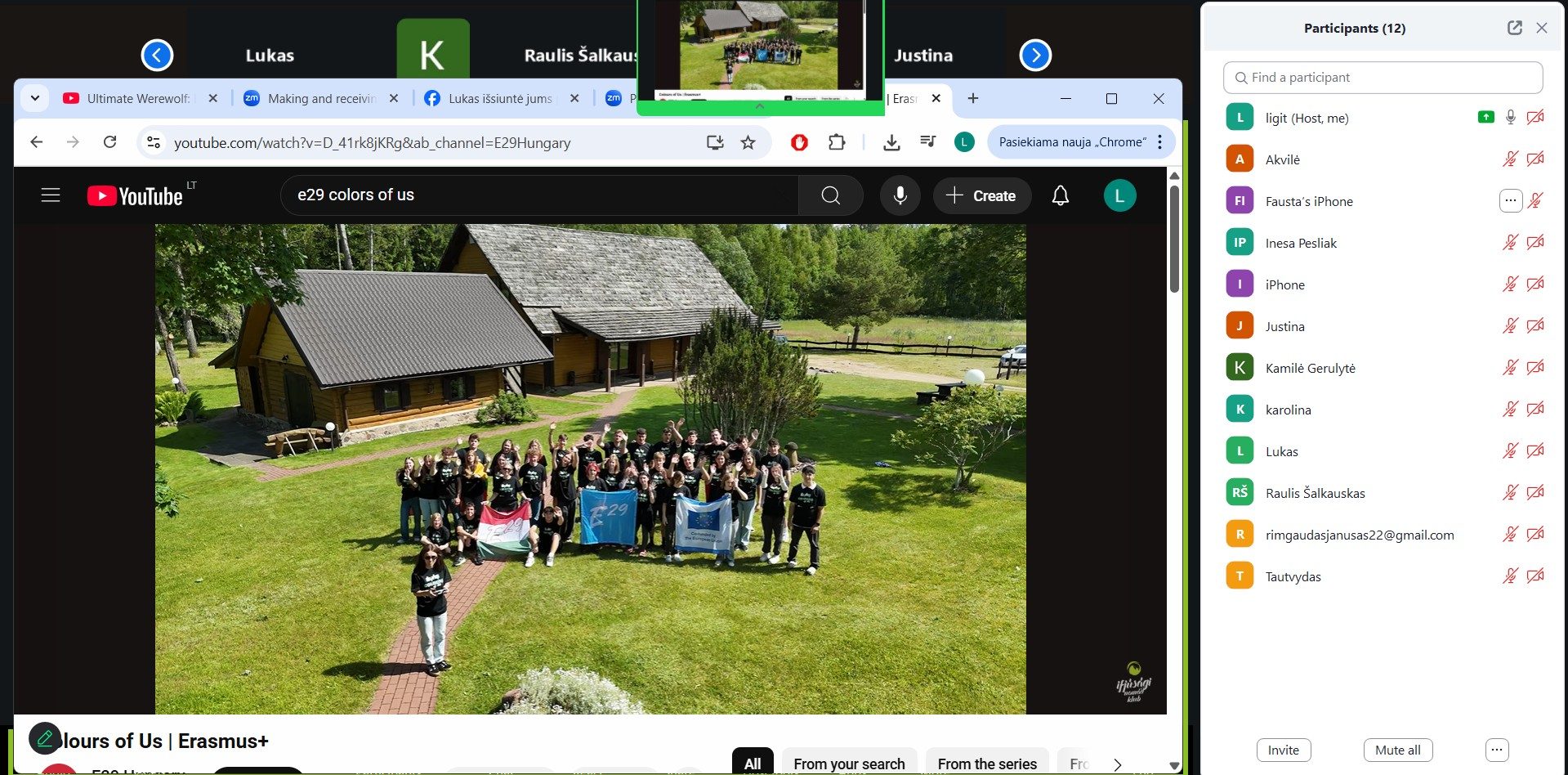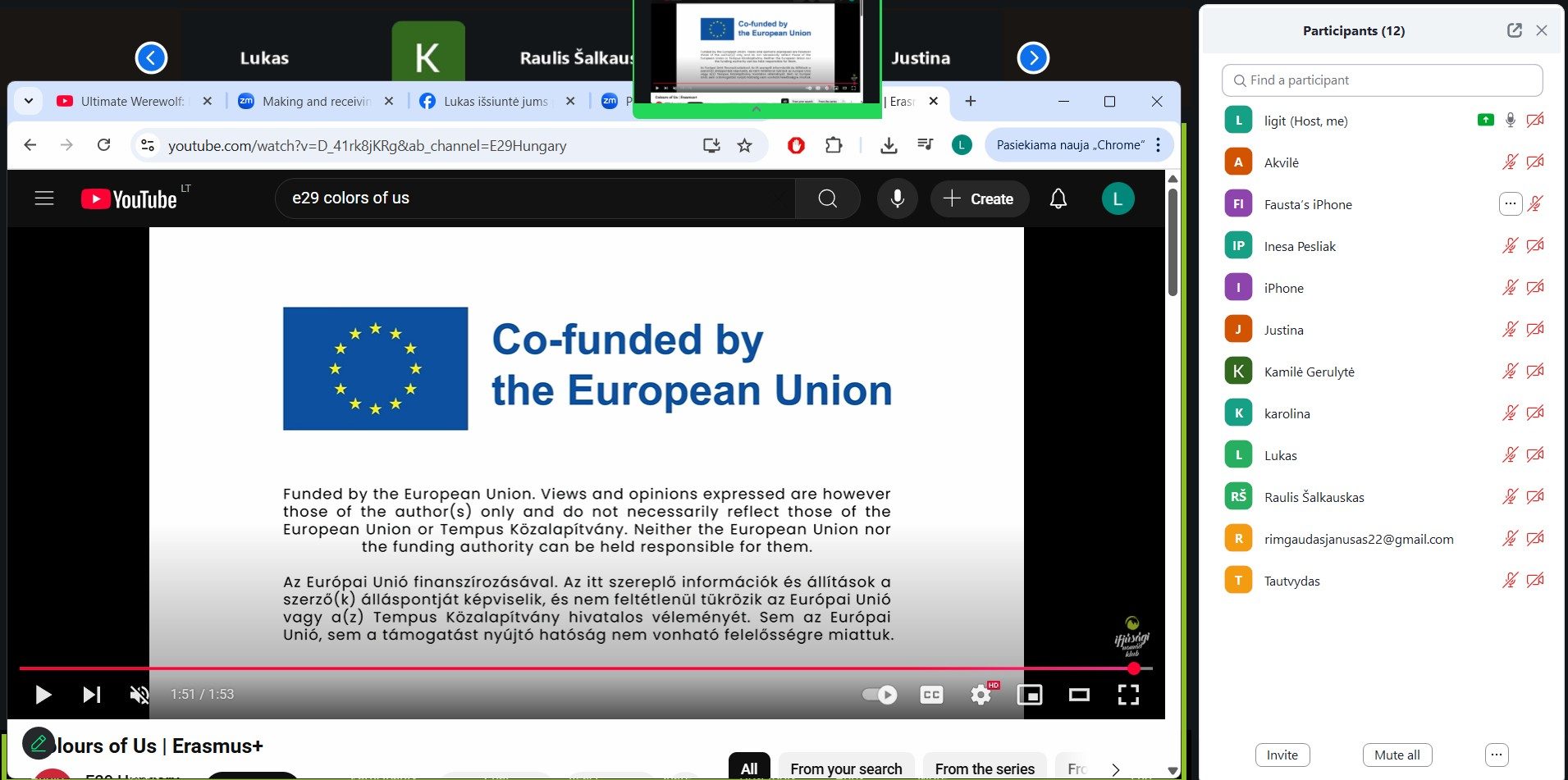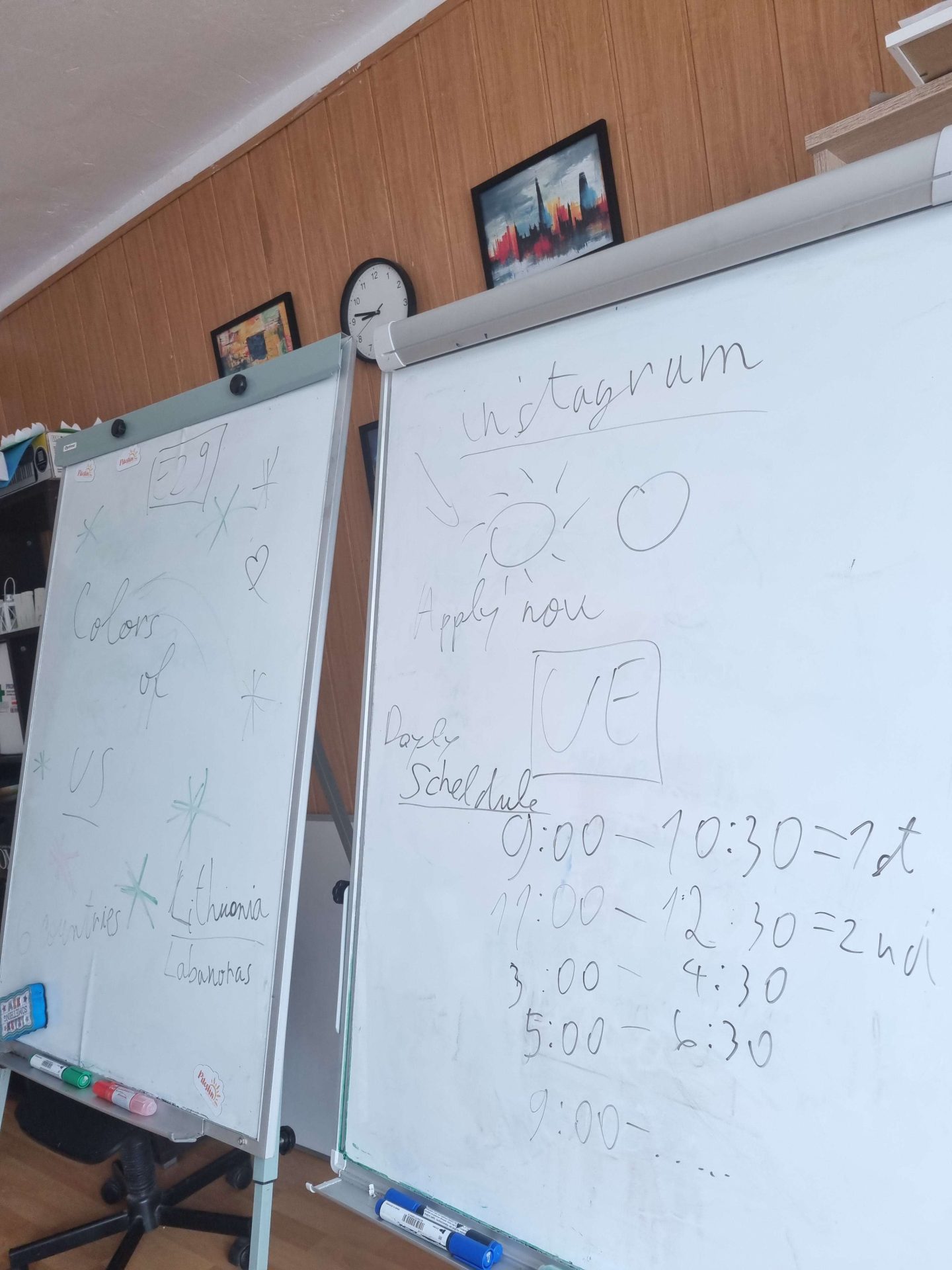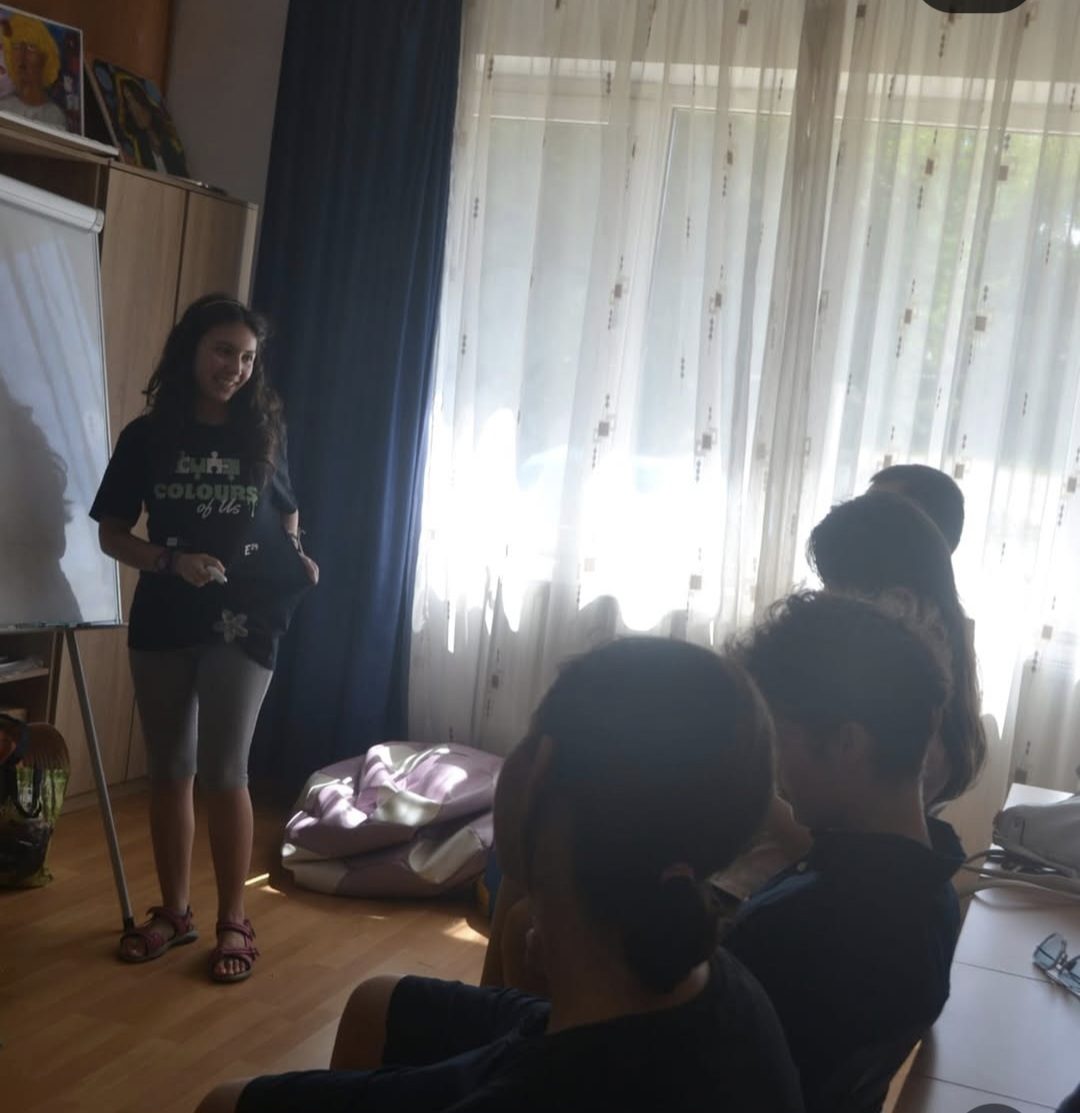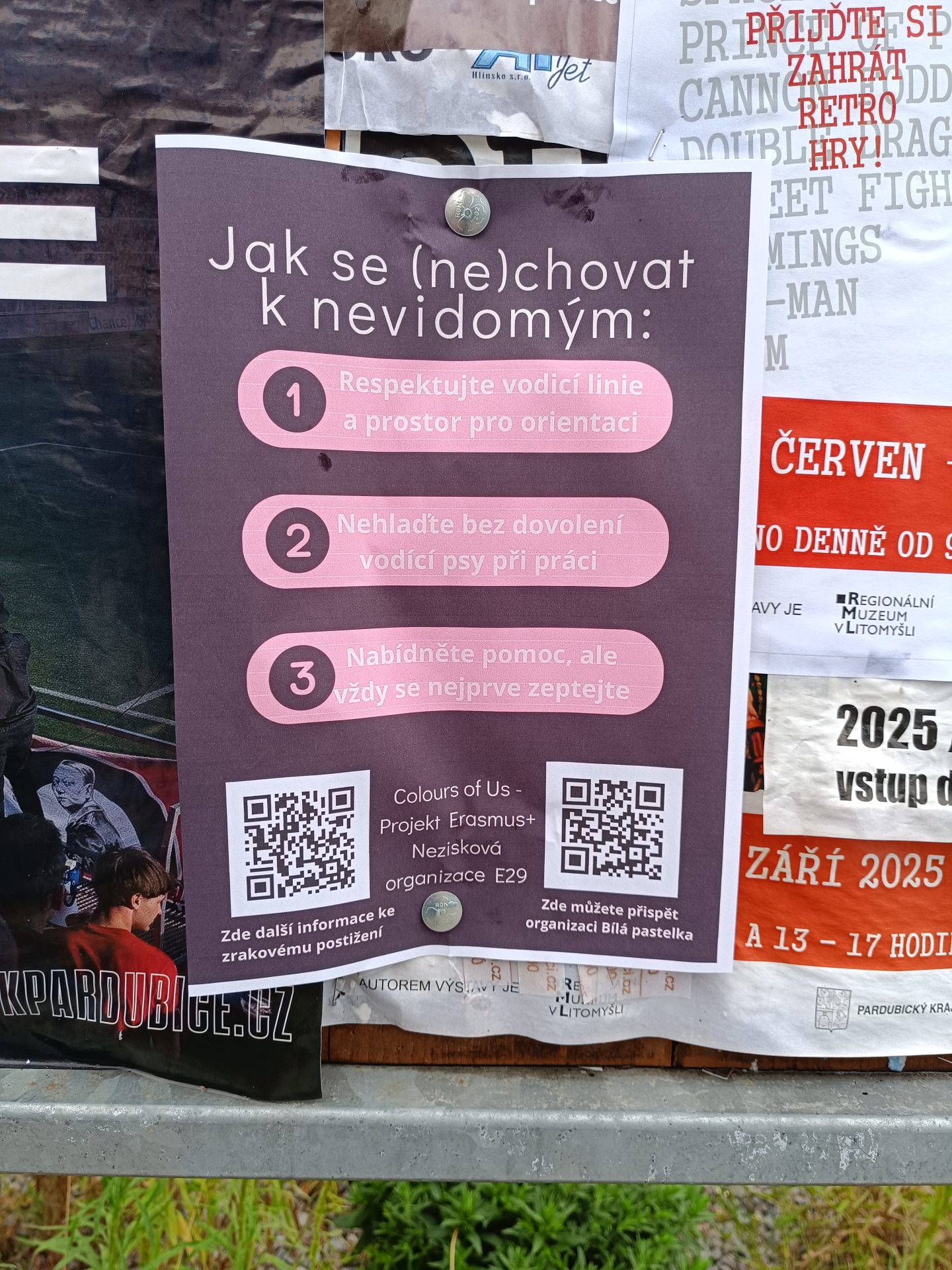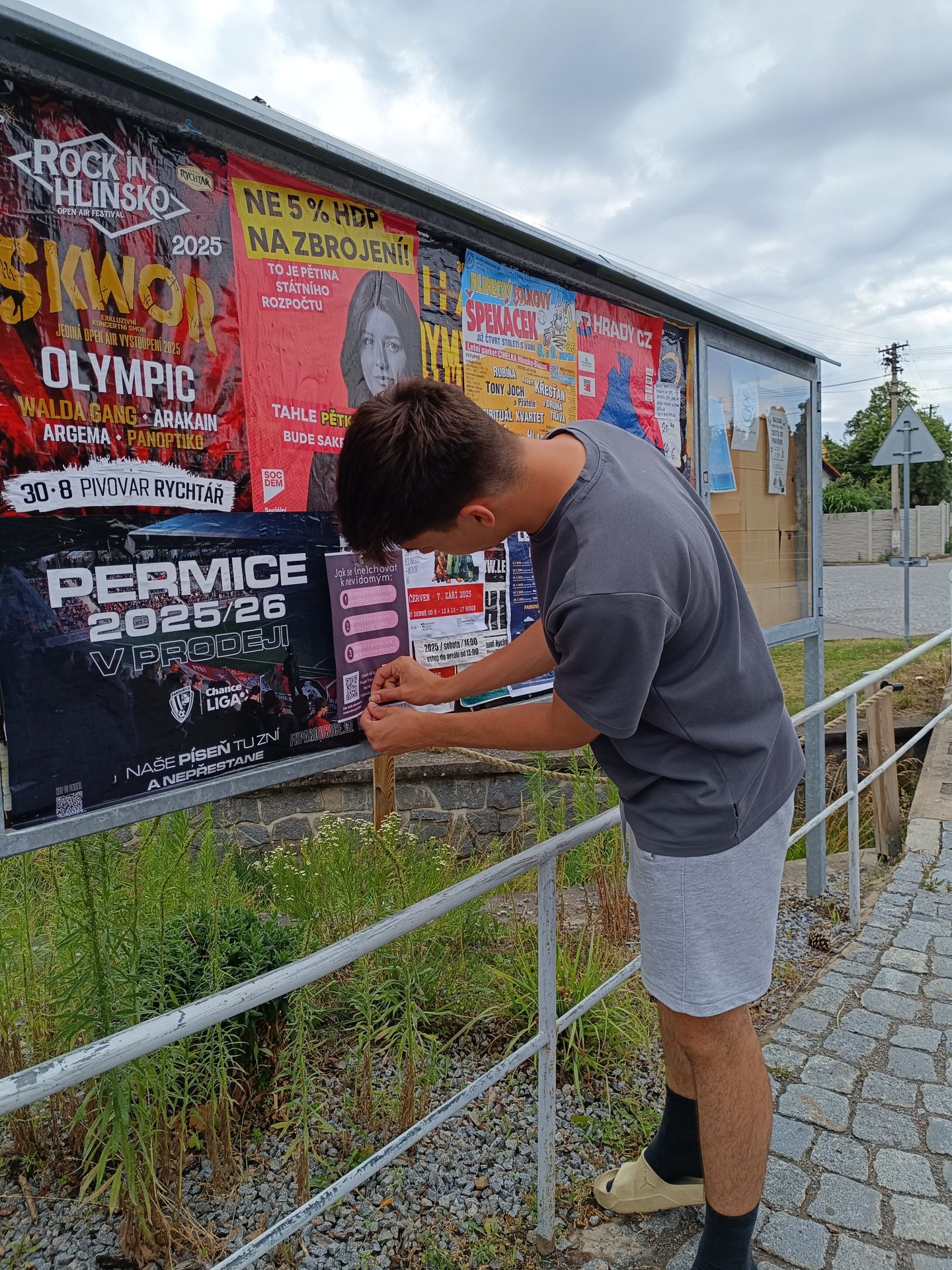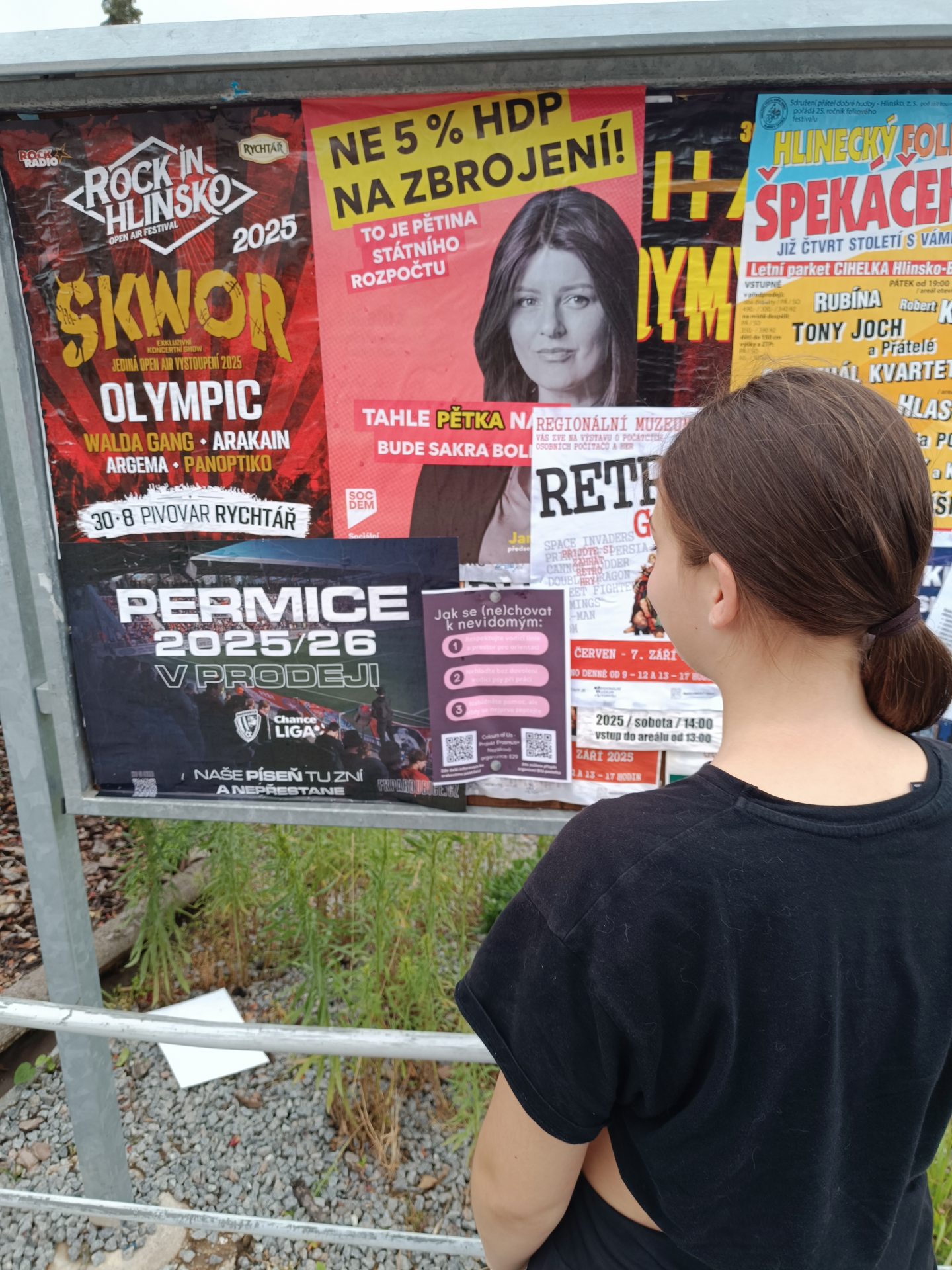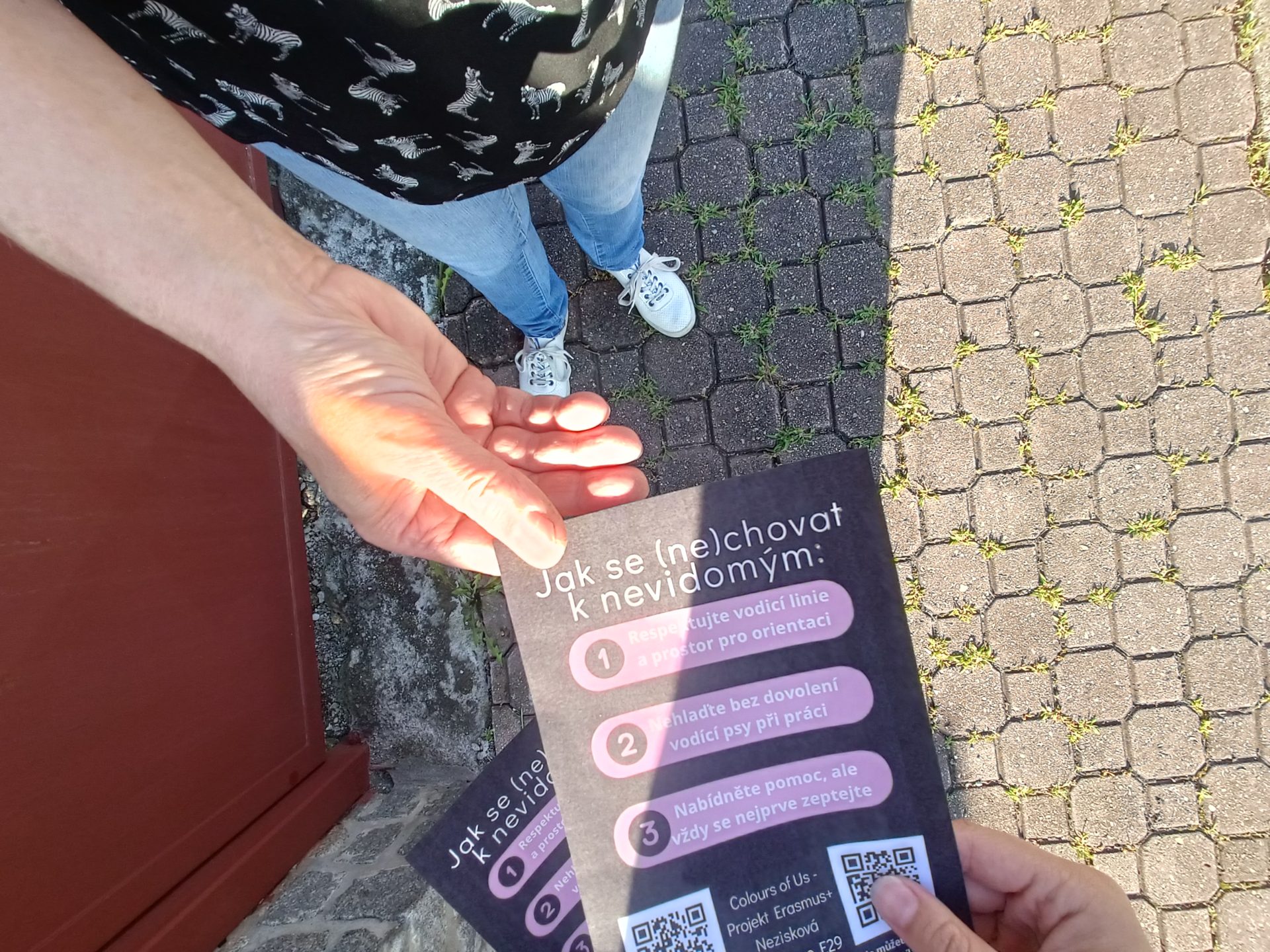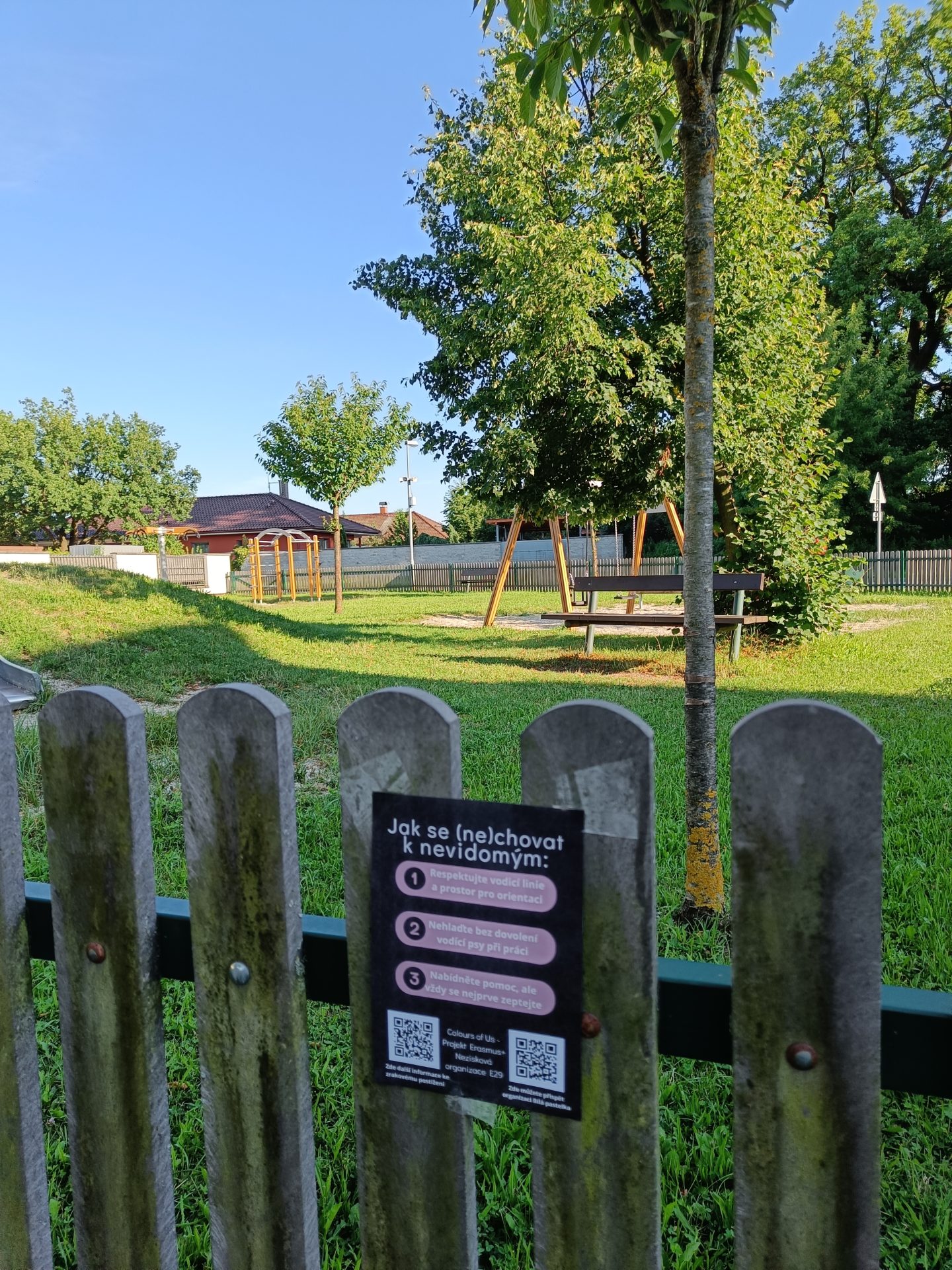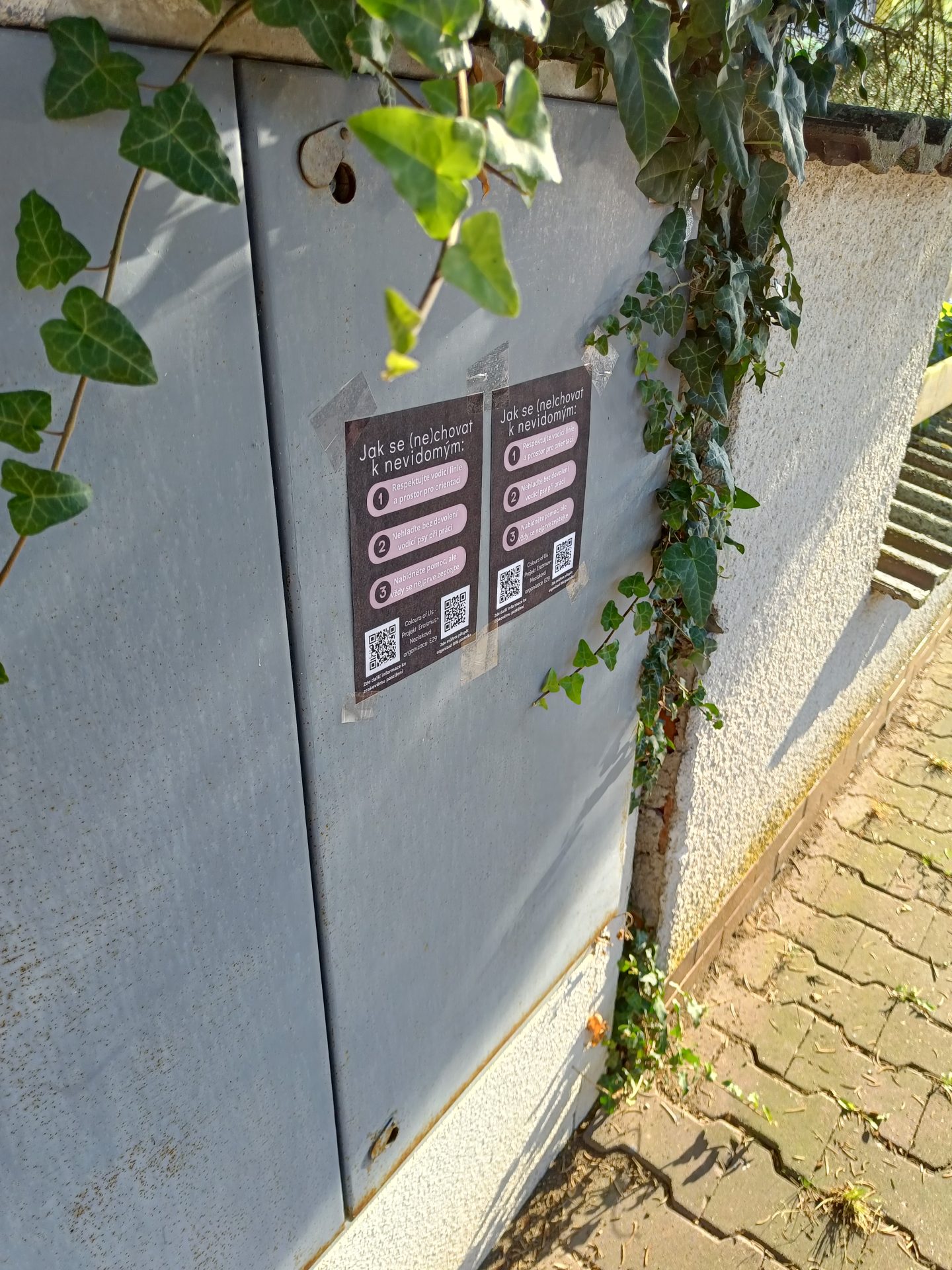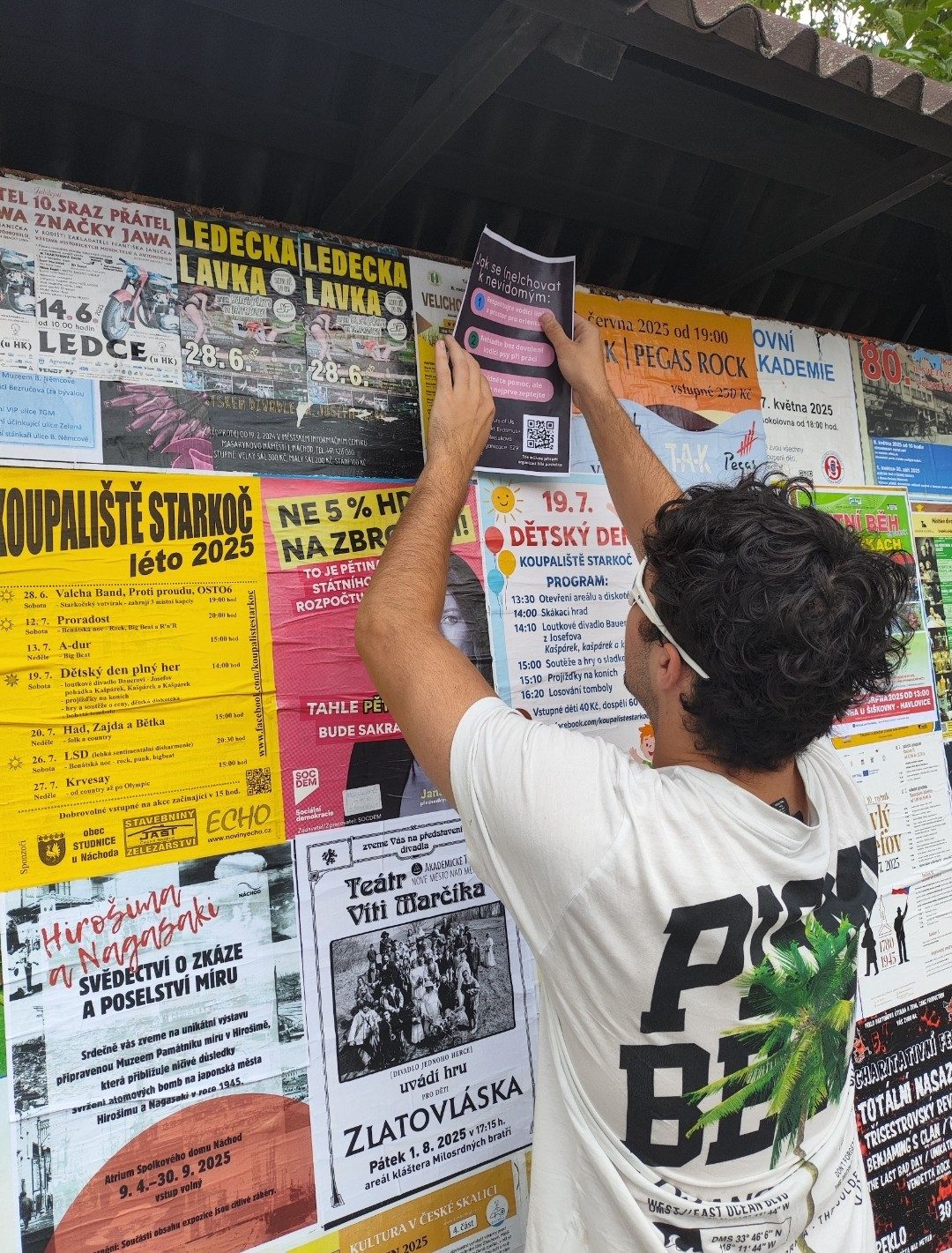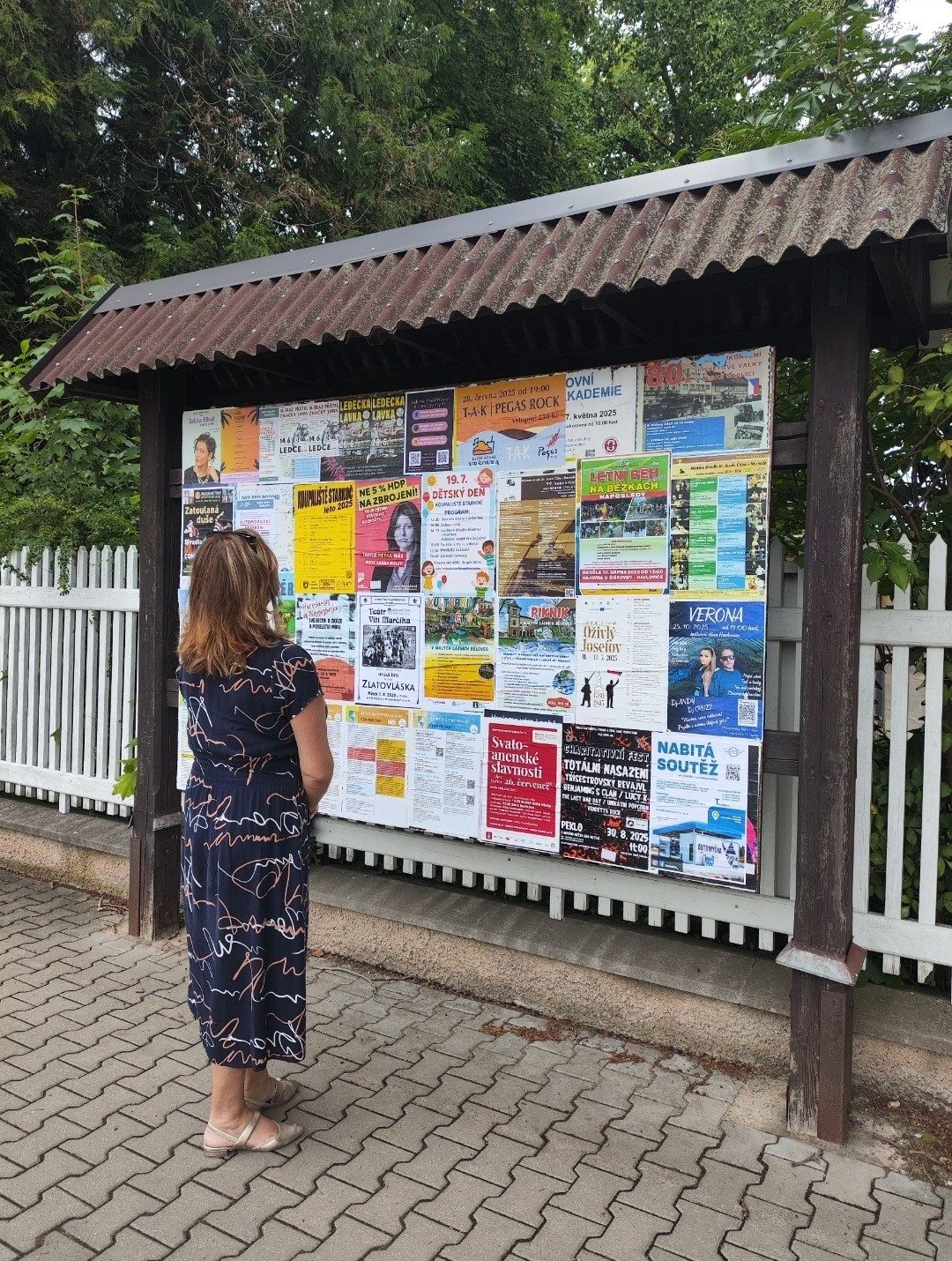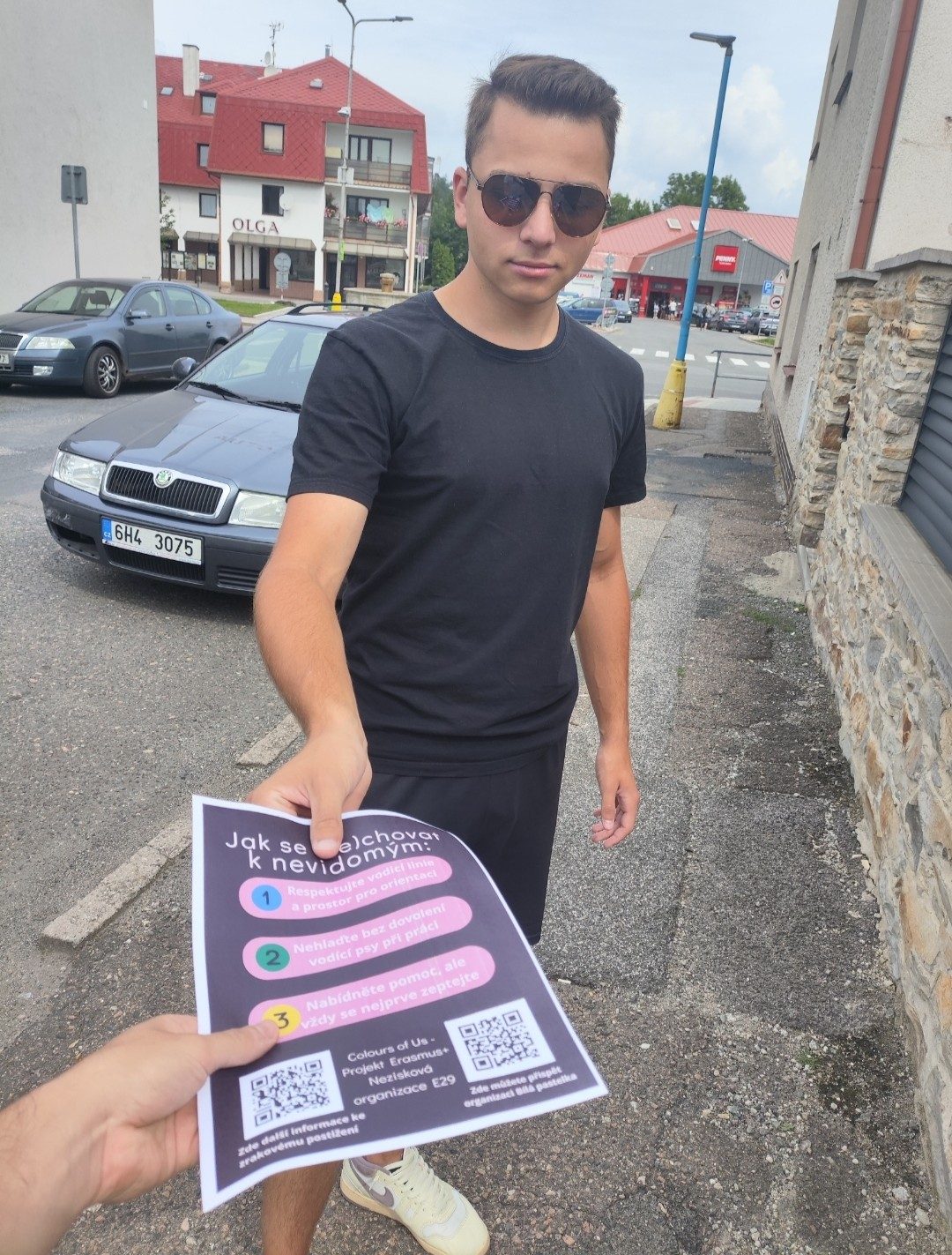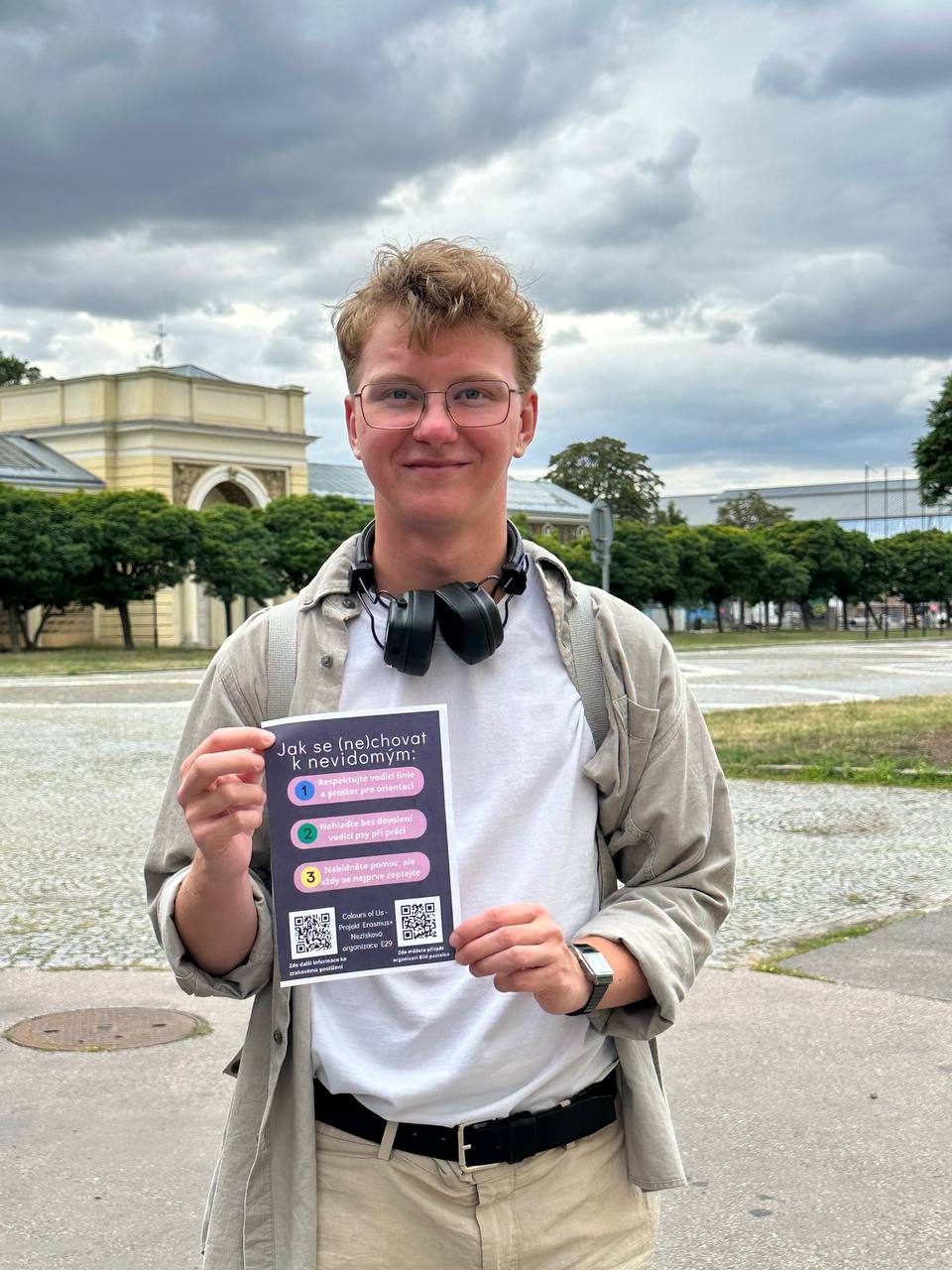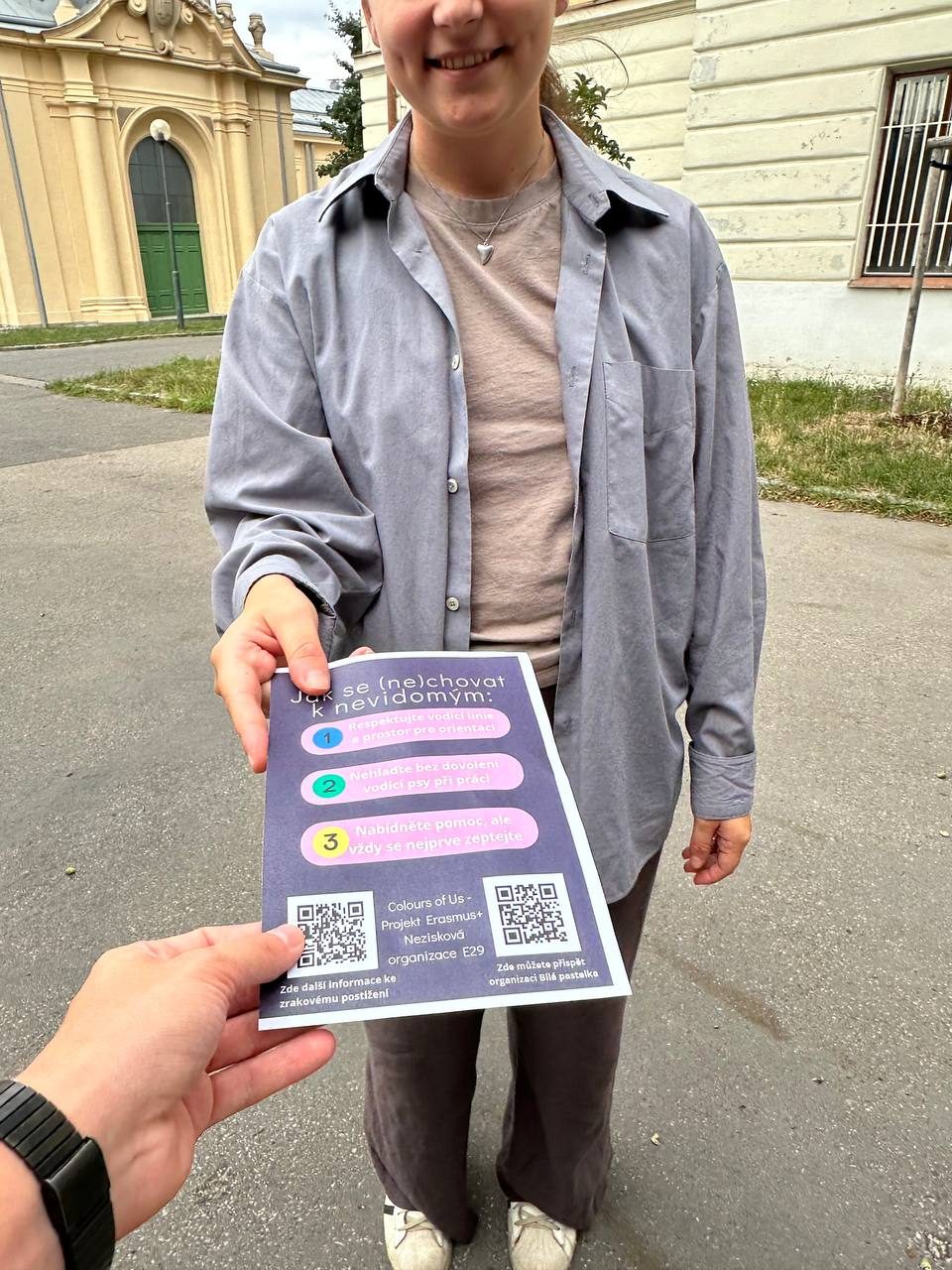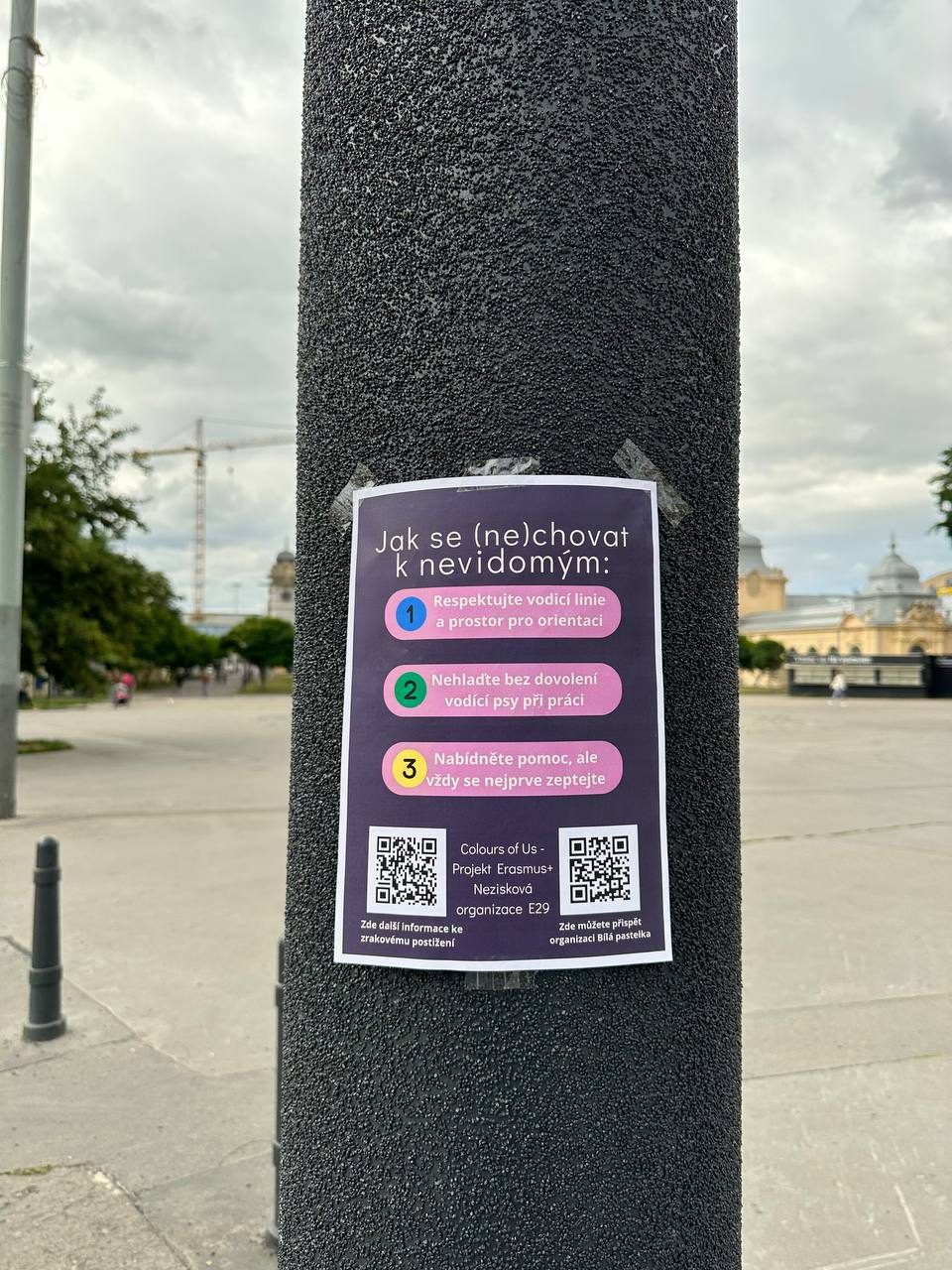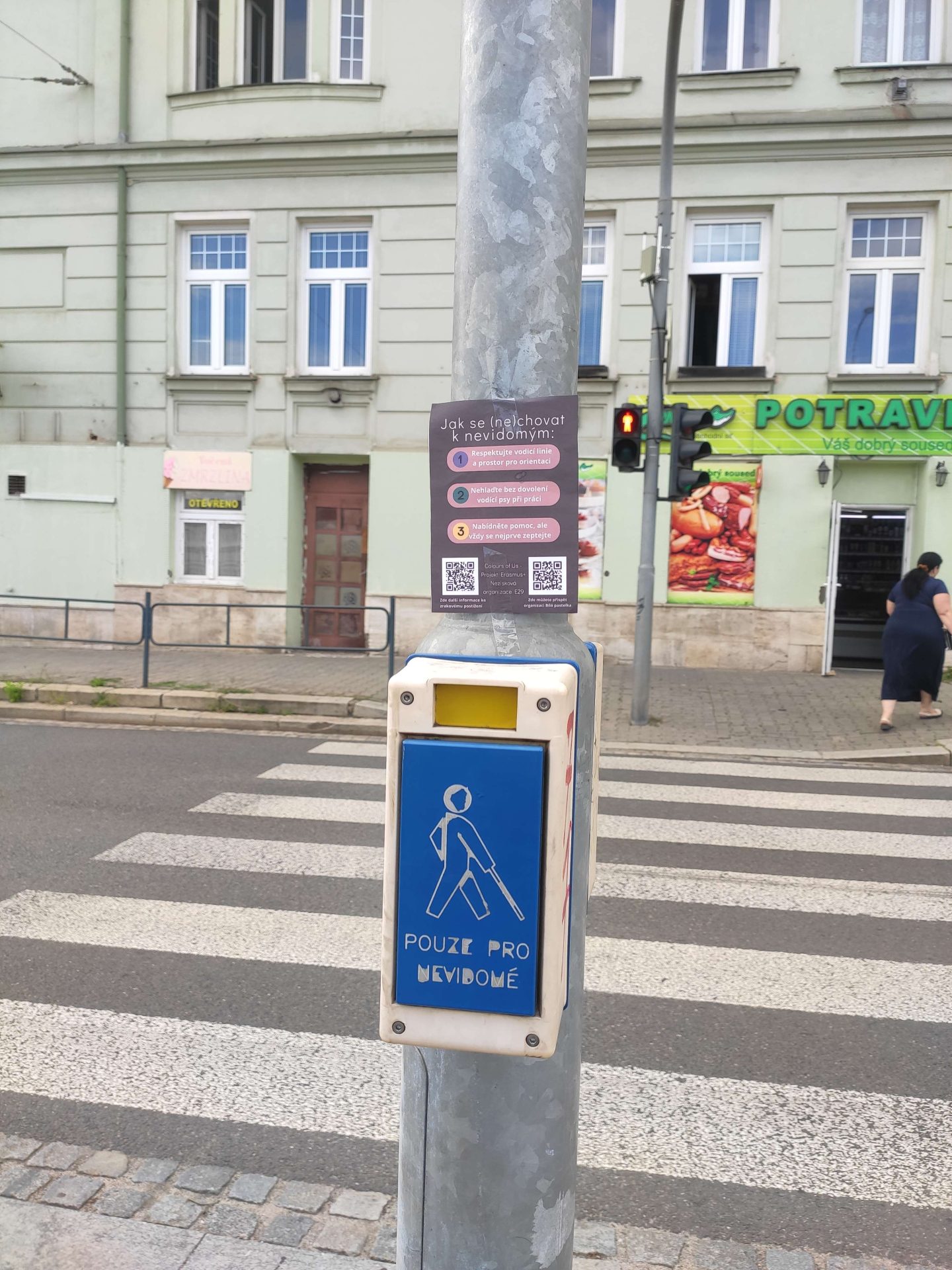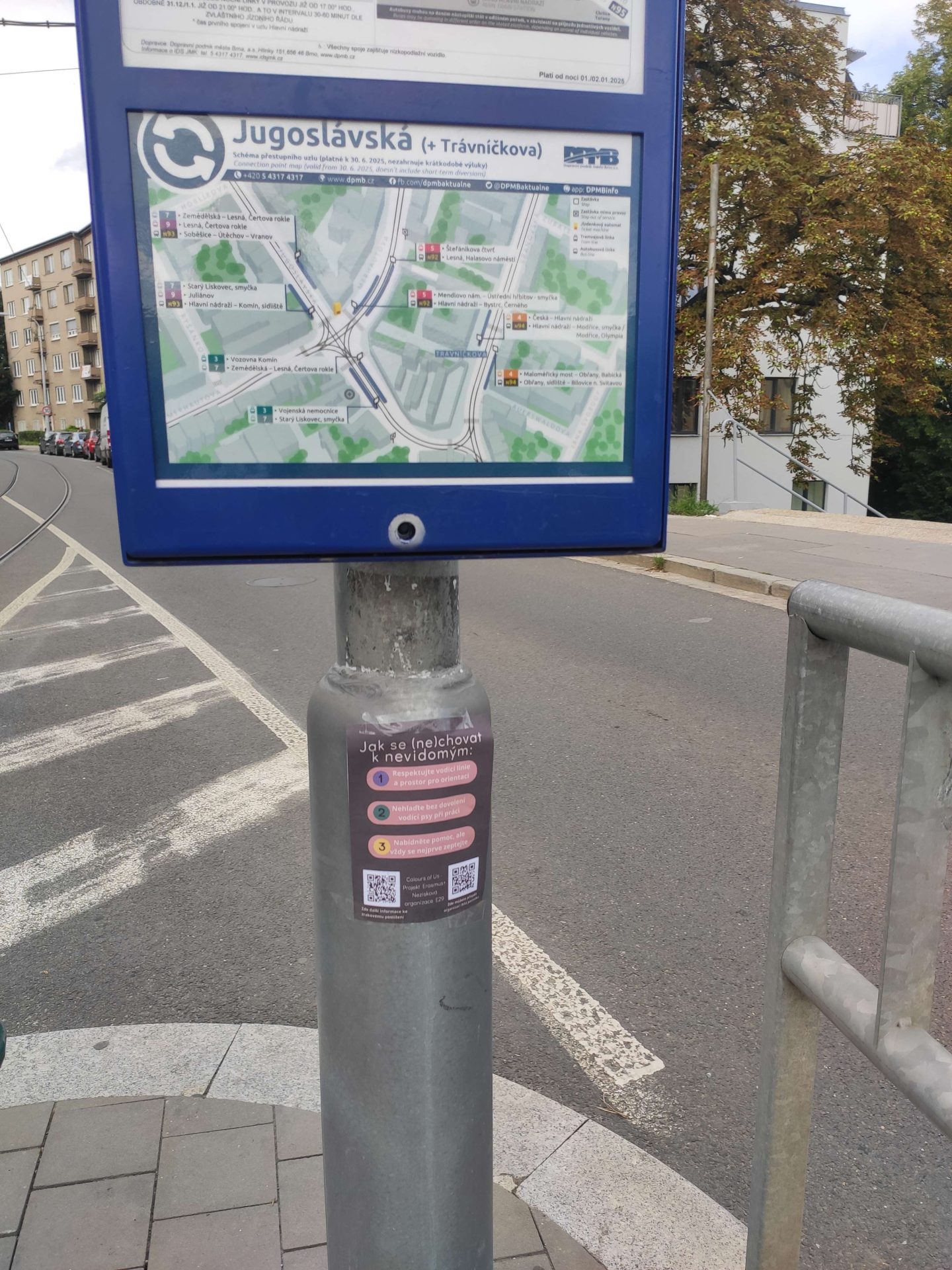Video Recap of Colours of Us
Topic
Social inclusion and diversity
Activity Dates
19.06 – 25.06.2025
Countries
🇭🇺 🇱🇹 🇵🇹 🇸🇰 🇷🇴 🇨🇿
Location
Labanoras, Lithuania
In June 2025, a diverse group of young people from 6 different countries came together in the heart of nature to take part in a meaningful and inspiring youth exchange. Set in the tranquil surroundings of Labanoras, Lithuania, Colours of Us was an activity focused on social inclusion and diversity — explored through creativity, collaboration, and the power of non-formal learning.
Learning Through Creativity
The exchange was built around the idea that inclusion is best understood when experienced, expressed, and practiced. Rather than using traditional classroom methods, the program was based on creative, non-formal educational tools that encouraged young people to learn through doing, sharing, and reflecting.
Participants took part in a range of hands-on workshops designed to open conversations about identity, culture, equality, and empathy. These included:
-
Theatre play: Through drama and improvisation, participants created scenes inspired by real-life experiences of exclusion, prejudice, and acts of solidarity. These performances sparked deep reflection and emotional connection within the group.
-
Video making: Working in small teams, participants developed short films focused on themes like diversity, inclusion, and personal identity. This activity offered both technical skills and a powerful medium for storytelling.
-
Clay workshop: A tactile and grounding activity, the clay session allowed participants to reflect on inclusion by sculpting symbolic shapes and figures representing their values and experiences.
-
Drawing and painting: Throughout the week, visual art was used as a tool for expression, with participants contributing to a collaborative “Wall of Diversity” — a mural filled with symbols, messages, and hopes for a more inclusive world.
-
Flipchart-making and visual presentations: Teams visually explored social topics such as privilege, accessibility, equity, and stereotypes. These sessions encouraged critical thinking, discussion, and group problem-solving.
Celebrating Culture and Building Community
Each evening, the energy shifted from workshops to celebration with Intercultural Evenings hosted by national teams. These evenings were an explosion of music, dance, traditional food, games, and storytelling — an opportunity to learn about each other’s cultures in a joyful and inclusive way.
Participants didn’t just share customs; they built bridges. Laughter, dancing, and trying new things became the common language. These nights helped strengthen the bonds within the group and added a layer of fun and cultural richness to the whole experience.
Fostering Equality and Empathy
From the beginning, the youth exchange emphasized the importance of creating a safe, respectful, and inclusive environment. Group agreements, reflection circles, and daily check-ins helped ensure that everyone felt heard, supported, and valued. Facilitators encouraged open dialogue and created space for honest sharing.
The activities were designed to not only raise awareness but to practice empathy and equality in daily interactions. Whether it was helping someone translate a task, checking in with a teammate, or simply listening without judgment — small acts of care and solidarity shaped the tone of the entire week.
Lasting Impact
As the days passed, participants opened up, grew more confident, and began seeing inclusion not just as a topic, but as a way of being. Many shared that this exchange was their first experience of feeling truly accepted in an international group. Others spoke about discovering new perspectives, talents, and friendships that transcended language or background.
At the end of the program, participants developed action plans to take the lessons from Labanoras back to their own communities — from organizing inclusive events to running awareness campaigns at school or in youth groups.
Conclusion
Colours of Us was more than a youth exchange — it was a living example of what inclusive, diverse communities can look like. In the stillness of the forest, surrounded by nature, young people created a vibrant, supportive, and creative space where everyone was welcome and every voice mattered.
Results
Some of the cool things we did during this activity:
Creative flipcharts created during the activity
Clay Workshop
The clay session offered a hands-on way for participants to express their values and reflect on inclusion through symbolic shapes.
Inclusion Through the Lens
In this session, participants worked in small groups, each focusing on a different disability: blindness, deafness, muteness, physical disability, or autism. Their task was to create a short video showing daily life from that perspective and how others can offer support in inclusive and respectful ways.
Blindness
Photo Gallery
A few more moments from this activity :)
Dissemination Events
Our participants actively shared the knowledge, skills, and experiences gained during the activities through various dissemination and exploitation efforts within their communities.
Partizanske, Slovakia, June 2025
Simon held a dissemination session at an English Language Café in Slovakia for 10 people, where he shared his experience from the youth exchange, presented the final video, discussed inclusion and diversity topics, and introduced E29 network and Erasmus+ opportunities.
Svencionys, Lithuania, June 2025
Dissemination by Gerda at home, sharing her activity experience with 3 family members.
Lisbon, Portugal, July 2025
Budapest, Hungary, July 2025
Boglarka, Zsombor, Patrik, Zalan, Tunde, Dorottya, Laura and Noemi held a dissemination at Margaret Island, reaching around 24 people, where they discussed inclusion and screened the final video of the youth exchange.
Pitesti, Romania, July 2025
Dissemination held by Antonia at Tucano Coffee, presented to 2 friends.
Kosice, Slovakia, July 2025
Barbora and Pavol gathered 10 friends for a presentation where they introduced the E29 network, shared their activity experience, showed photos and the final video, and answered questions about how to get involved.
Orlov, Slovakia, July 2025
Dissemination by Martin at his scout camp to 20 young people, where he shared his experience from the youth exchange, explained how to find more information about Erasmus+ activities, and held a Q&A with interested peers.
Bratislava, Slovakia, July 2025
Dissemination by Michal at Community Centre Centrum Rodiny for 12 people, where he introduced the activity and Erasmus+ through a short presentation and shared the final video.
Kalvarija, Lithuania, July 2025
Dissemination by Deimas, Kostas, Leja and Vilte, they presented the activity to 20 people using slides, photos, and a video to share their experience and explain the main themes of the activity.
Online, Romania, July 2025
Dissemination by Daniel in an online session with 15 friends, sharing his Erasmus+ experience and encouraging participation in future opportunities.
Kaunas, Lithuania, July 2025
Dissemination by Ligita during an online session with 11 friends, where she showed the final movie, talked about the sessions and her personal experience, and answered all their questions about Erasmus+ and E29 network.
Pitesti, Romania, July 2025
Dissemination by Ariana at the Youth Center in Pitesti, to 4 friends.
Prosetin, Czechia, July 2025
Dissemination by Lukas who designed a poster in Canva about how to act towards blind people and displayed it on the bulletin board at his local town square.
České Budějovice, Czechia, July 2025
Česká Skalice, Czechia, July 2025
Dissemination by Matej through flyer distribution across the city of Česká Skalice.
Prague, Czechia, July 2025
Dissemination by Simon through flyer distribution across the Stromovka Park.
Brno, Czechia, July 2025
Dissemination by Kristyna through flyer distribution across the city of Brno.

Funded by the European Union. Views and opinions expressed are however those of the author(s) only and do not necessarily reflect those of the European Union or Tempus Közalapítvány. Neither the European Union nor the funding authority can be held responsible for them.

